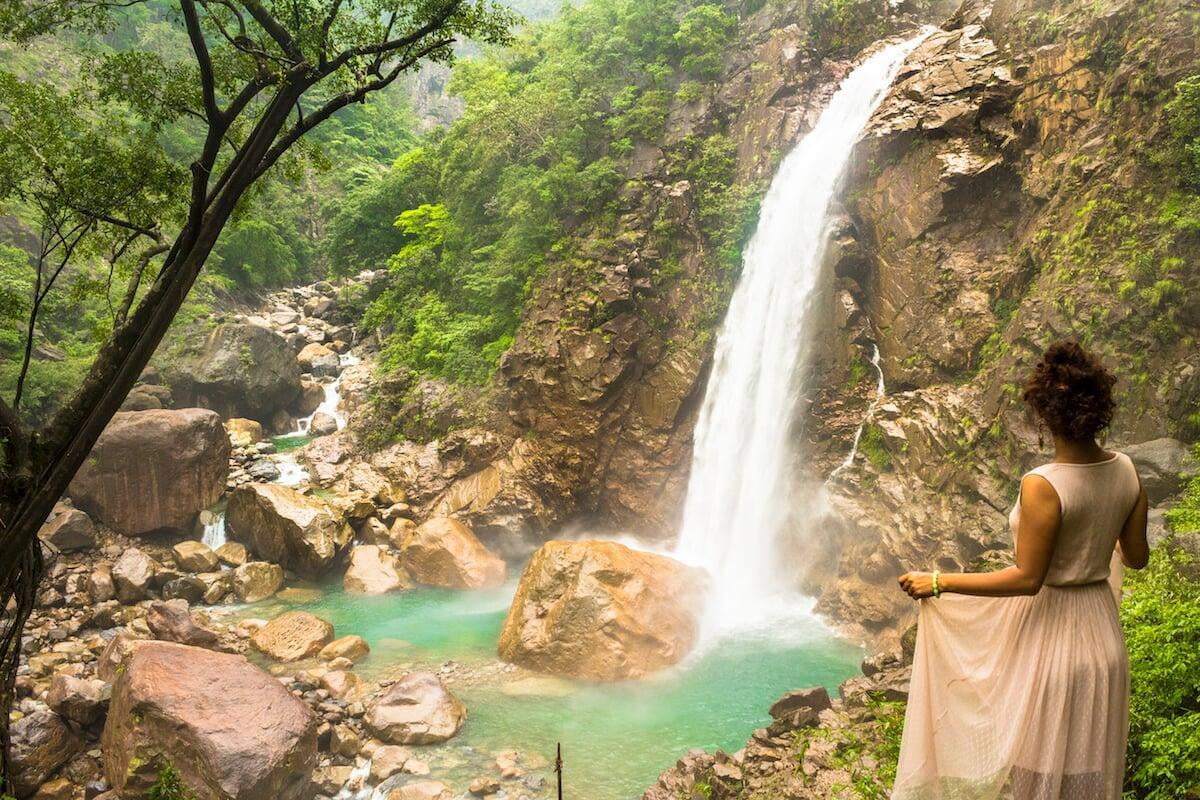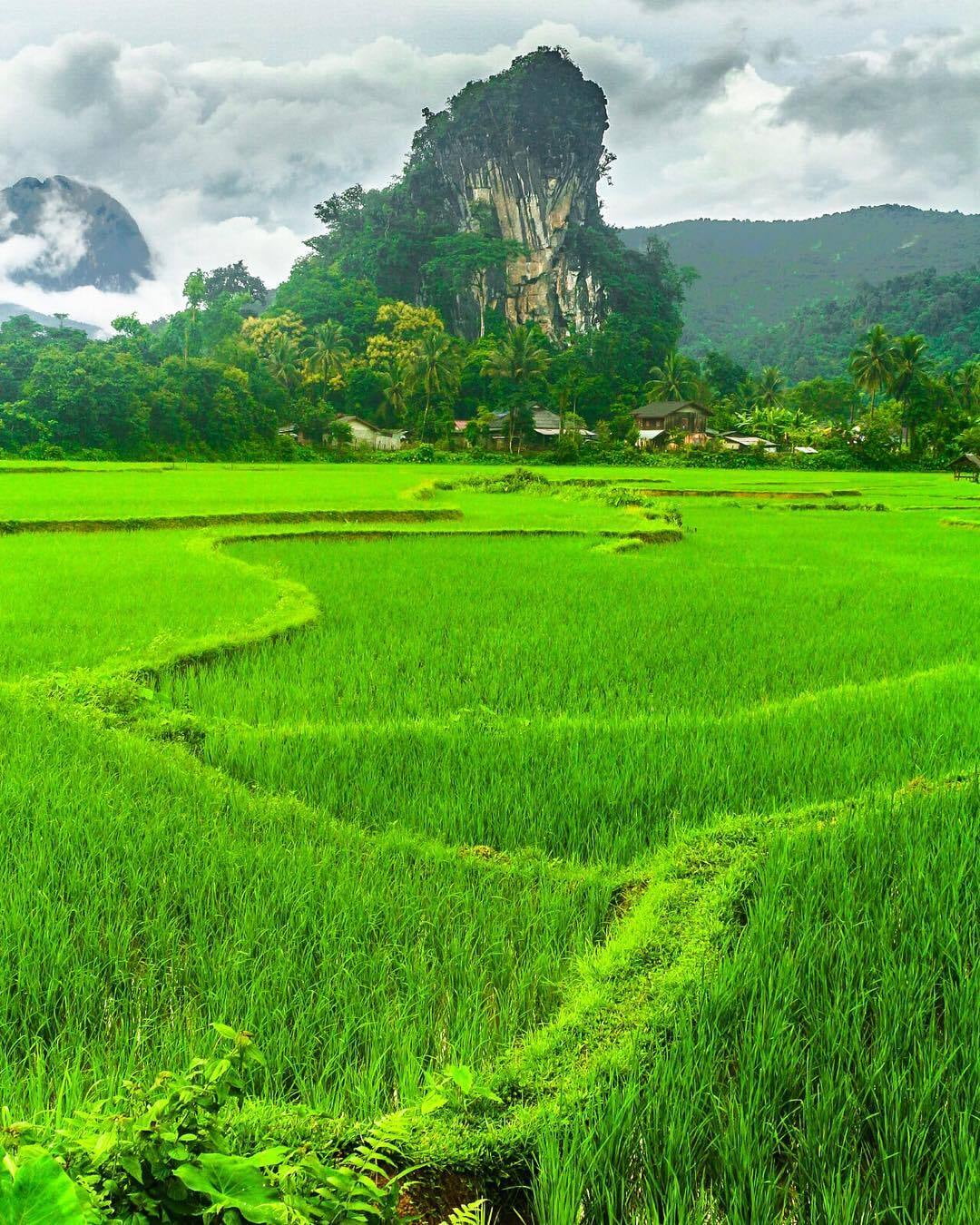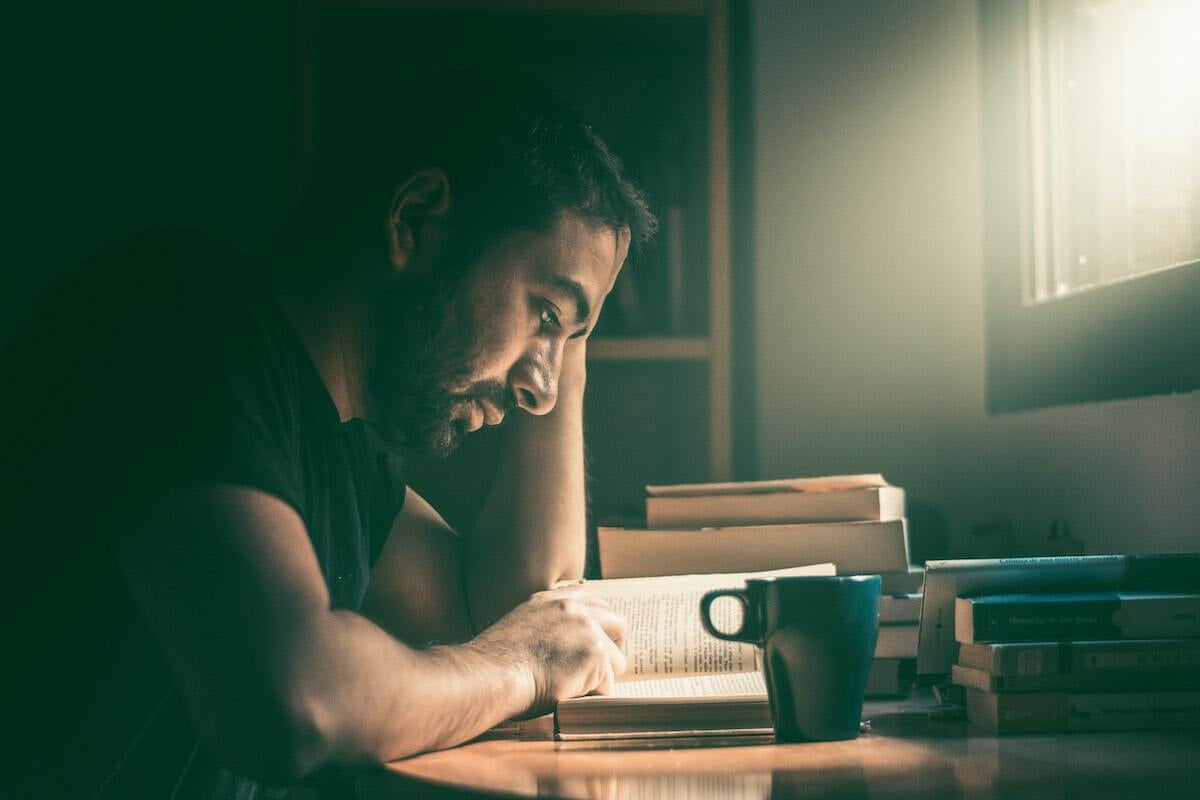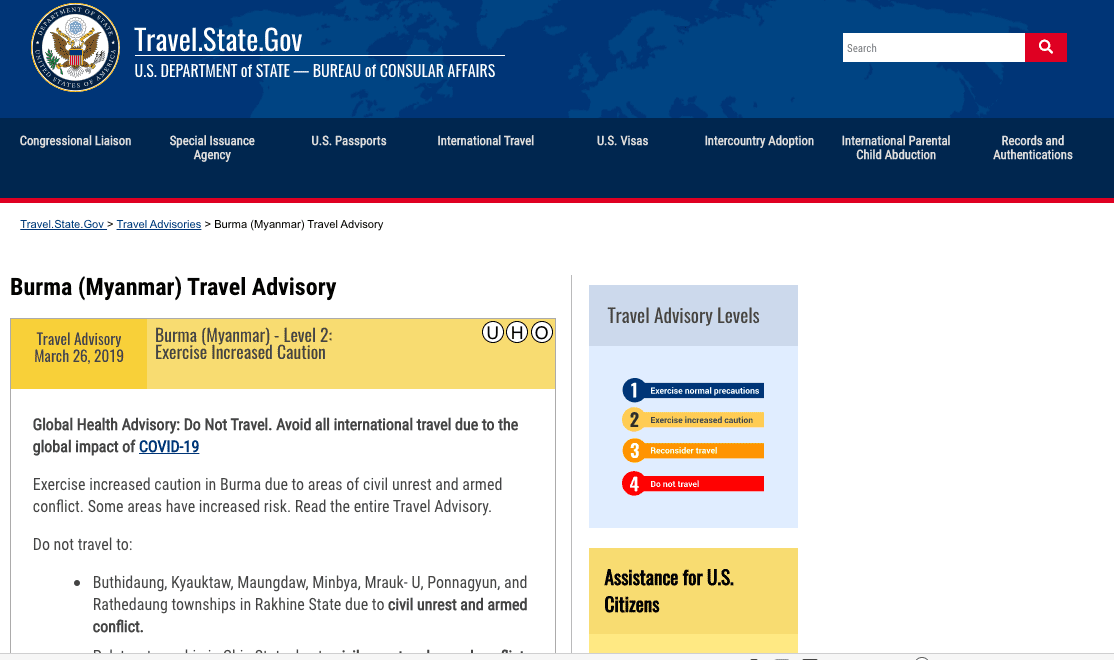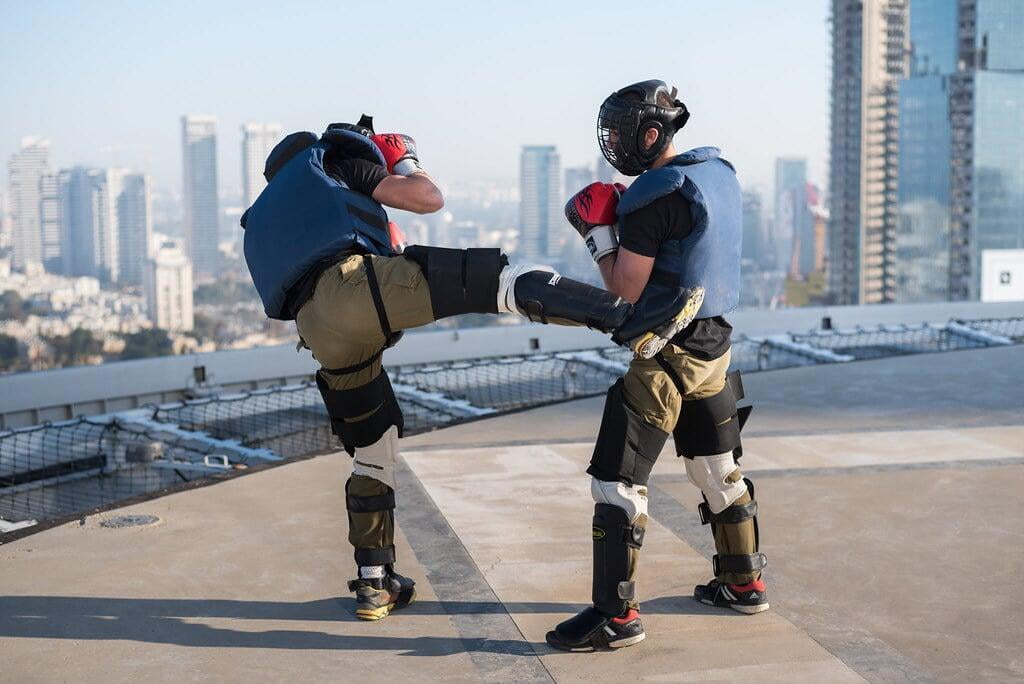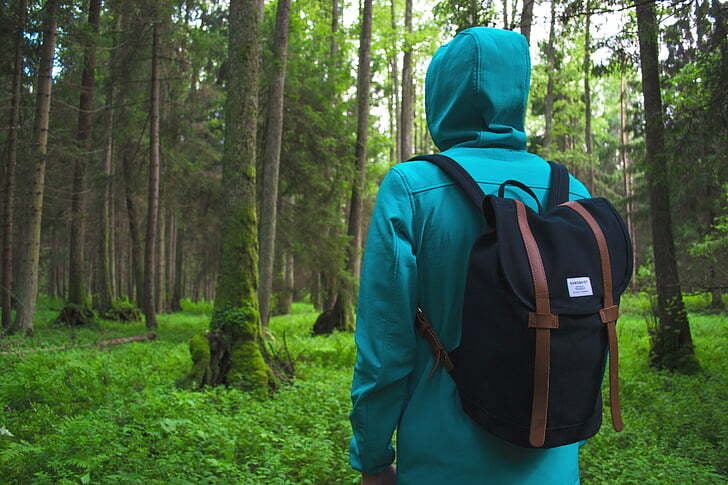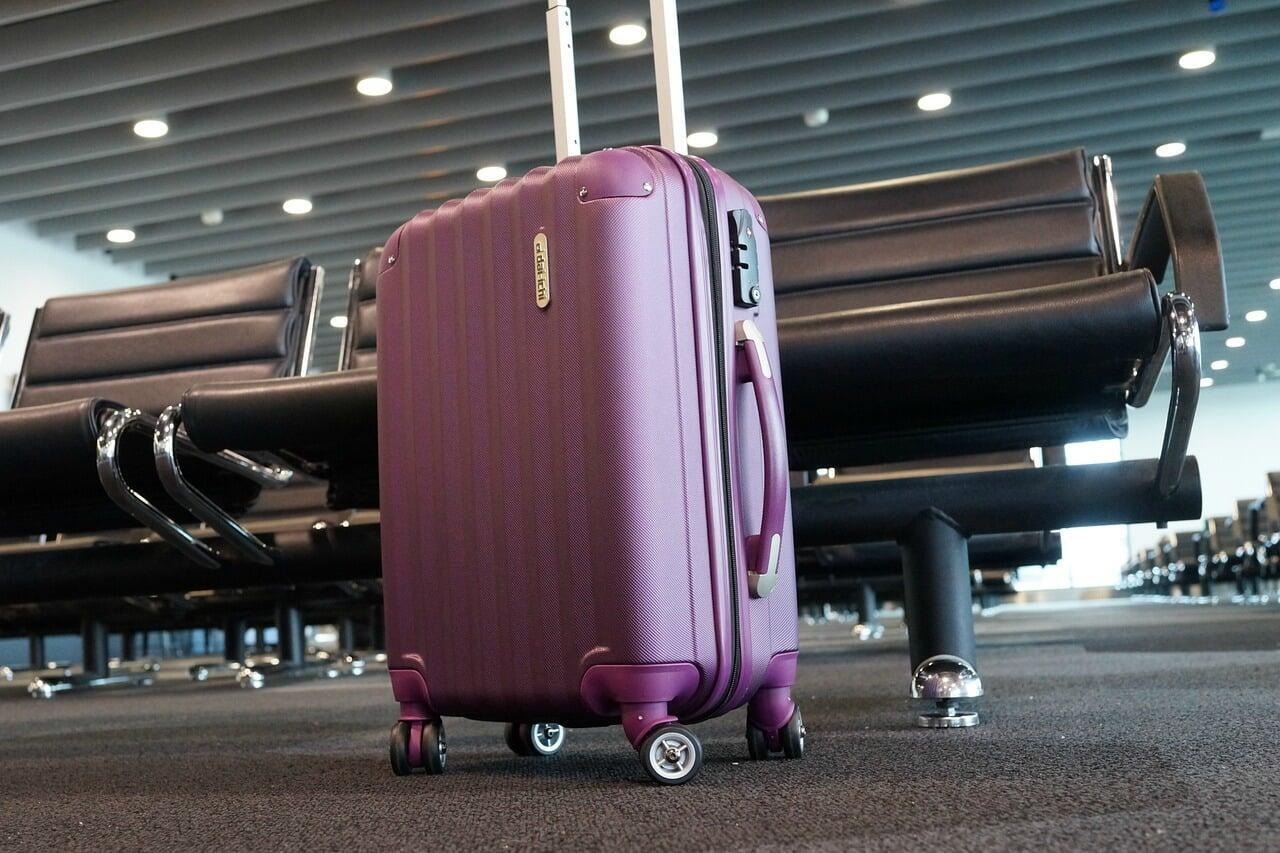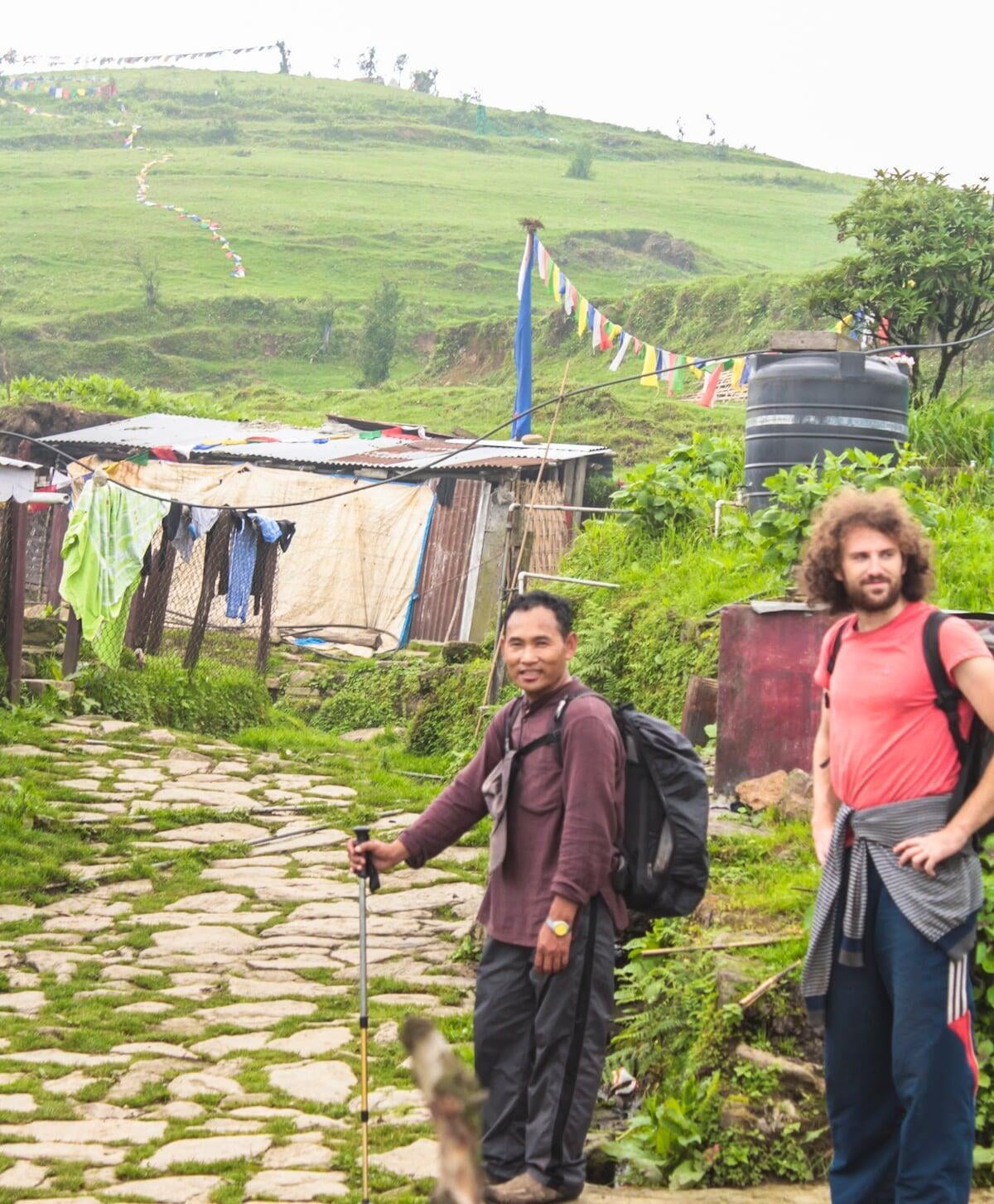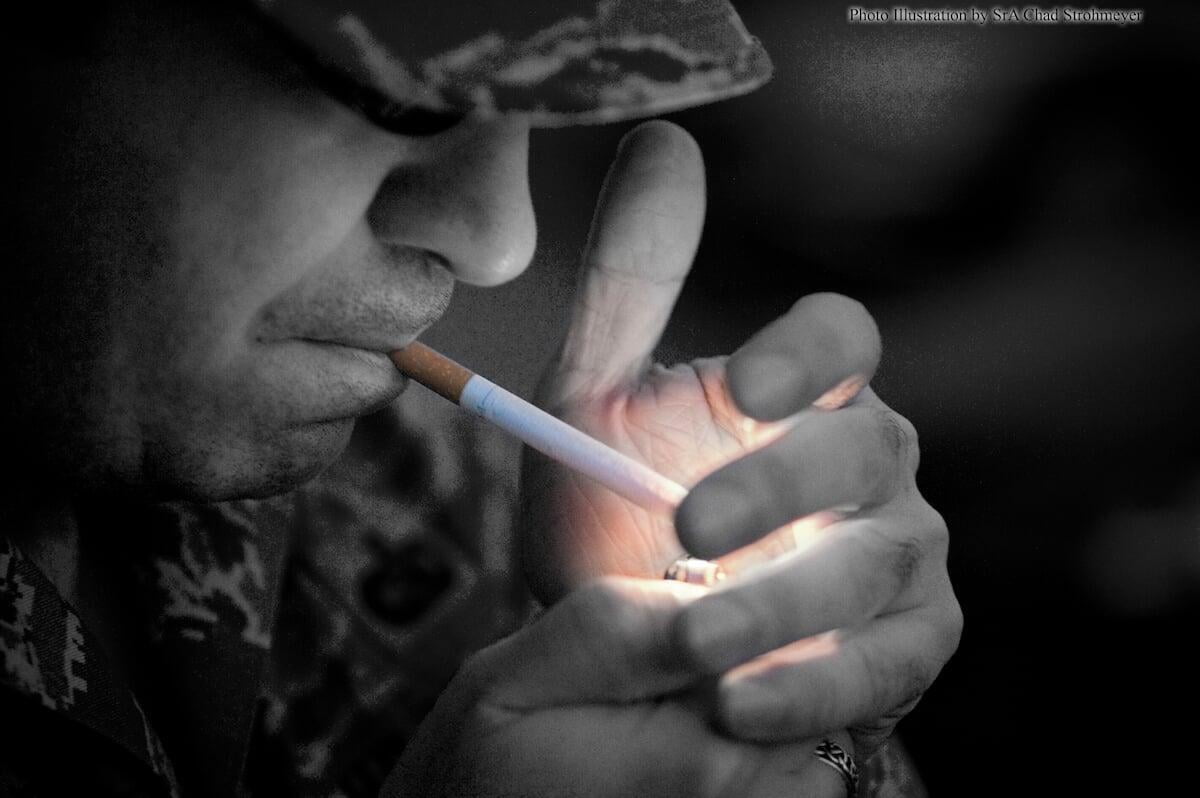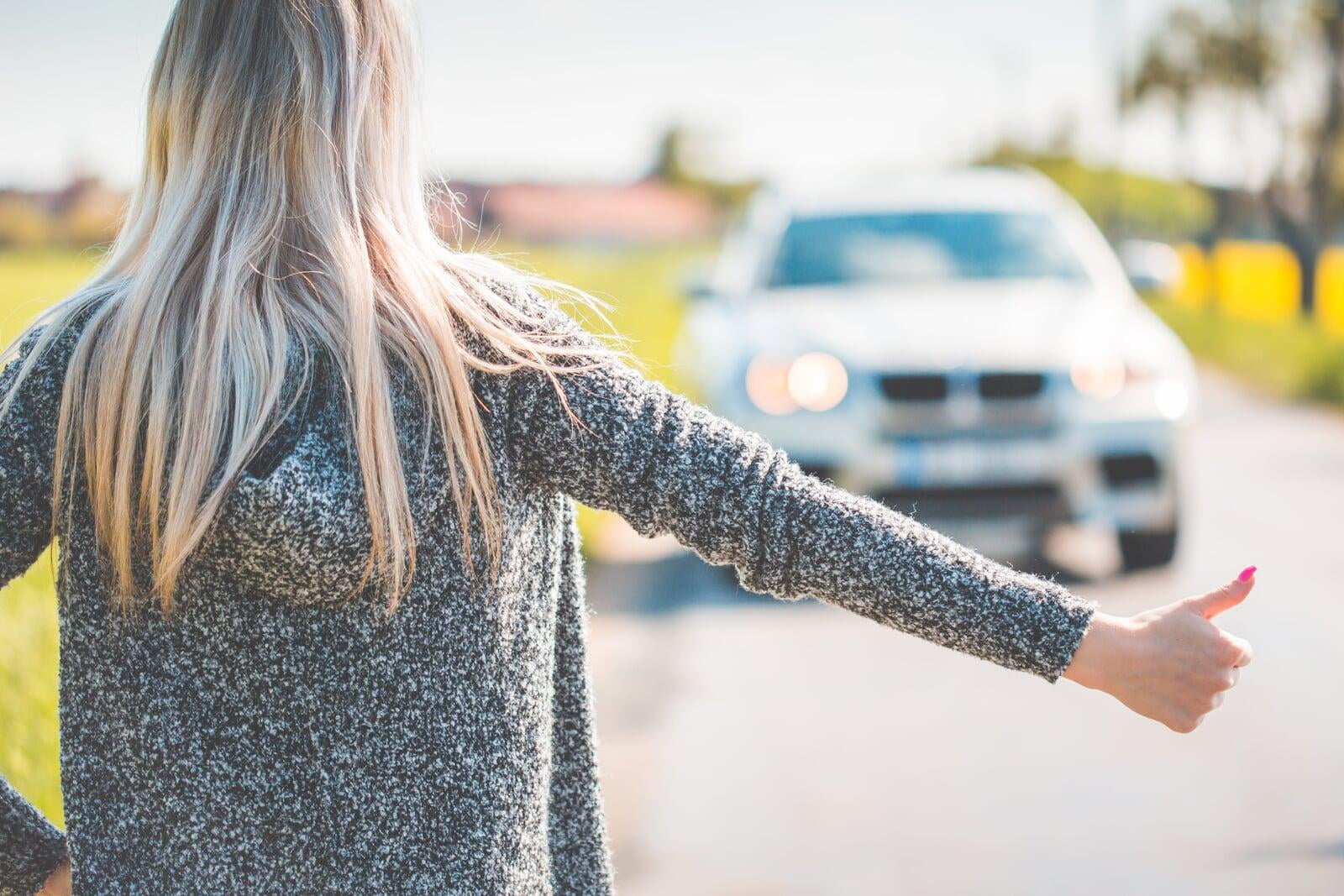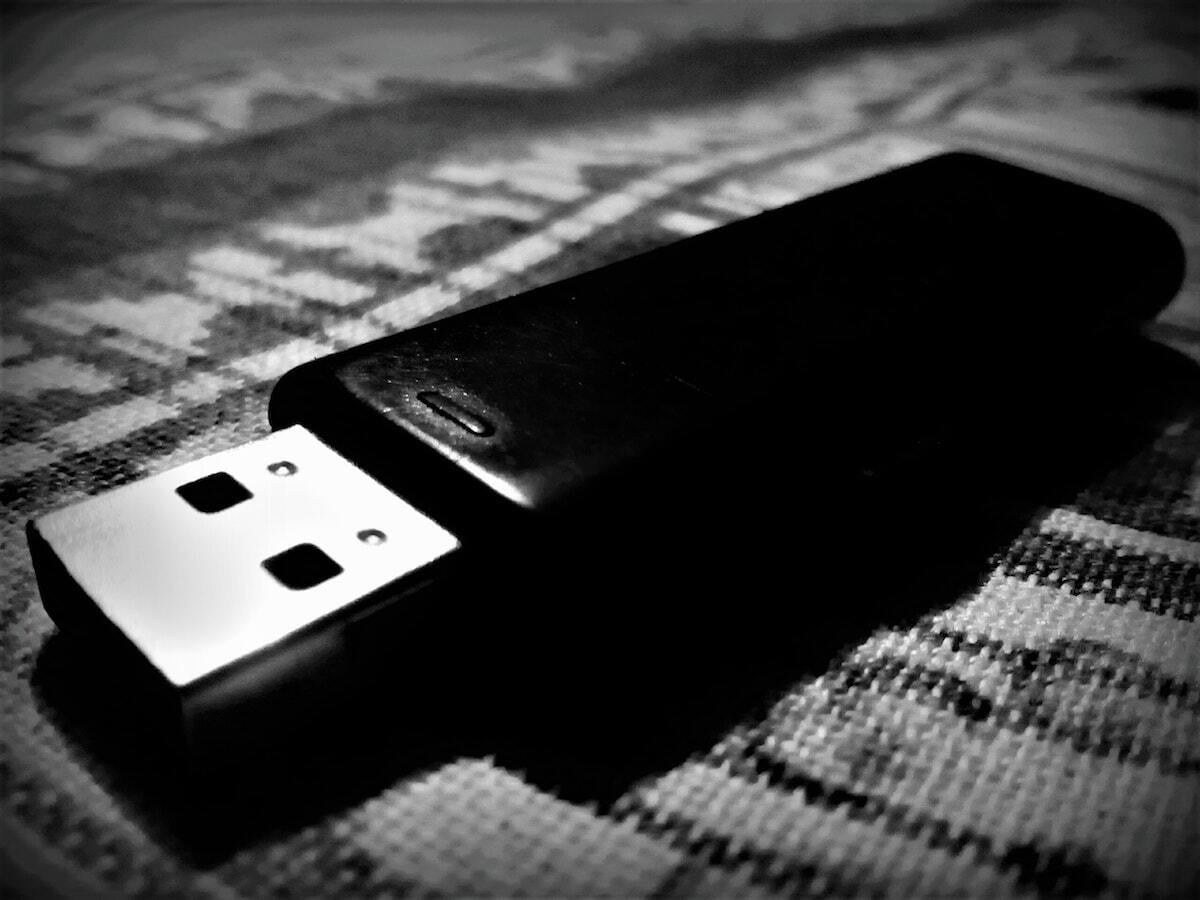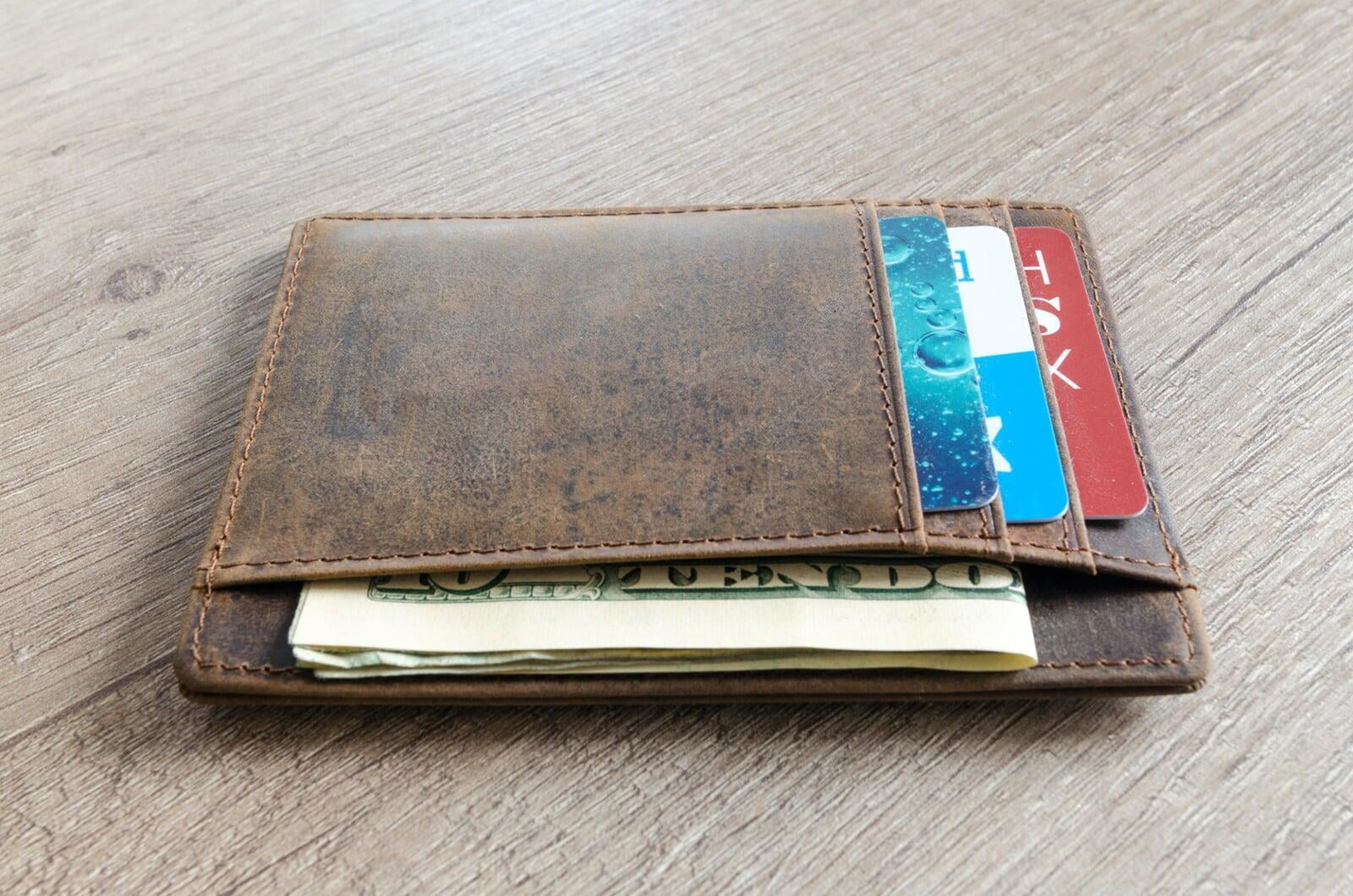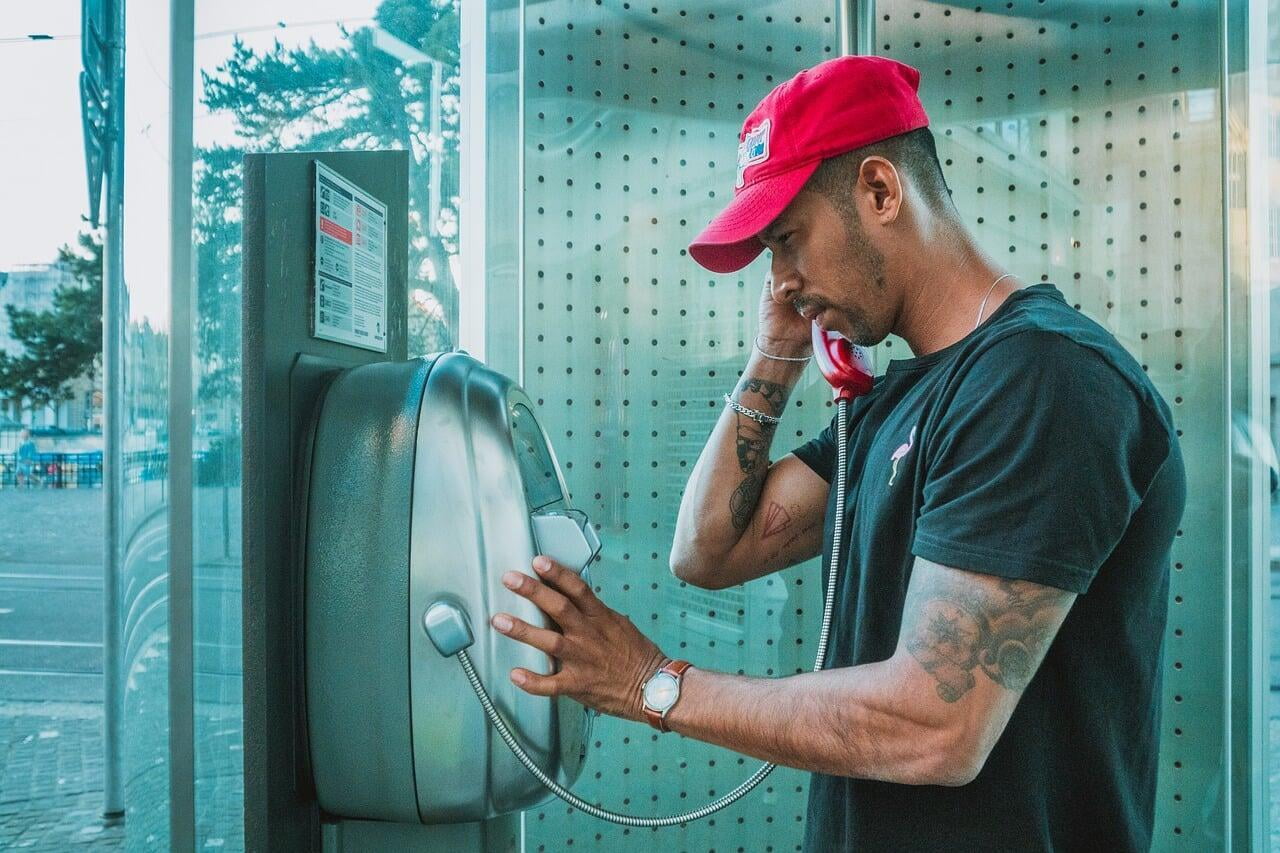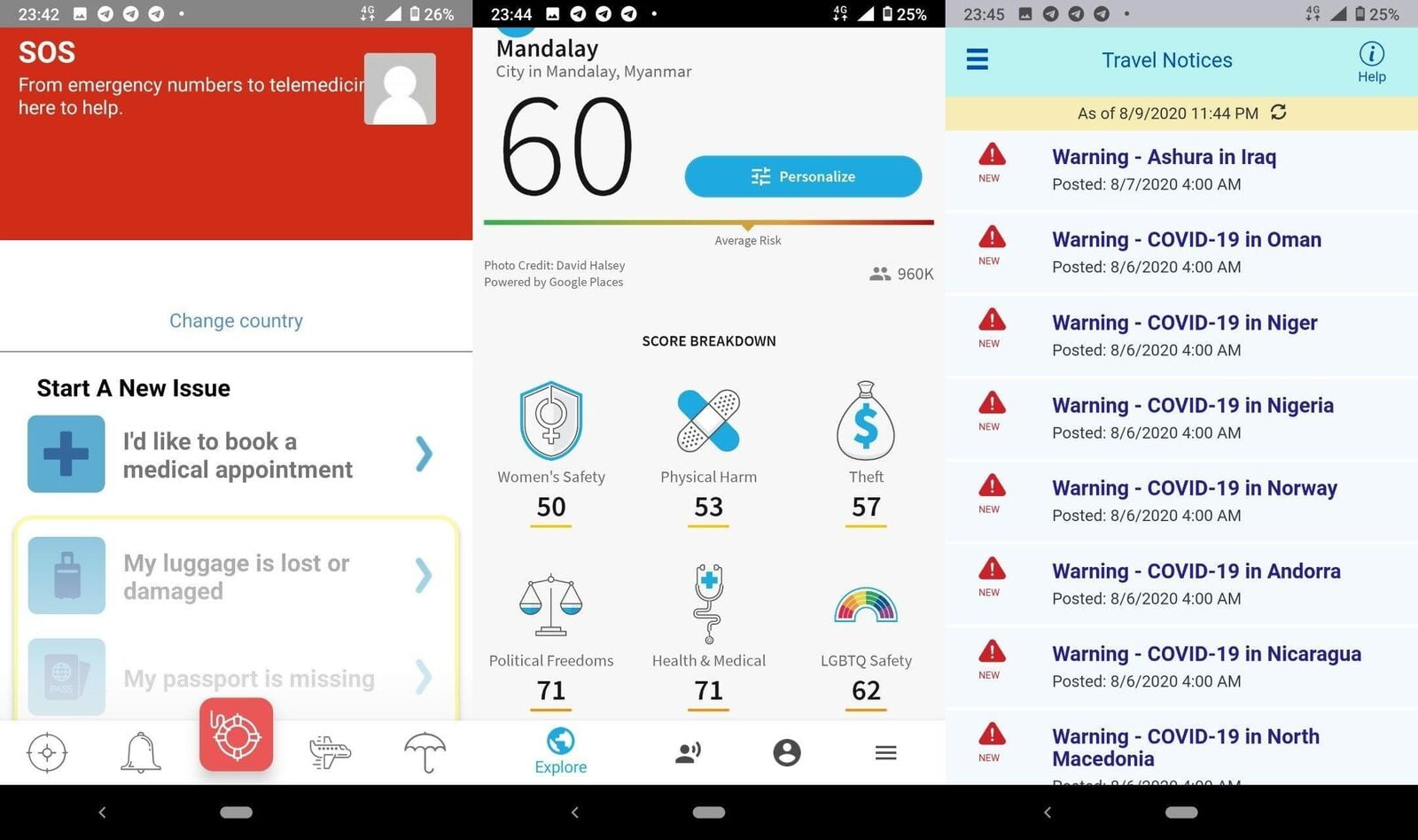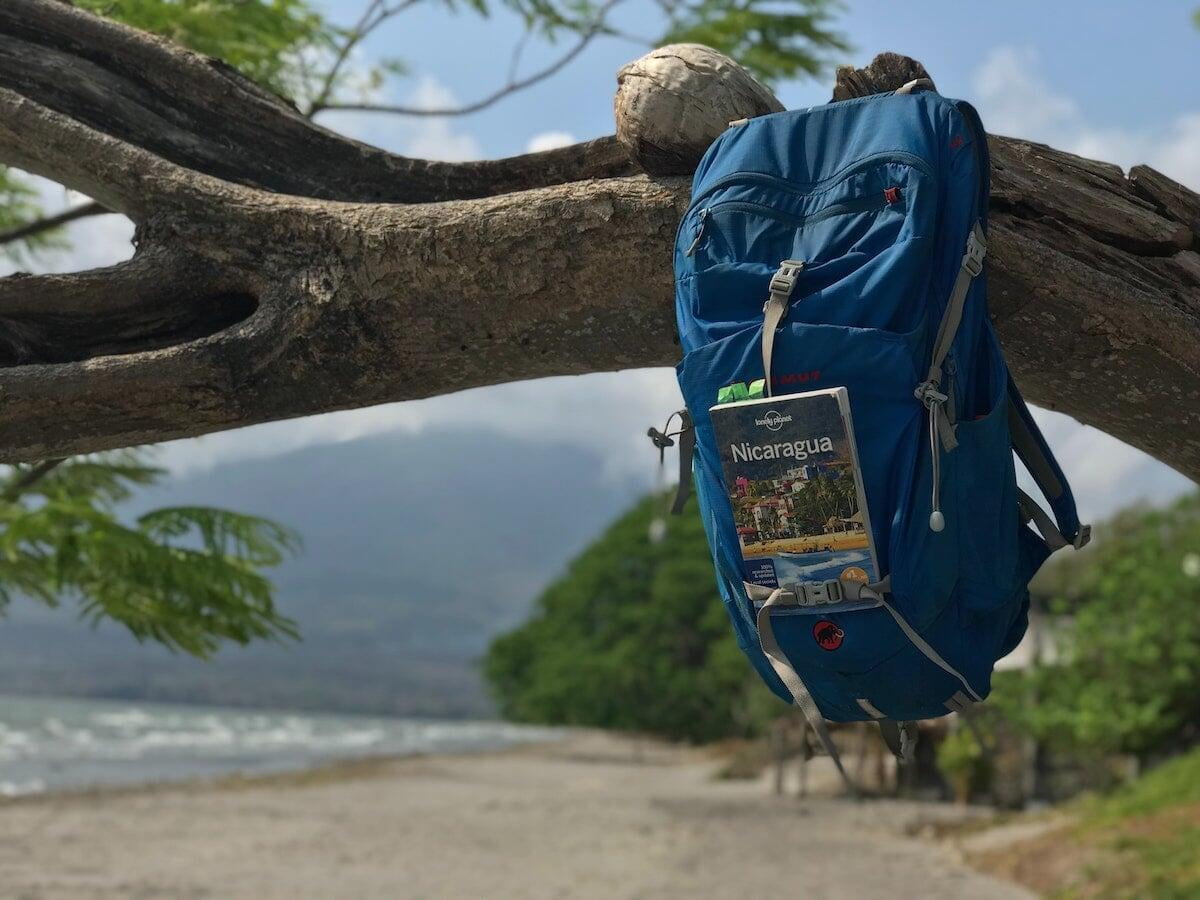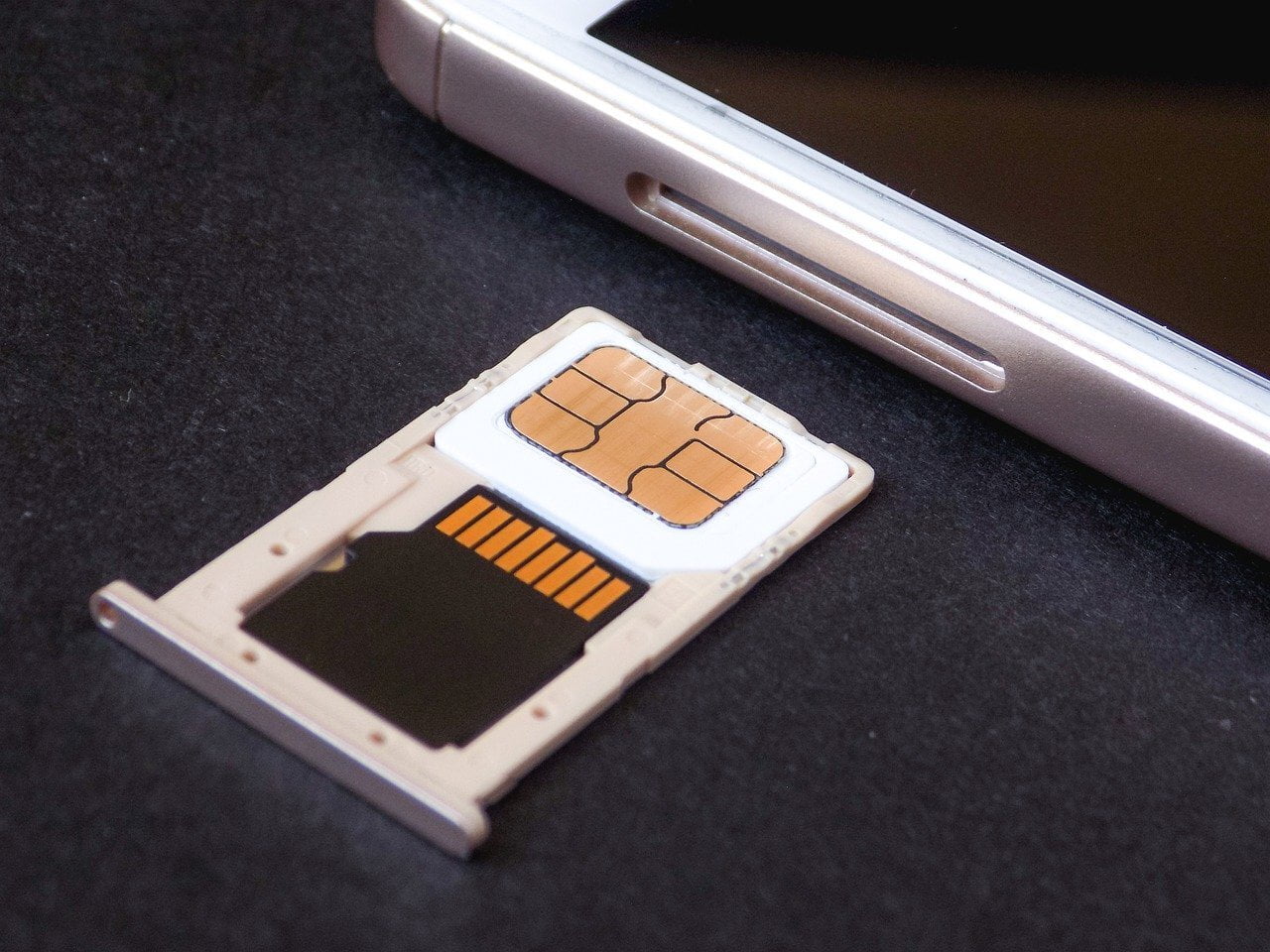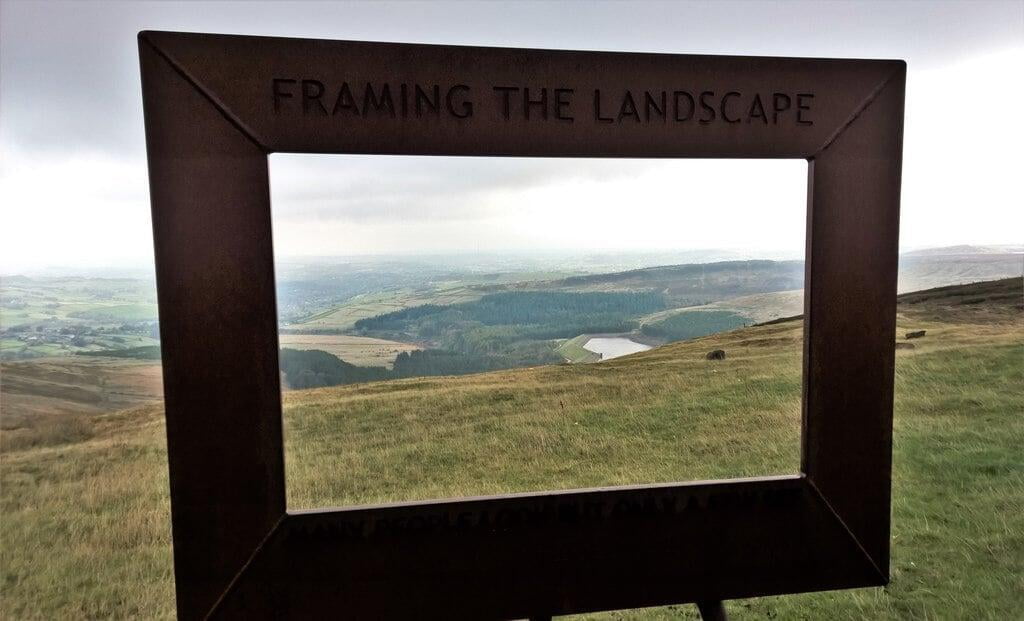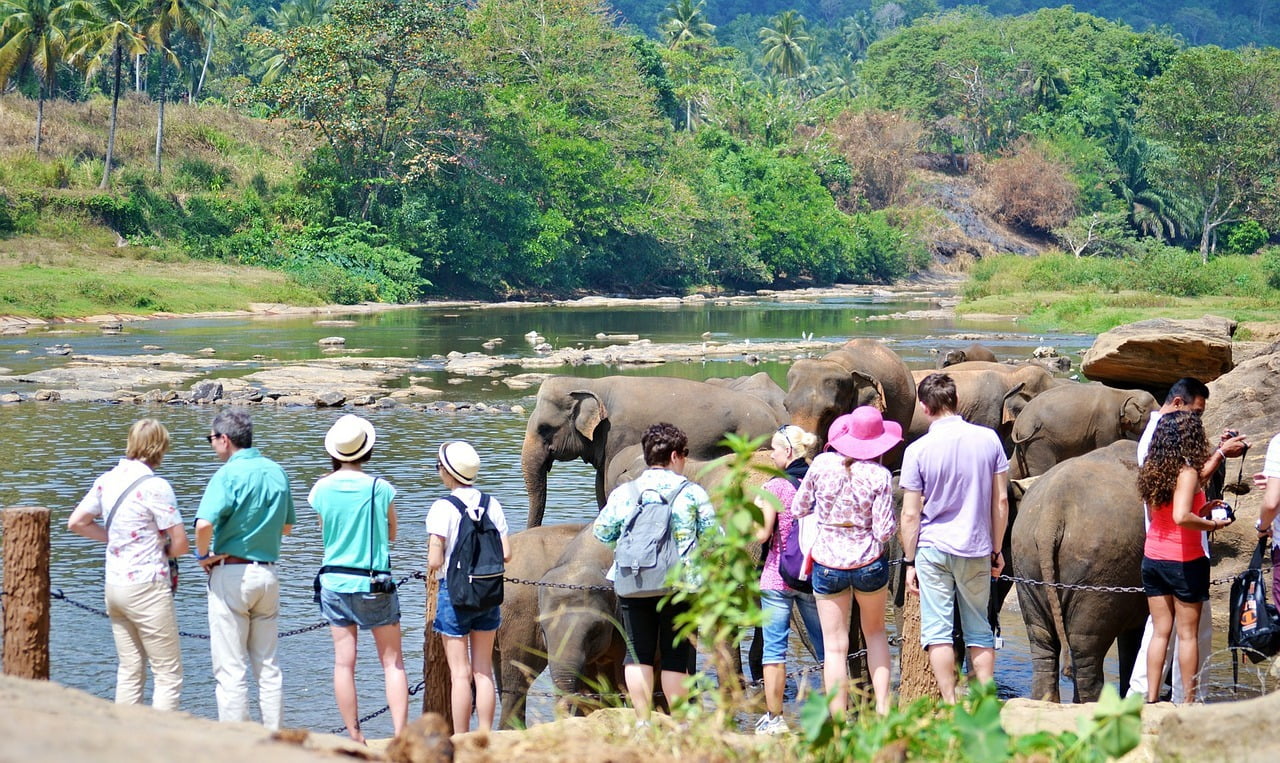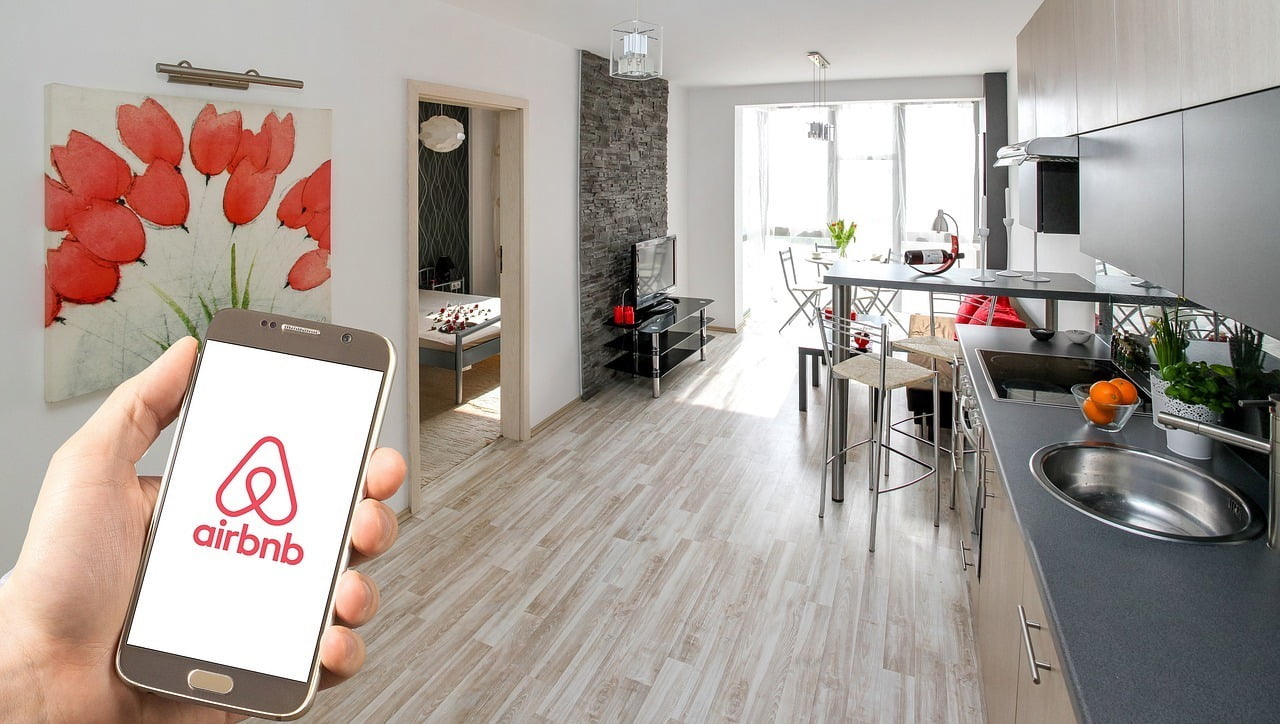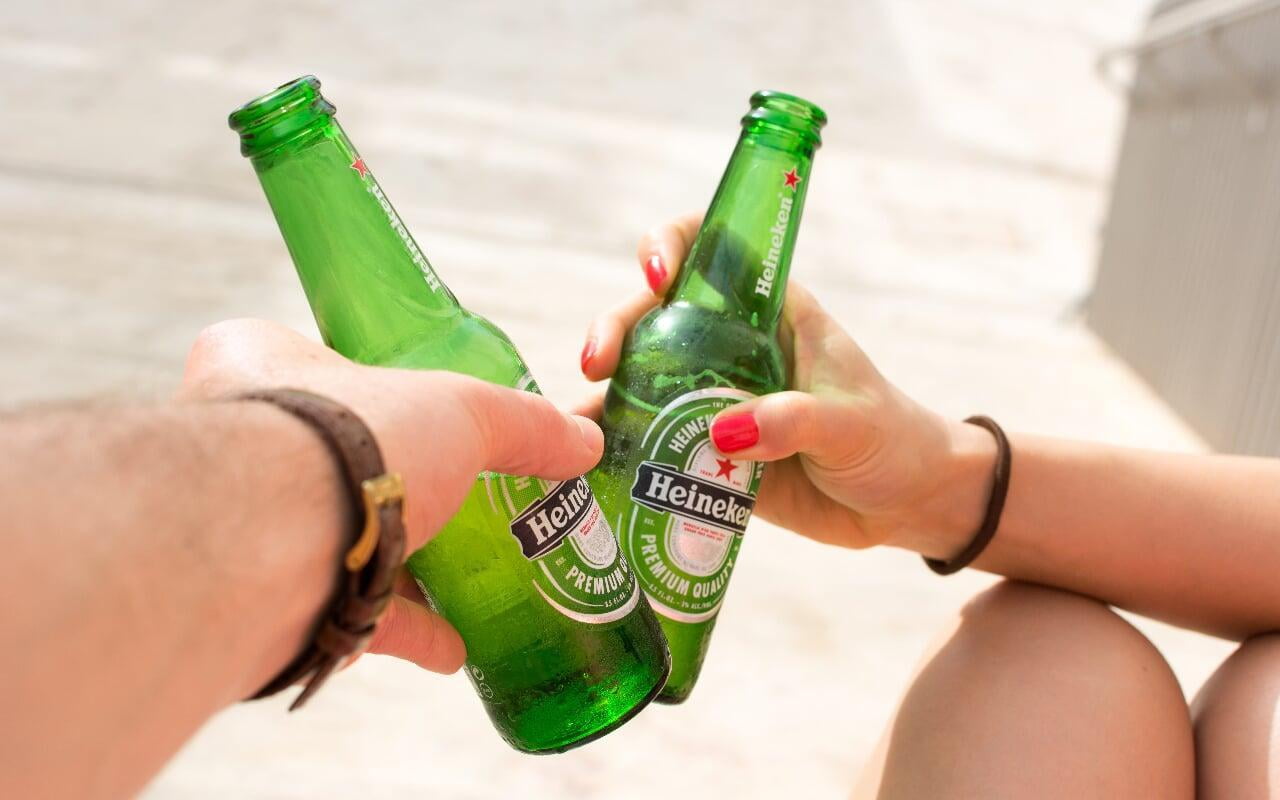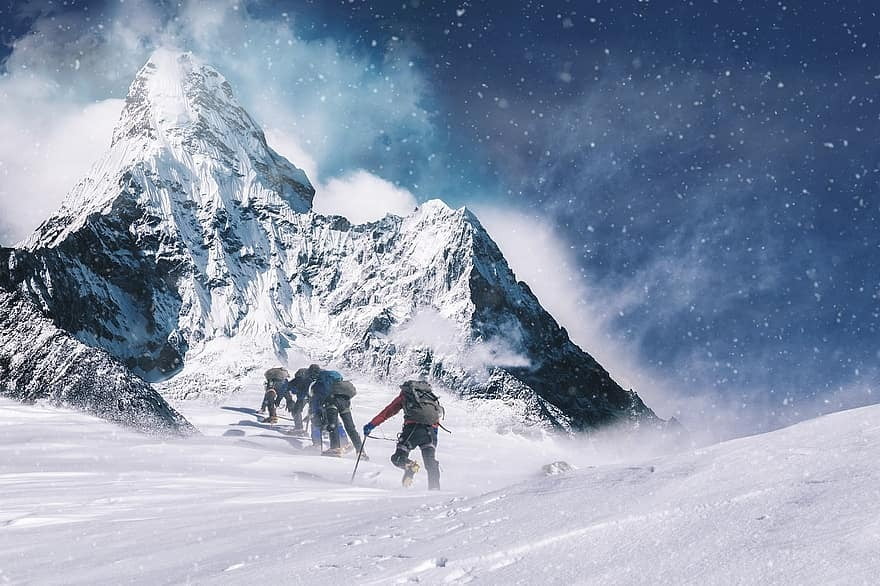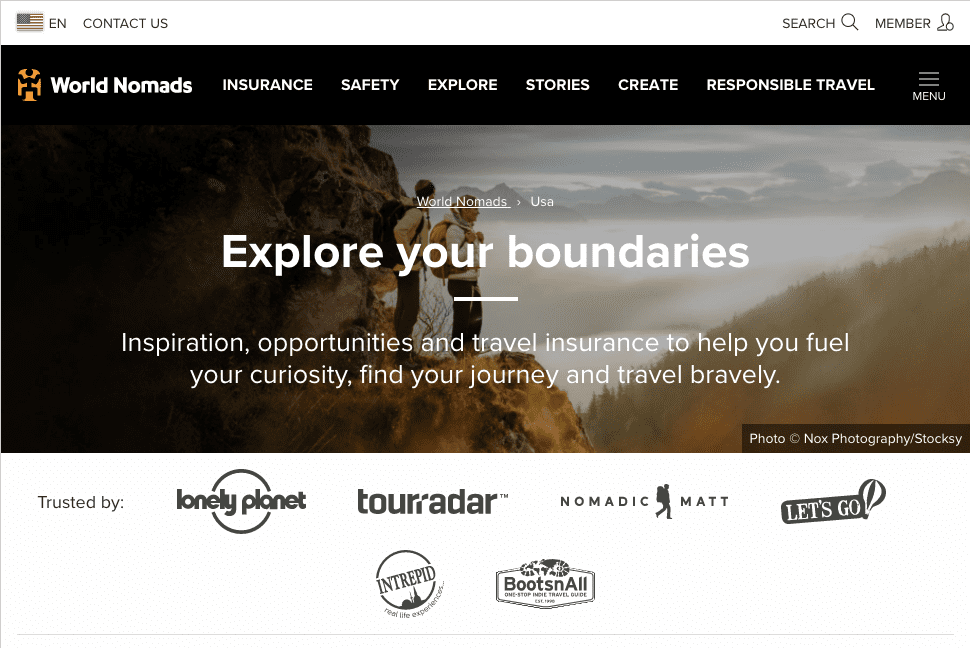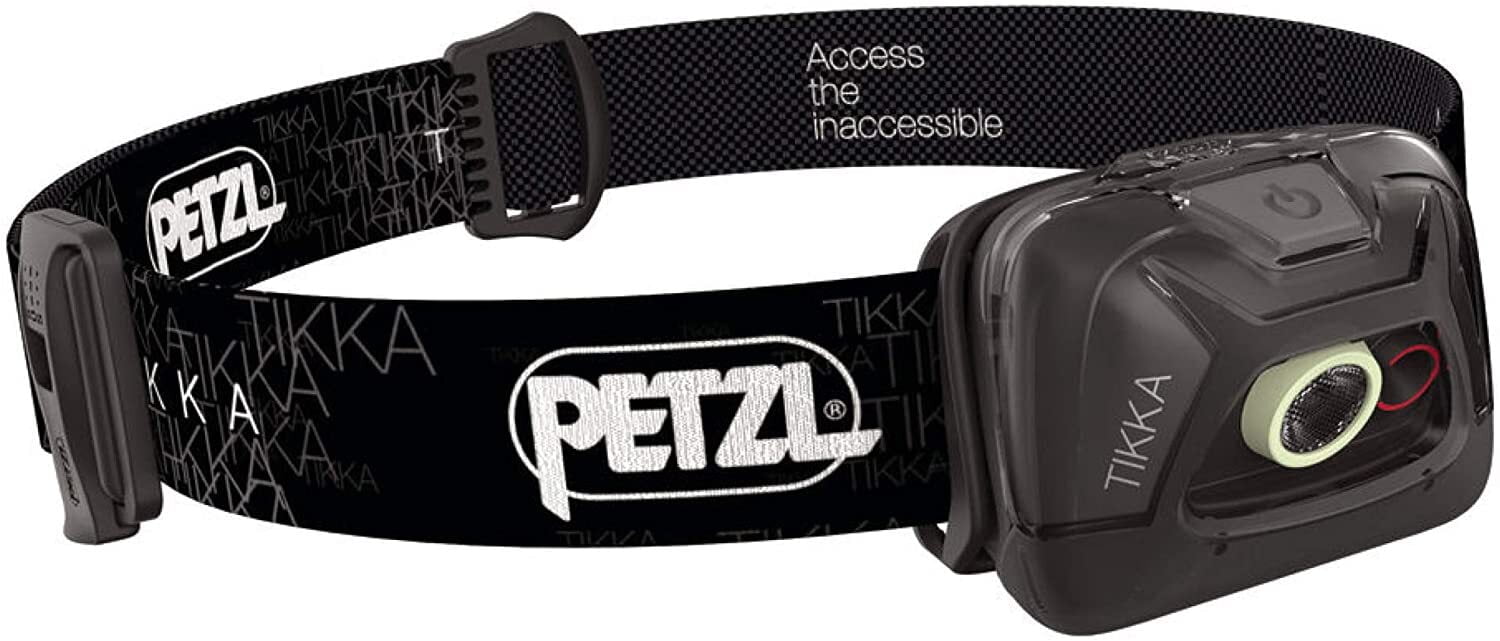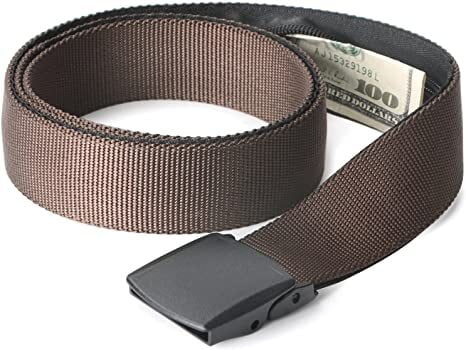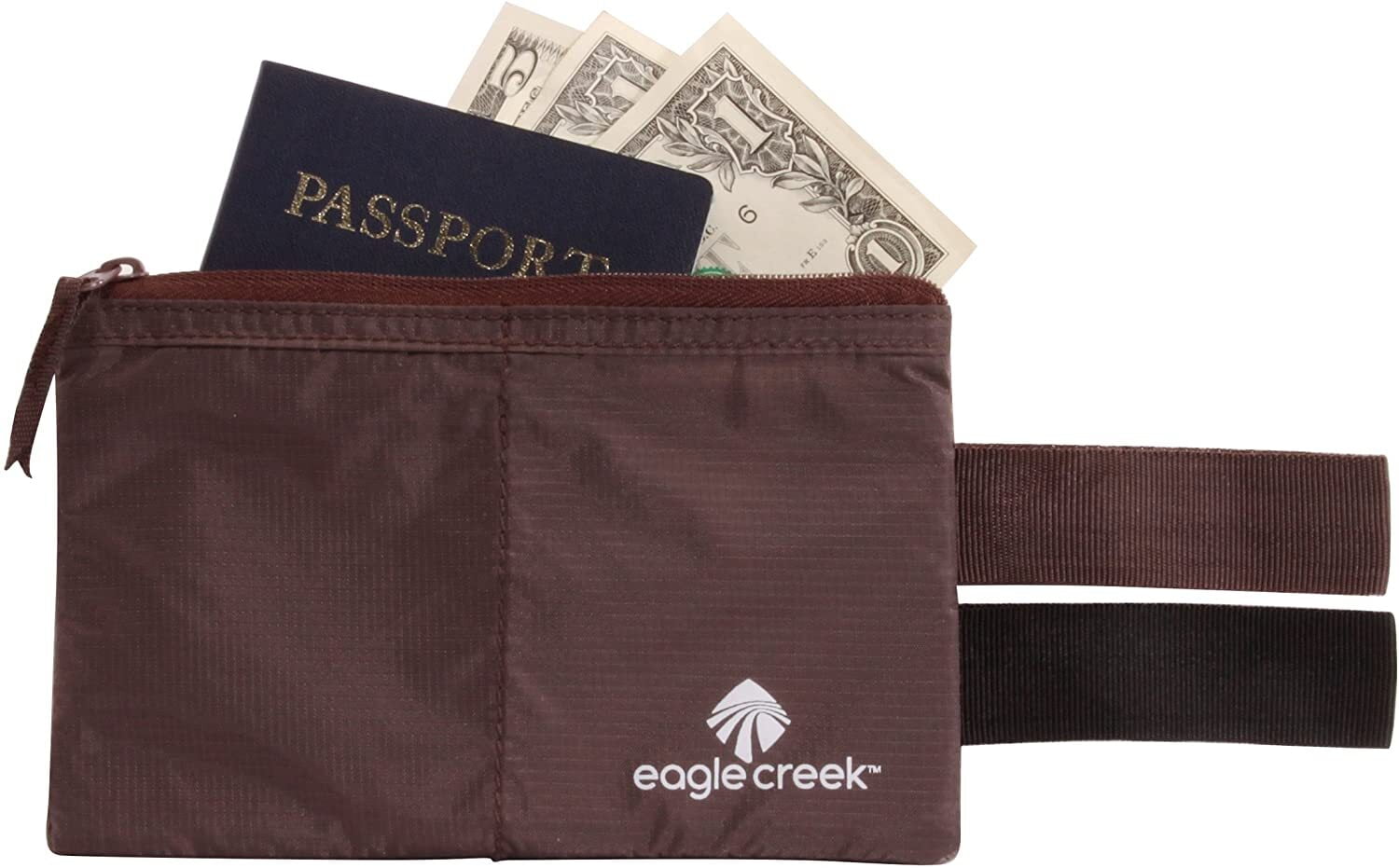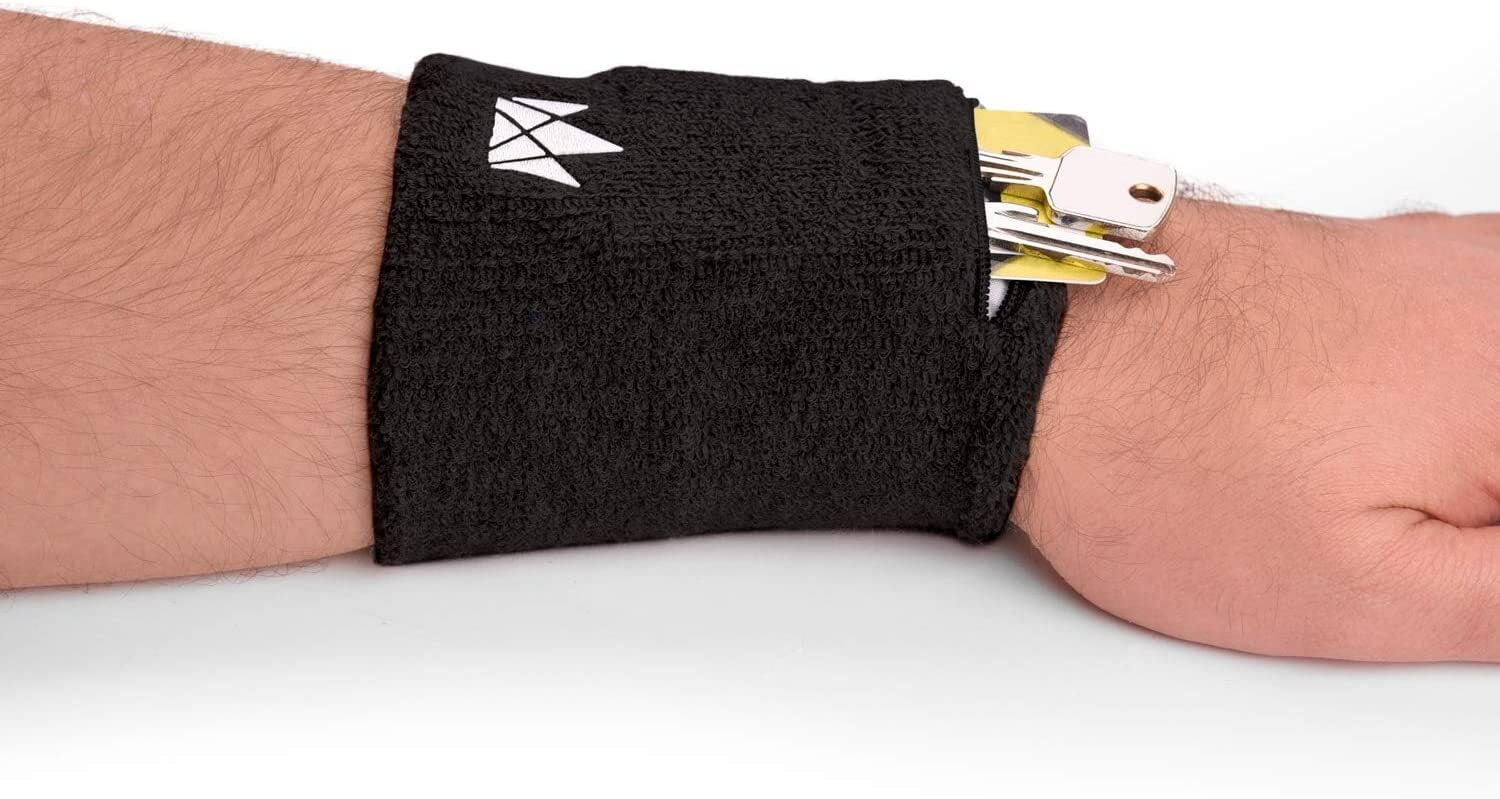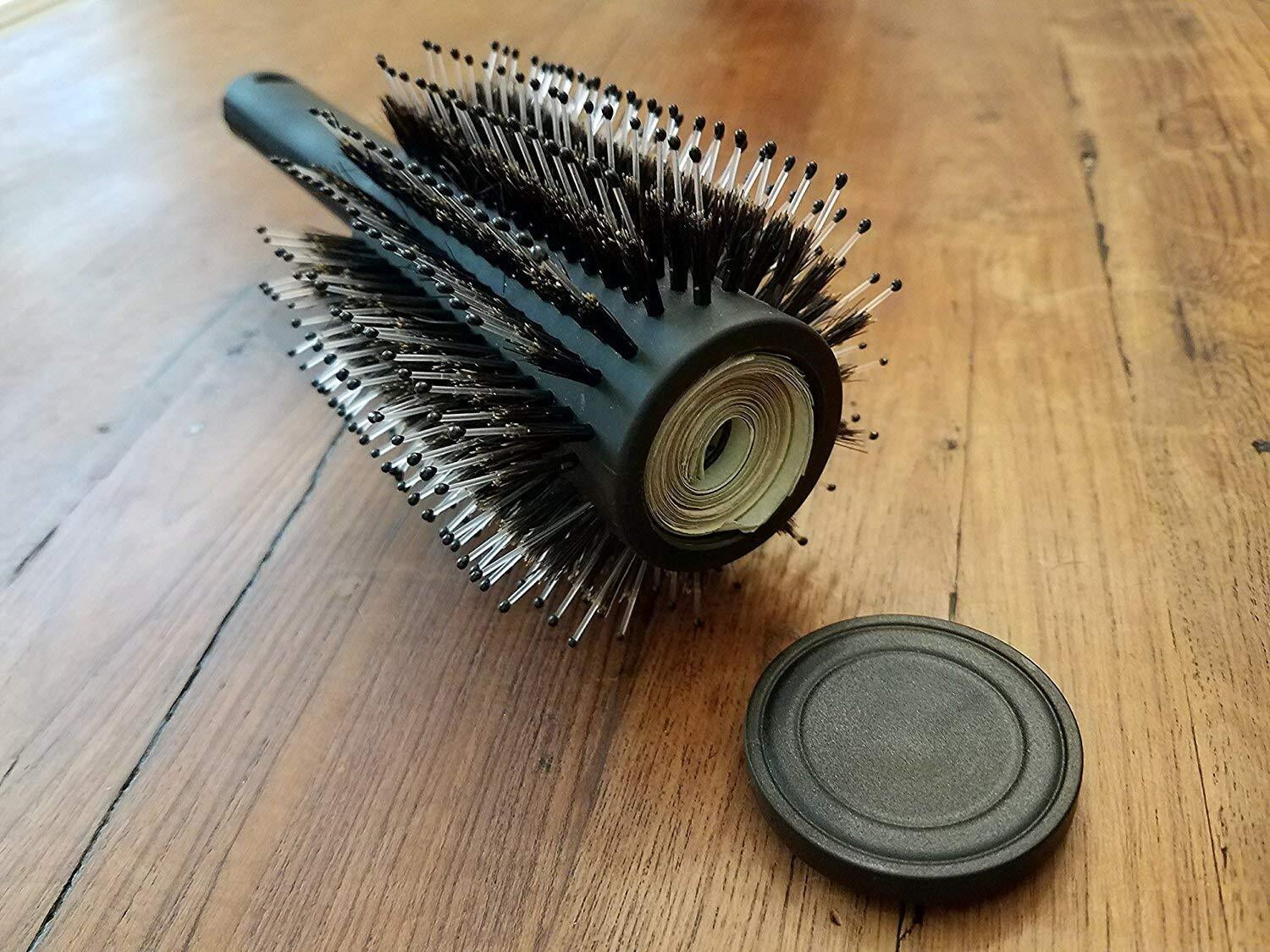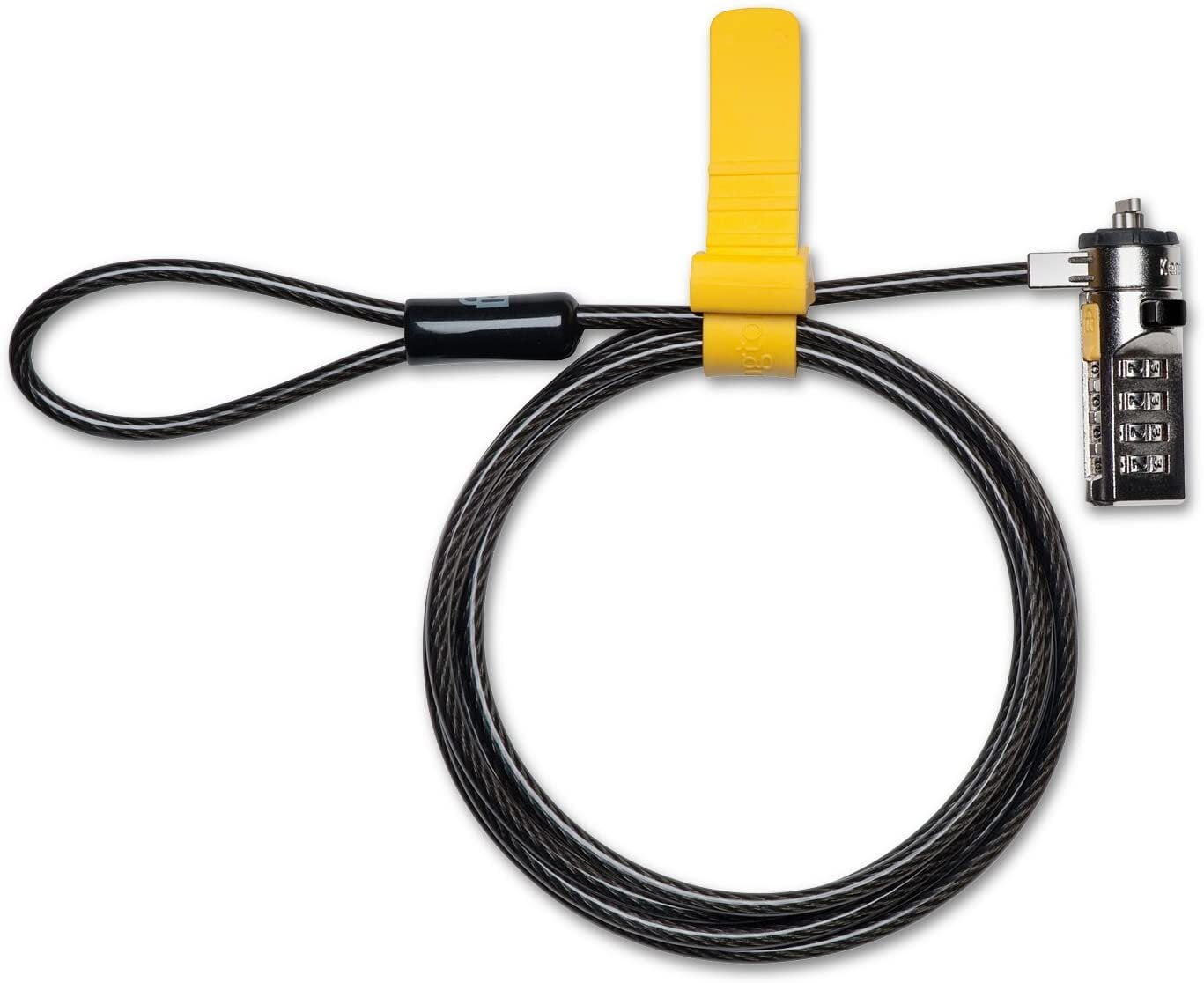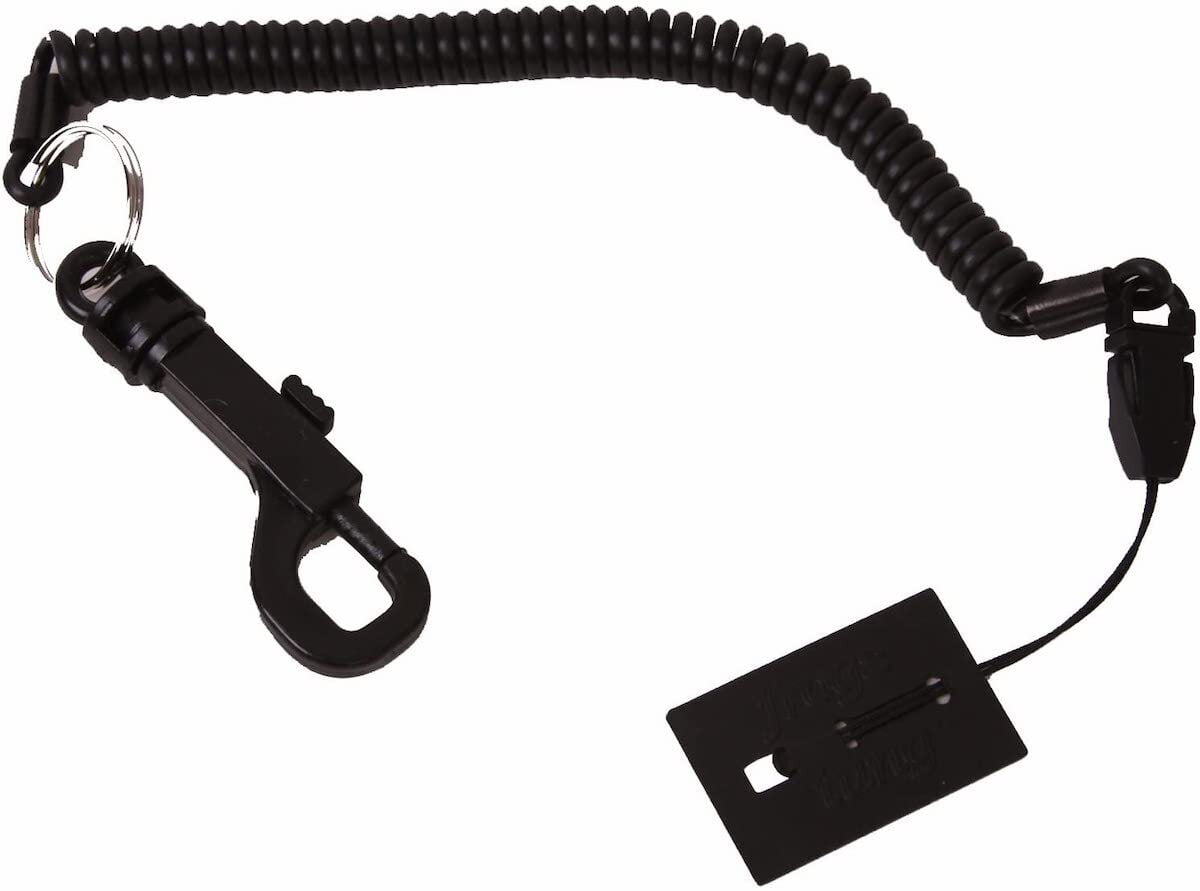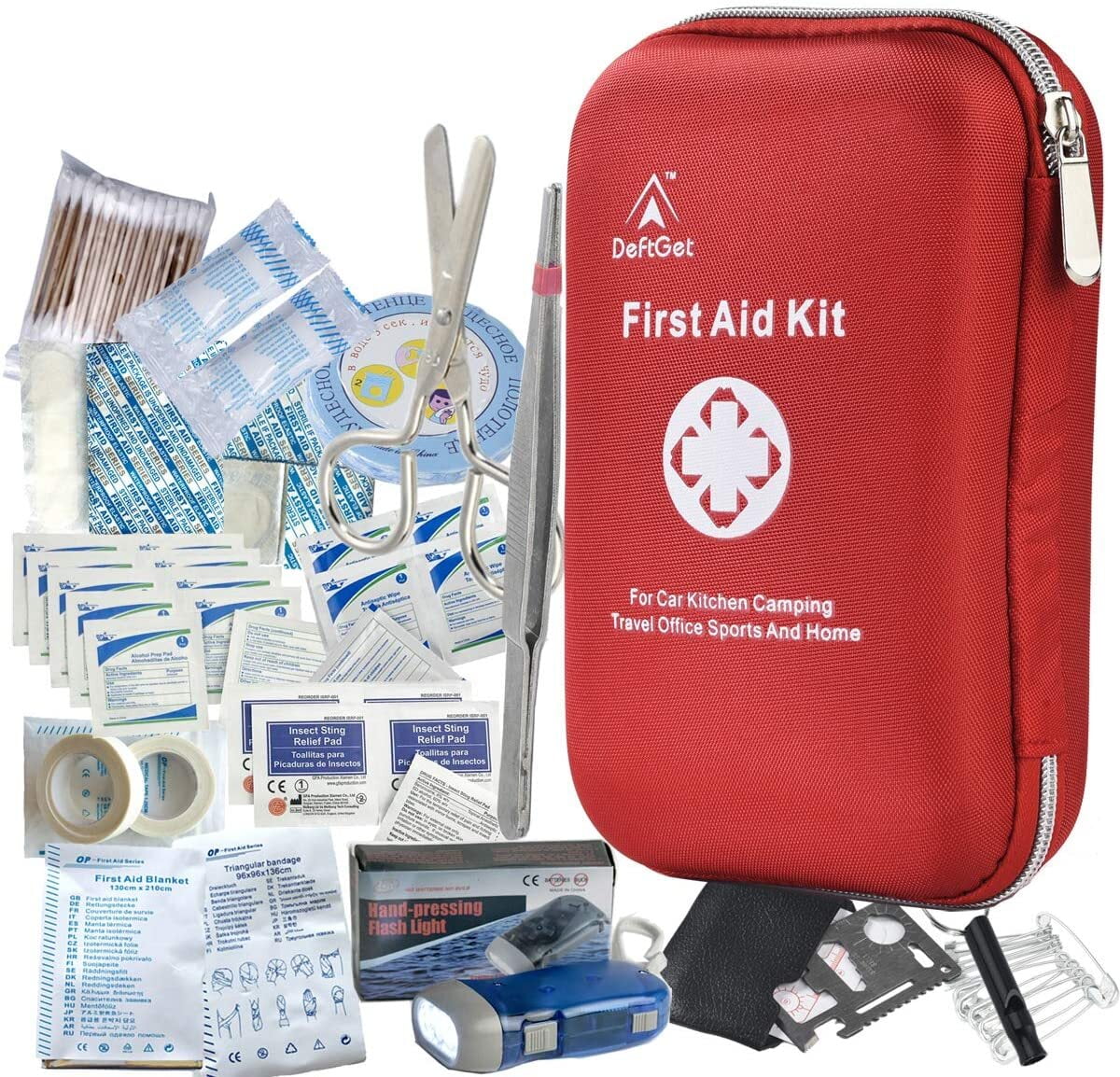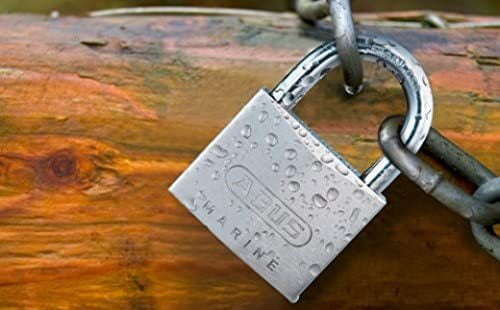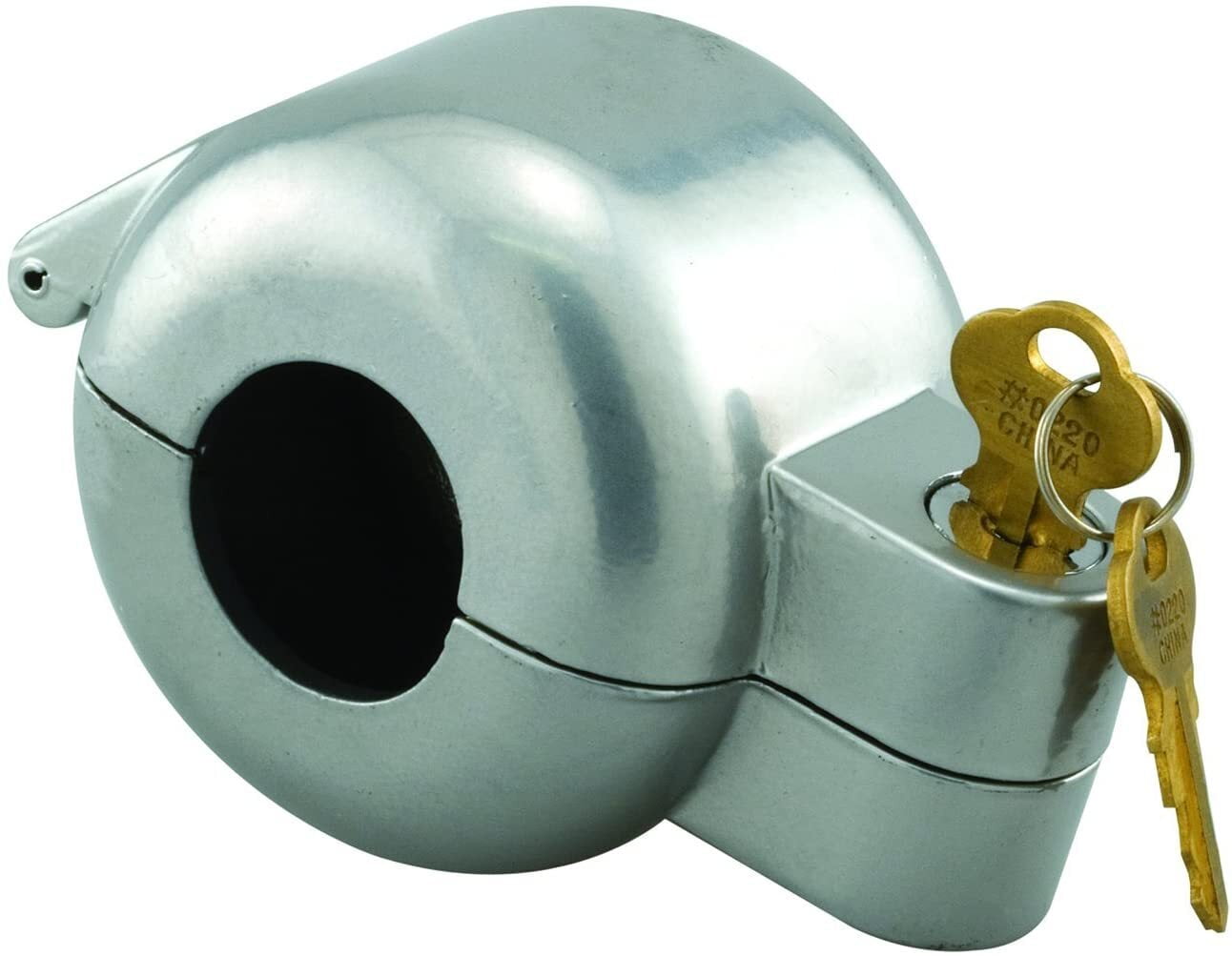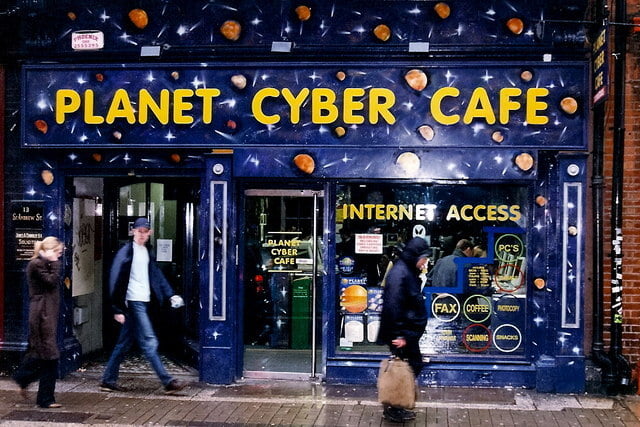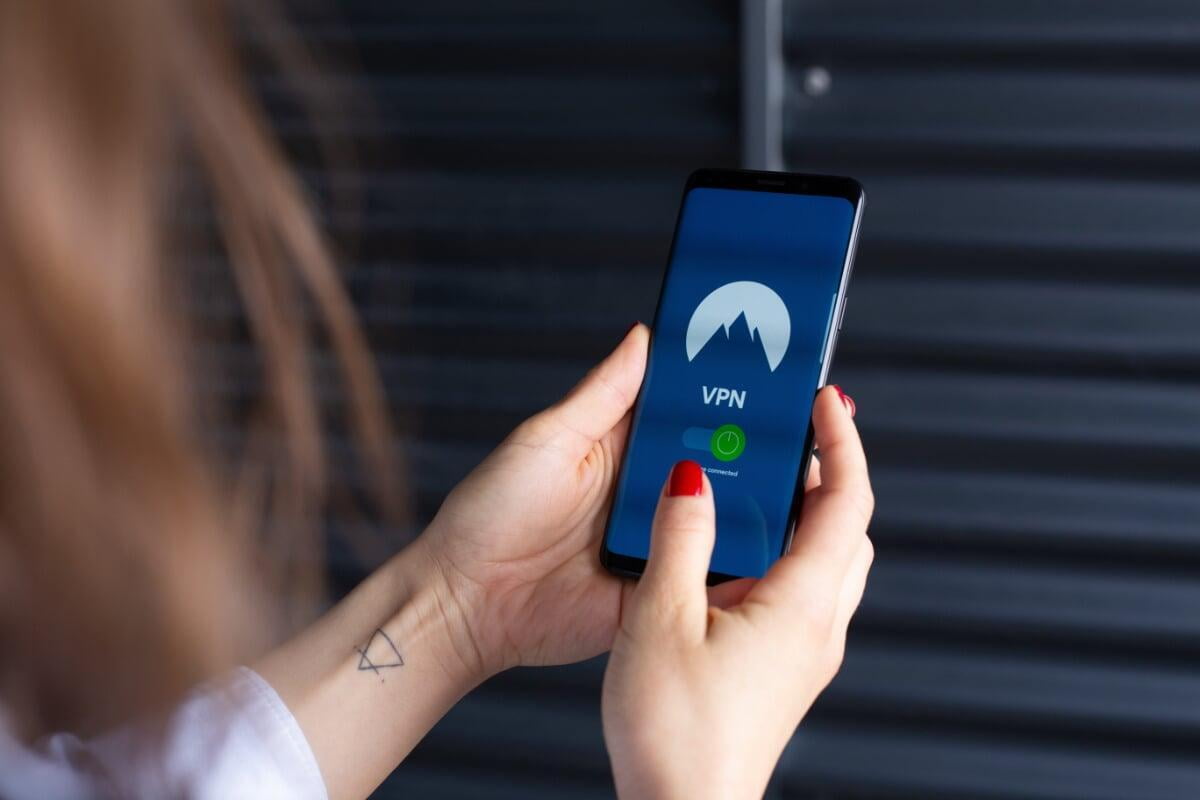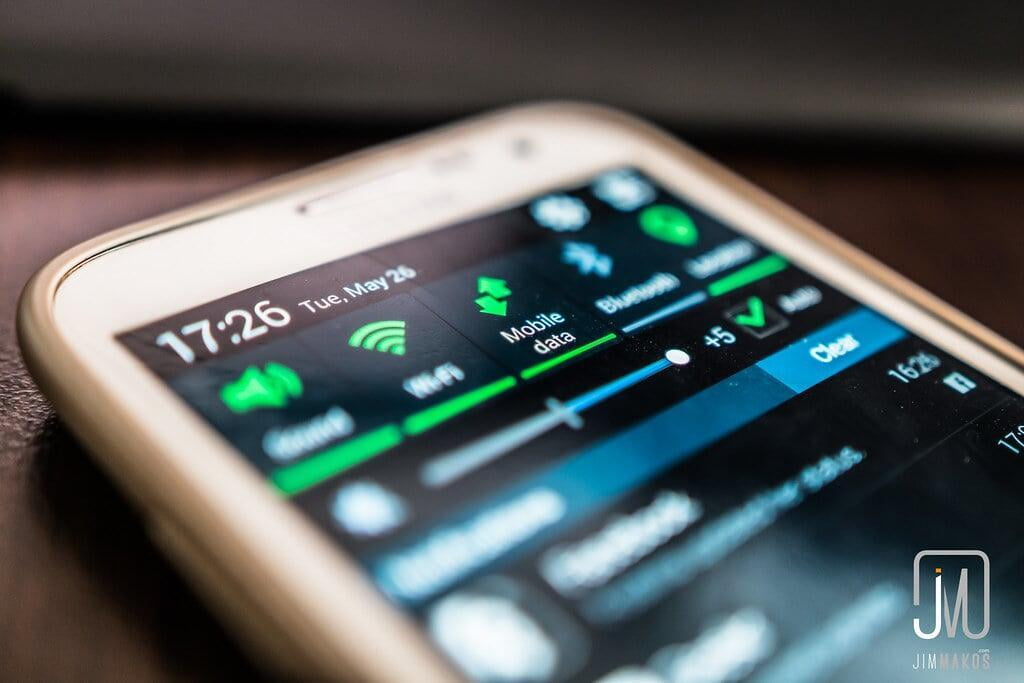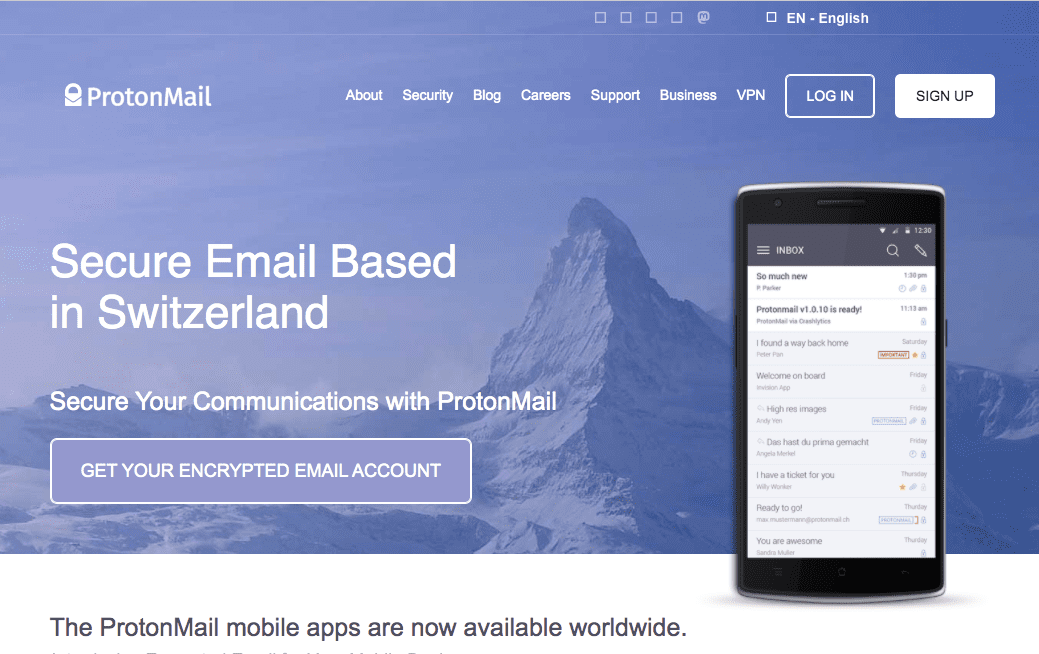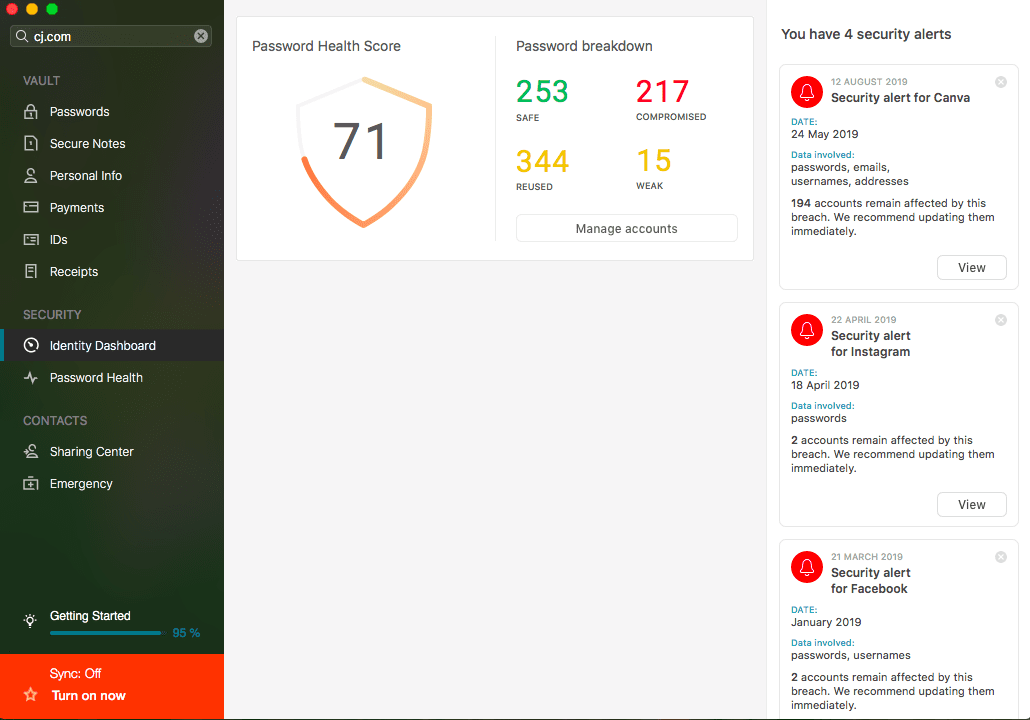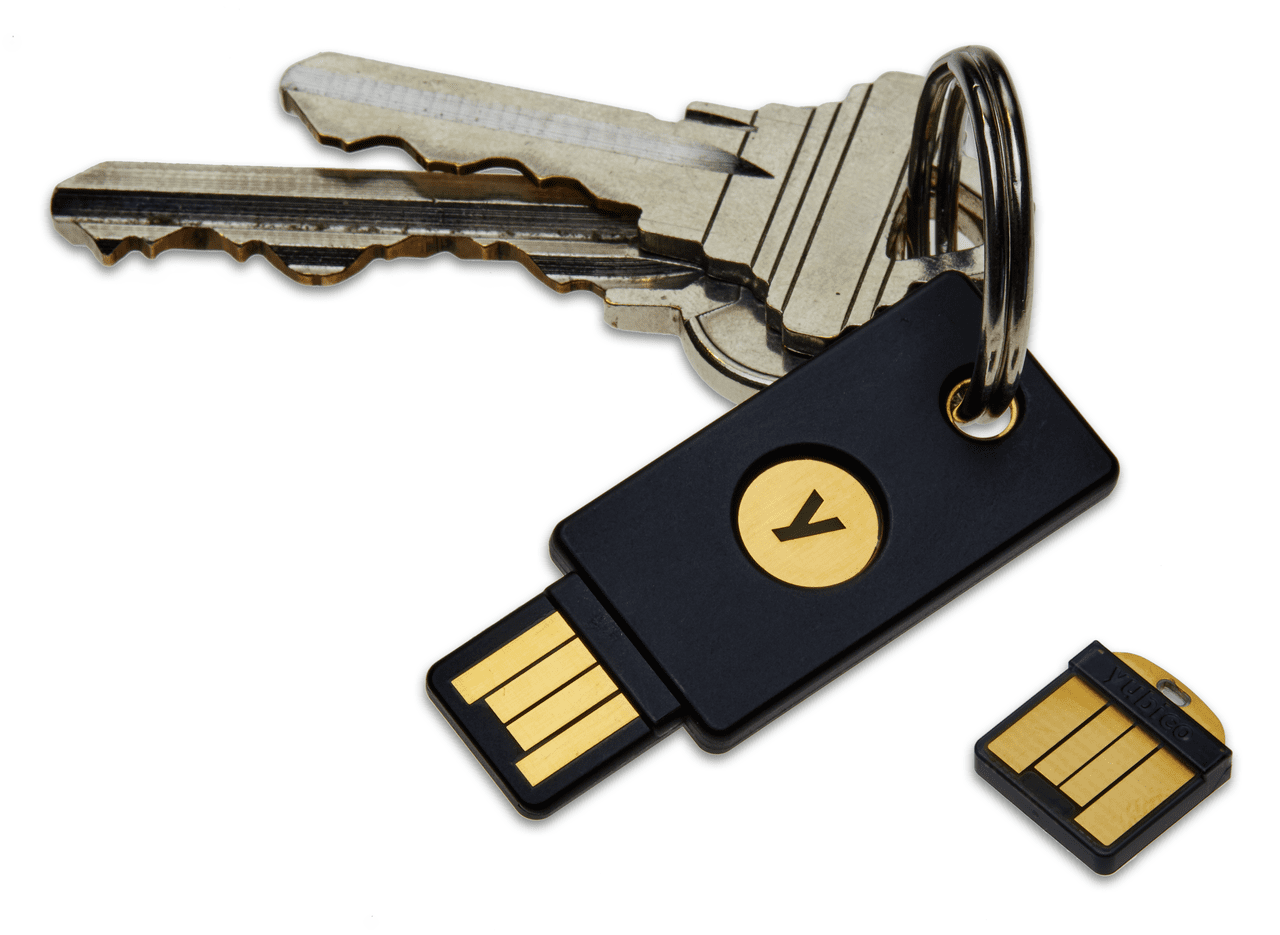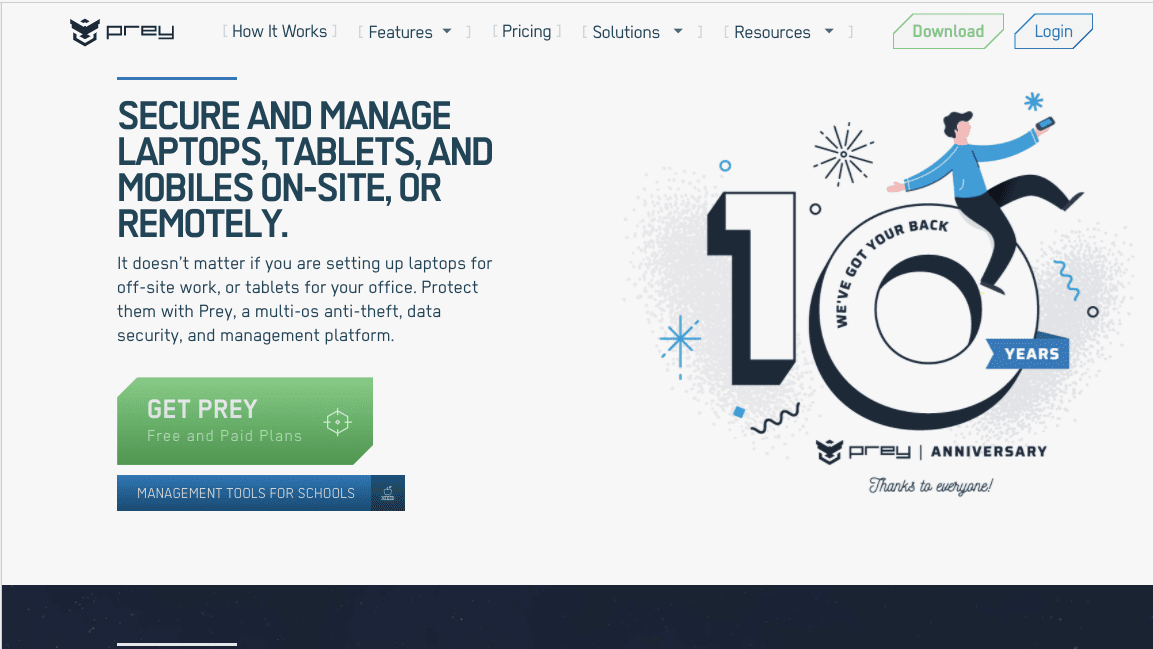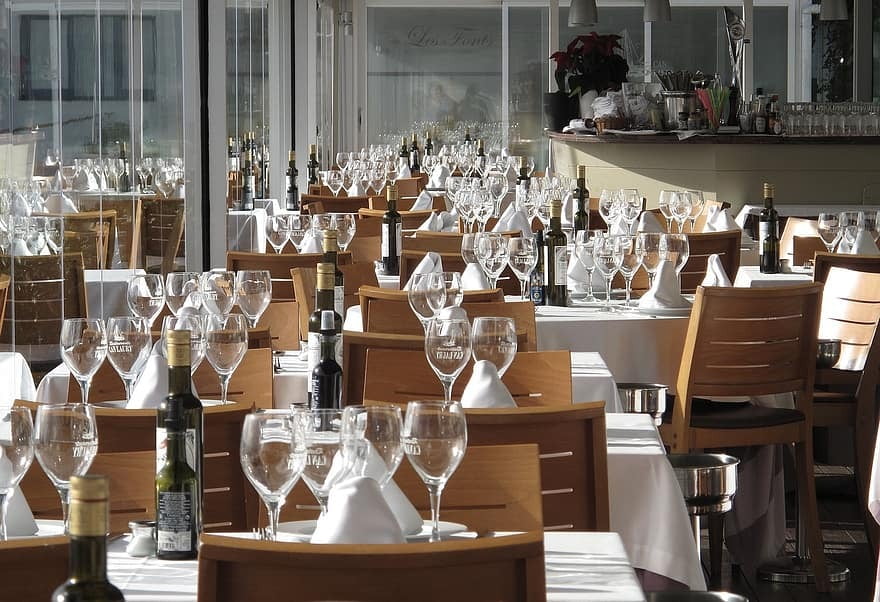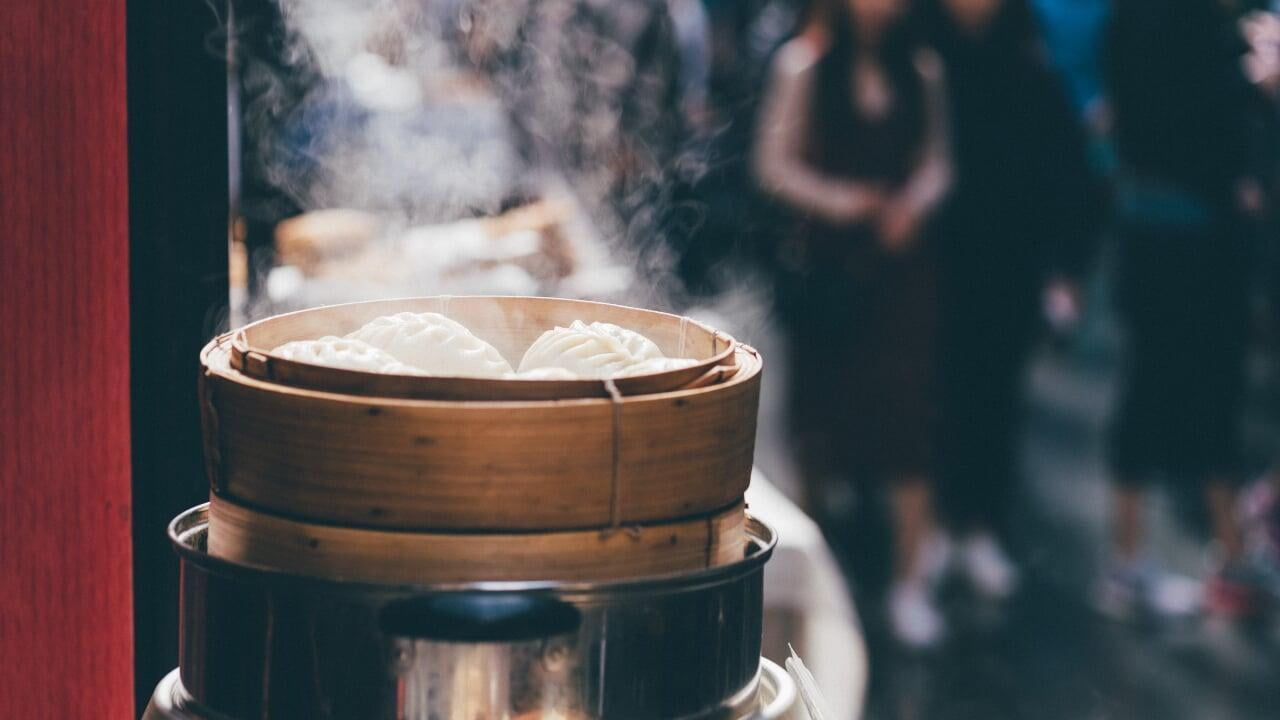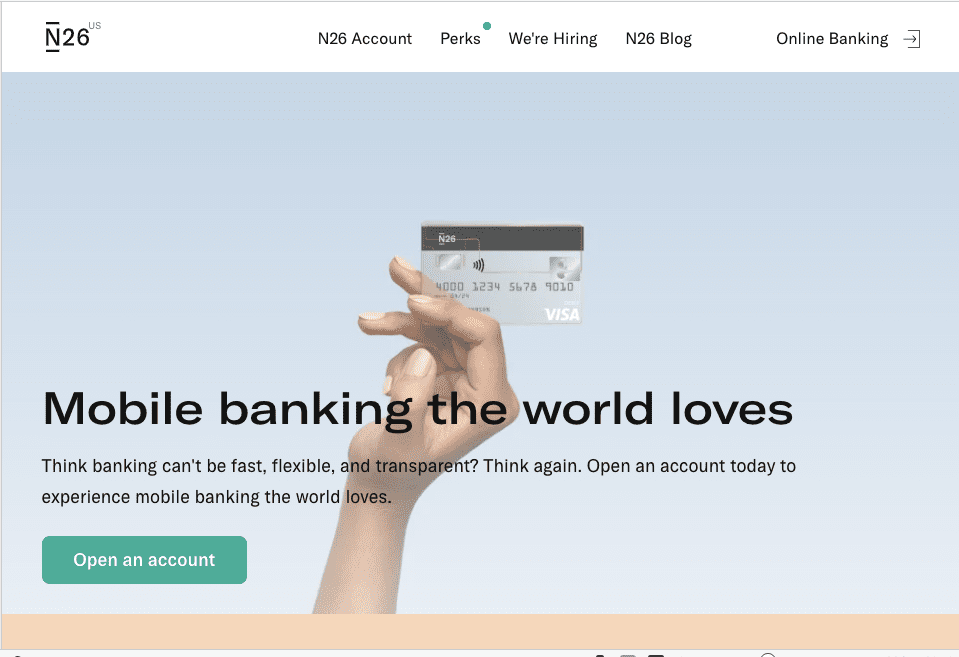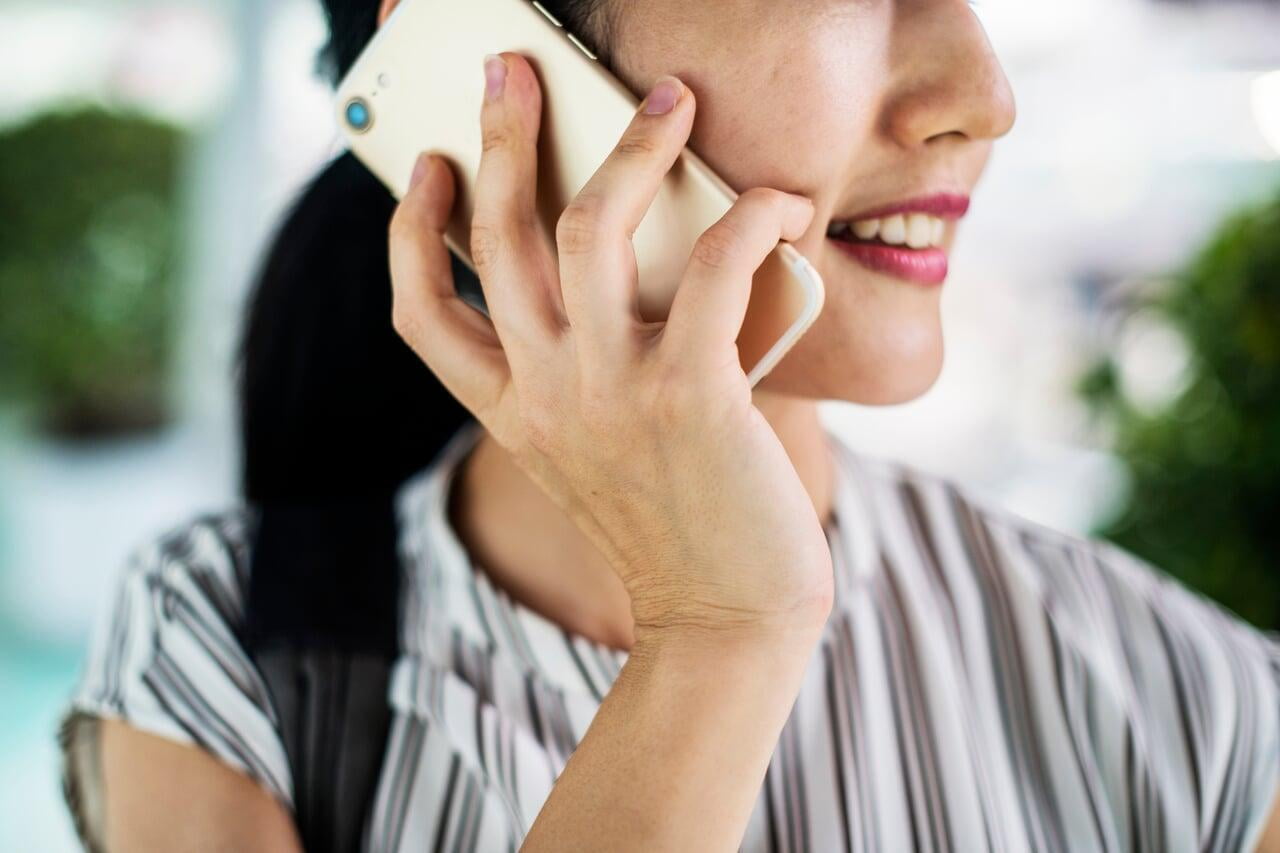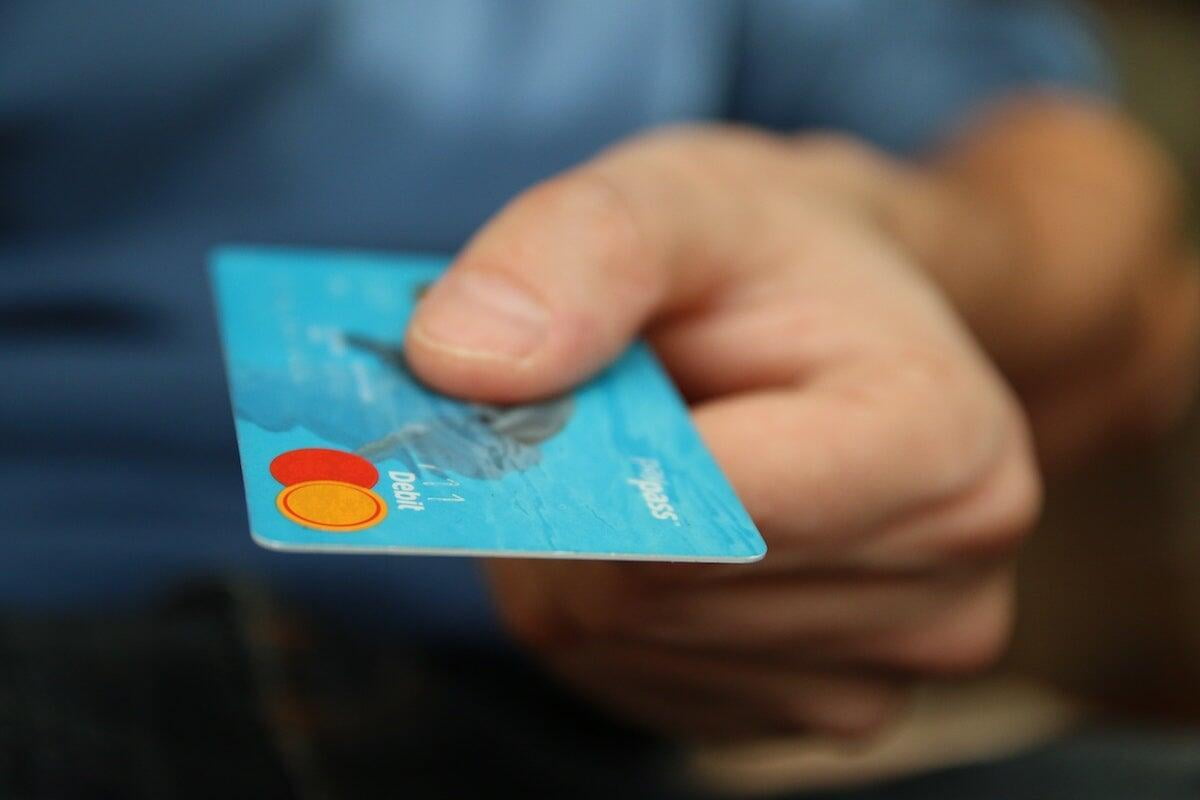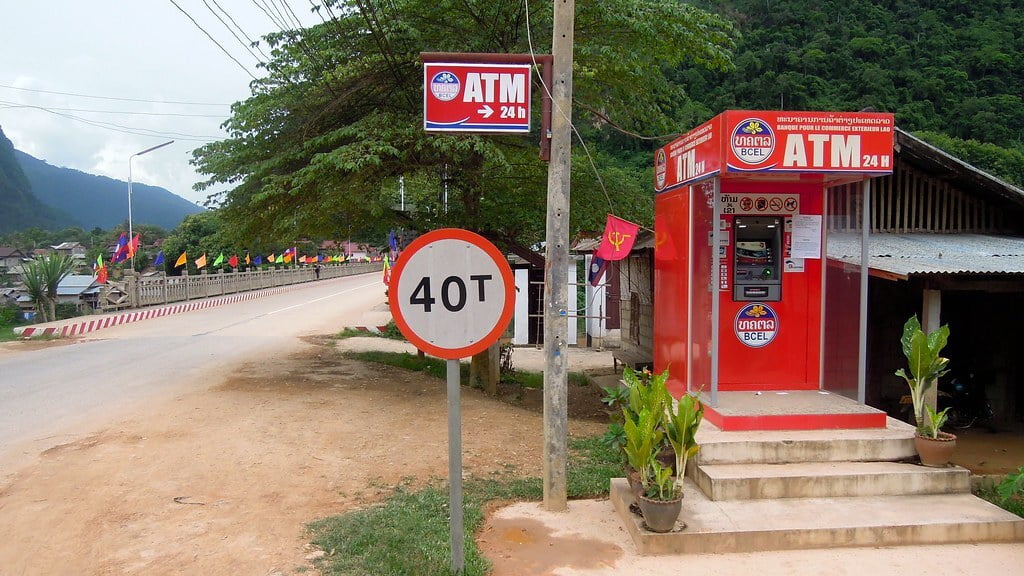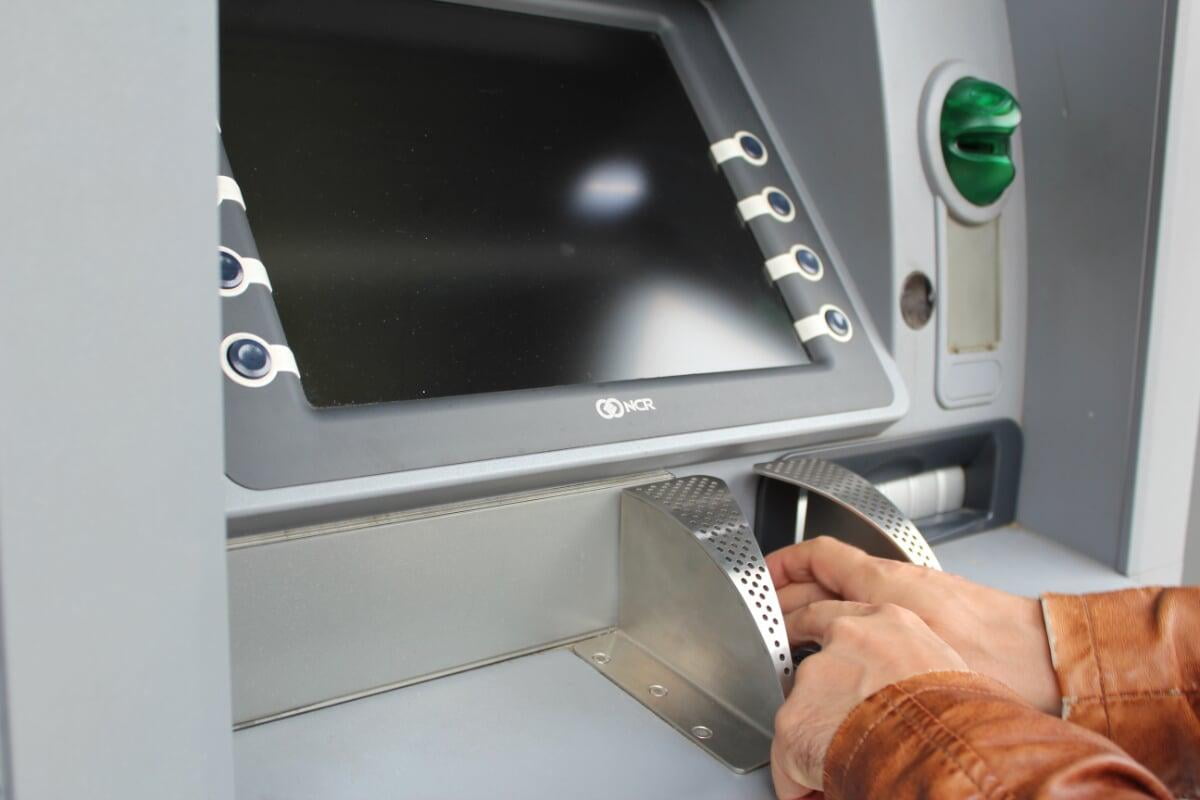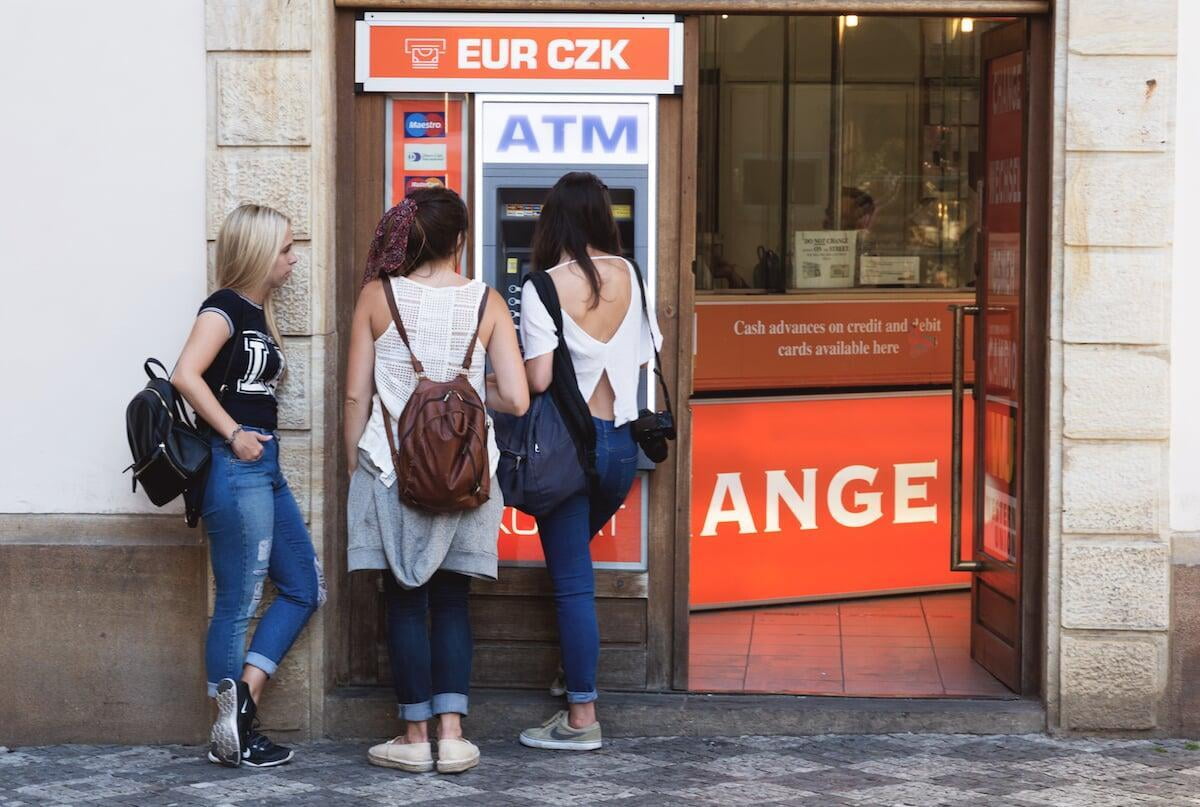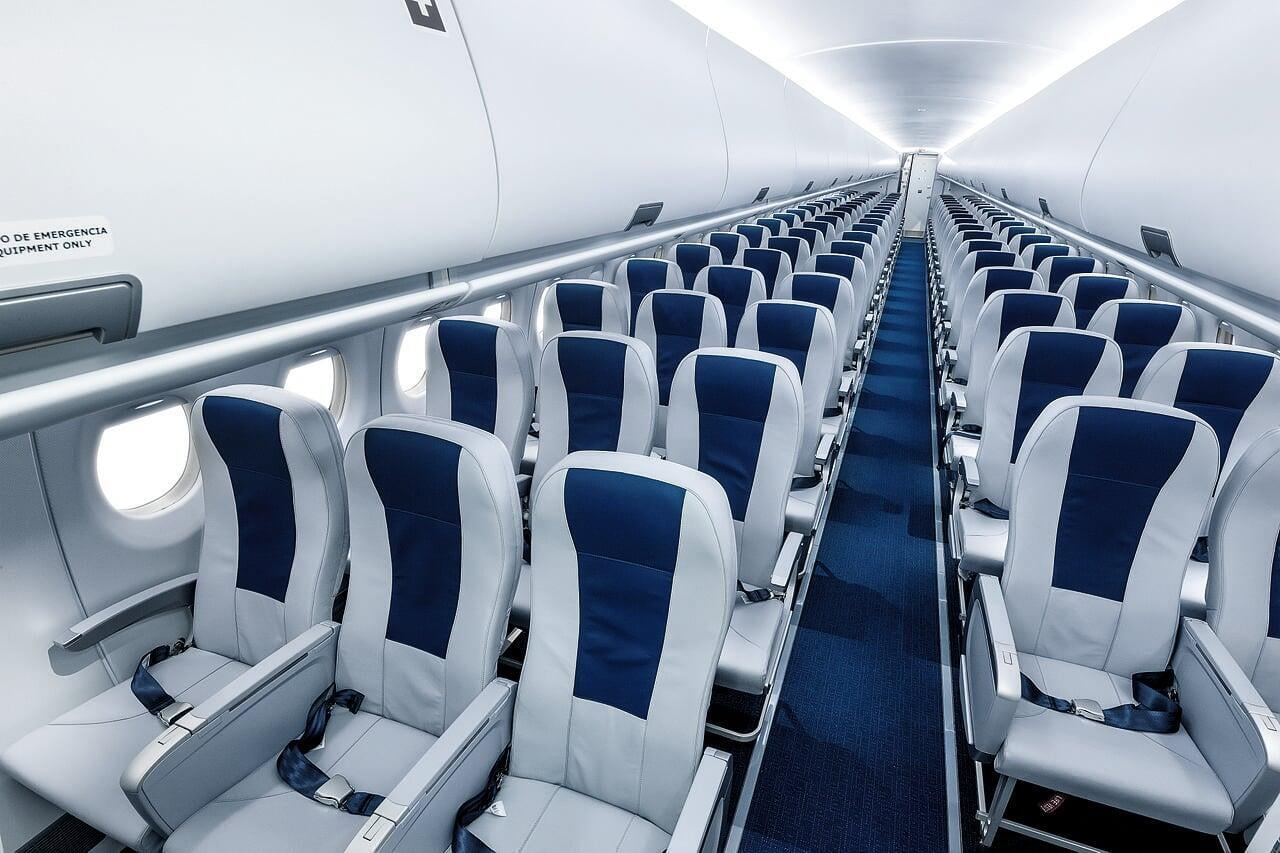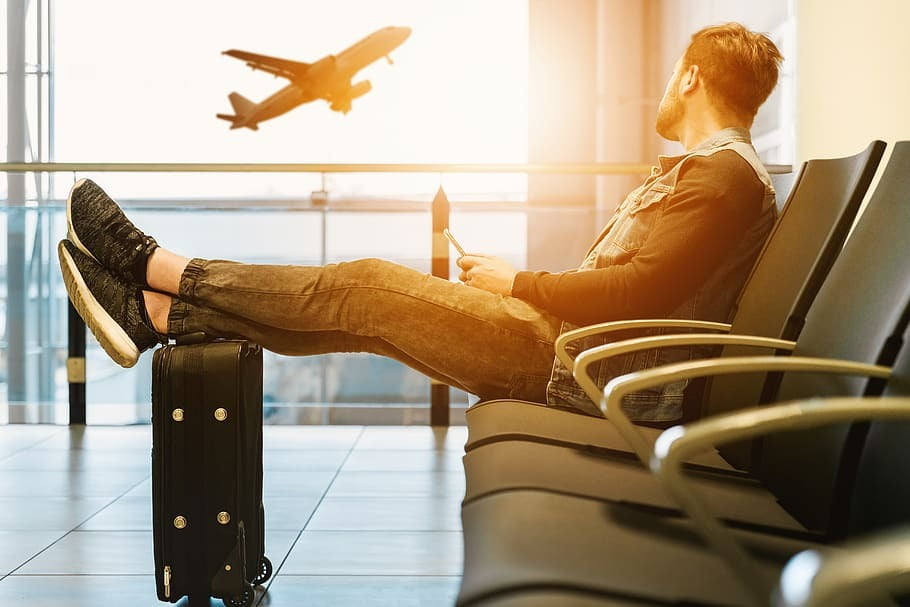84 Essential Travel Safety Tips You Have To Know For 2021
If you’re a person who hasn’t travelled a great deal, but you yearn to spread your wings and start exploring this crazy and beautiful rock that we live on, there may be one niggling doubt that’s holding you back from throwing yourself headlong into the unknown.
You may be wondering to yourself…. is travel even safe? Will I actually live to tell the tales of my wanderings through those uncharted alien lands? What unknown perils lie in store for me that nobody is going to warn me about before I set off?
Unfortunately, the question “is travel safe?” doesn’t have a very straightforward answer.
Obviously, how safe travel is will depend to a large extent on where you go. Some countries are generally safer than others. Certain towns and cities within countries are safer than others. Certain neighbourhoods within towns and cities are safer than others. The countryside is usually much safer than the cities.
How safe travel is for you will also depend on who you are. Not just factors like your age, height, gender, race, religion and nationality, but also your hairstyle, fashion sense, tattoos (or lack thereof), attitude, intelligence, personality, knowledge and so on.
Another important factor that governs the amount of risk you expose yourself to is what you do when you’re travelling, which you might refer to as your travelling style.
The good news is that no matter who you are, there’s a lot you can do to protect yourself from the most common threats that you’re likely to come up against on the road.
In this ultimate guide to travel safety, we offer 80? solid tips that anyone can follow to stay out of harm’s way.
This is a very substantial 45,000+ word guide, so I’ve turned it into a PDF for anyone that wants to download it and read it later, as it will take some time to read through.
Without further ado then, let’s get started.
1. Section 1: General travel safety tips
1.1 Steer clear of high-risk destinations
1.2. Ditch the city for the countryside ASAP
1.3. Research, research, research
1.4. Pay attention to government travel advisories
1.5. Register with your embassy
1.6. Learn self-defence
1.7. Travel as part of a group
1.8. Travel light
1.9. Never leave your belongings unattended
1.10 Hire a local guide
1.11 Keep a low profile
1.12 Avoid forming habits
1.13 Avoid hitchhiking alone or at night
1.14 Carry backups of essential documents
1.15 Carry a dummy wallet
1.16 Hide emergency cash
1.17 Don't keep all your eggs in one basket
1.18 Know how to contact emergency services
1.19 Download travel safety apps
1.20 Carry a physical guidebook
1.21 Get a local or international SIM card
1.22 Always inform someone about your plans
1.23 Don't get sucked into other people's frames
1.24 Avoid popular tourist hang-outs
1.25 Try to arrive at your destination during the daytime
1.26 Book your accommodation in advance
1.27 Listen to your gut
1.28 Don't abuse drugs or alcohol
1.29 Don't participate in high-risk activities
1.30 Get travel insurance
2. Section 2: Travel safety clothing
2.1 Pickpocket-proof travel pants
2.2 Underwear with zip pockets
2.3 T-shirts with hidden pockets
3.Section 3: Travel safety gear & accessories
3.4 Safety whistle
3.5 Luggage lock
3.6 Security belt
3.7 Hidden pocket
3.9 Leg wallet
3.10 Wrist wallet
3.11 Diversion safes
3.12 Laptop lock
3.13 Cell phone leash
3.14 Tactical pen
3.15 Travel first-aid kit
3.16 Money clip
4. Section 4: Room safety tips
4.1 Travel padlock
4.4 Other door-jamming devices
4.5 Portable safe
5. Section 5: Internet & data safety tips
5.1 Avoid using Internet cafés
5.2 Use a VPN when using public Wi-Fi
5.3 Use the HTTPS Everywhere extension
5.4 Use an LTE connection instead of dodgy Wi-Fi networks
5.6 Start using a password manager
5.7 Set up two-factor authentication for your online accounts
5.8 Install tracking software on your devices
5.9 Back up your precious data
6. Section 6: Food safety tips
6.1 Carry a water purification system
6.2 Be skeptical of quiet restaurants
6.3 Avoid raw salads
6.4 Stick to freshly cooked hot food
6.7 Think twice before accepting edible freebies from strangers
7. Section 7: ATM & banking safety tips
7.2 Notify your bank before travelling
7.3 Always carry a backup card (or several)
7.5 Follow standard ATM safety guidelines
7.6Be vigilant for signs of ATM tampering
Section 8: Transportation safety tips
8.1Choose safer modes of transportation
8.2 Get seat-wise
8.3 Travel during the daytime (if possible)
8.4 Protect your hand luggage during the journey
8.5 Ease into driving a vehicle overseas
8.6 Don't forget to carry spare fuel
9. Conclusion
Section 1: General travel safety tips
The tips in this section are useful general advice that can be applied to a wide variety of travel situations and destinations, and most are equally applicable to male travellers, female travellers, young travellers, old travellers, LGBT travellers and solo travellers.
#1 - Steer clear of high-risk destinations
It’s a pretty obvious that some destinations are inherently less safe than others, and that by steering clear of the high-risk places, you can lower the odds of getting yourself into trouble.
Countries like Afghanistan, South Sudan, Syria, Yemen, Iraq, Somalia, Libya, Democratic Republic of the Congo, Central African Republic and Russia regularly make it onto shortlists of the world’s most dangerous countries to visit.
These countries are considered especially dangerous due to an elevated risk of threats like terrorism, political instability, social unrest, crime, extreme weather, road accidents, natural disasters, infectious diseases, often coupled with a lack of availability of high-quality medical care.
To determine the risk level of visiting any particular country, a useful tool is the International SOS travel risk map.
It’s an interactive global map where countries are assigned a separate risk level for their medical risk, security risk and road safety risk. Each country is colour-coded according to its risk level in each of the three risk categories.
Looking at the travel risk map, some general trends emerge.
Road safety is a particular concern if visiting African countries, as well as in Saudi Arabia, Thailand and Vietnam. Security is a concern in much of Africa, much of Latin America, Mexico, the Middle East, Papua New Guinea and Russia. Medical risk is high in many parts of Africa and in the Middle East.
As expected, the safest parts of the world to visit are Europe, North America, Canada, Australia, New Zealand, East Asia and the southern half of South America (Chile, Argentina, Uruguay, Paraguay).
It’s also useful to compare crime rates when assessing the risk of visiting a destination. This page has a global map where you can hover your mouse pointer over a country to view its crime index and population.
The crime index or crime rate is the number of crimes committed per 100,000 people in a given year.
The figure is obtained by dividing the total number of reported crimes in a year by the size of the population and then multiplying that number by 100,000. The higher the crime index, the greater the tendency for crimes to occur in a population.
We can see that Venezuela, Papua New Guinea, South Africa, Afghanistan, Honduras, Trinidad and Tobago, Peru, El Salvador and Guyana all have high crime rates, so these are countries you may wish to avoid. Countries with very low crime rates include Saudi Arabia, Oman, Iceland, Georgia, Finland, Austria, Slovenia, Croatia, Belarus and Japan.
But even within countries that are generally considered safe, there may be certain cities or regions that are unsafe, so you always need to do more detailed research.
Although most European countries are very safe to visit, many European cities afflicted with overtourism have become hotbeds for petty crime and pickpocketing due to the throngs of naïve tourists who arrive from the US and elsewhere, making easy pickings for thieves.
Such European cities include Paris, Rome, Florence, Athens, Barcelona, Prague and Madrid. Elsewhere in the world, popular tourist cities that draw a lot of bandits and con-artists include Punta Cana (Dominican Republic), Buenos Aires (Argentina), Hanoi (Vietnam), Cape Town (South Africa), and Rio de Janeiro (Brazil).
See also this list of the world’s worst cities for pickpocketing and petty crime.
#2 - Ditch the city for the countryside ASAP
I know that it can be difficult to completely circumvent the big metropolises when you’re travelling.
International airports are normally located on the outskirts of major cities, so you’ll often have to spend at least the first night of your trip in a city, whether you like it or not.
Then you may wish to spend a few additional nights in the city to cover the major sights and landmarks and to gather useful information (which may be difficult to come by once you leave the city) for the rest of your trip from tourist information centres, museums, bookshops and public libraries.
But if you are concerned about personal safety, it’s generally advisable to spend as little time as is feasible in densely populated urban areas and to set out as soon as you can for the smaller, less heavily populated towns, villages, hamlets and laid-back resorts in the countryside, coastal areas and mountains.
The problem with cities from a safety standpoint is that rates of petty theft and crime in general are usually much higher in cities than in rural areas. There is also a positive correlation between the size of a city and its crime rate per capita.
One of the biggest reasons for this is that there are more opportunities for criminals in cities. Urban areas offer an abundance of homes, businesses, vehicles and affluent citizens for a thief to loot.
The large populations of cities also contribute to their higher crime rates. Because of the sheer number of people living in a city, it’s impossible for any single inhabitant to know all the others on a personal level and when people are strangers, it’s easier for them to rationalize criminal acts against one another.
Another factor that comes into play here is the anonymity that cities afford people. Thieves and other criminals know that the risk of being arrested for a committed crime is low, as they are likely to be unidentifiable to their victims and unlikely to ever encounter their victim again after the incident. This only encourages misbehaviour.
Furthermore, the overcrowded, overstimulating, distraction-filled urban jungle is also highly advantageous for sticky-fingered individuals to operate in, leaving you the traveller at a considerable disadvantage.
Retreating to quaint hamlets and tranquil settings in the countryside where you have ample personal space, where population densities are markedly lower and where thieves are fewer in number, will, in most cases, significantly reduce the odds that you will be mugged, pickpocketed or otherwise targeted by people with criminal intentions.
In many remote and close-knit rural communities around the world, theft is such a rare and unlikely occurrence that residents will leave all doors and windows of their homes and vehicles unlocked or even wide open around the clock.
In such communities where “everyone knows everyone”, there is a climate of mutual trust, and members of the community wouldn’t dream of ruining that harmonious atmosphere for the sake of short-term personal gain.
Apart from safety, there are, of course, many other benefits associated with travelling in the countryside, like the fresh air, peacefulness, picturesqueness, friendly locals and the easy access to nature.
#3 - Research, research, research
New and unfamiliar destinations come with novel wonders but they also come with novel dangers.
By researching the specific hazards of your destination beforehand, you’ll know exactly what threats you should be on the lookout for from the moment you arrive.
With some foreknowledge of the risks, there’ll be fewer surprises and a reduced likelihood of being caught off guard.
Here are the specific types of hazards that I recommend researching prior to your trip:
Common travel scams
Many countries are well-known for their signature travel scams. Cambodia has even managed to earn itself the epithet “Scambodia” because of the country's high incidence of tourist scams.
Travel scams are more commonly encountered in tourist hotspots, where a steady influx of foreign tourists represents a potential goldmine to local people, who only need to figure out how a way to tap these tourists' riches.
Unfortunately, some of the local people take the easy but dishonest route, devising various clever scams to extract money from tourists illegitimately. Almost all travel scams are some kind of a ruse intended to swindle you out of your hard-earned money.
Some scams are fairly innocuous and might end up only costing you a dollar or two when they succeed, while others are far more dangerous and can be financially catastrophic if you fall for them hook, line and sinker.
Many scams employ a simple sleight of hand to deceive you during everyday business transactions when you’re buying goods. When you're looking the other way, a vendor might swap the bag of mangoes you bought for a bag of overripe ones.
Sometimes it’s an unscrupulous police officer trying to fine you for an offence you didn’t commit, or a corrupt border official illegally trying to extort money from you by refusing to place an entry or exit stamp in your passport.
Other scams are highly elaborate ploys that at first appear to be a genuine exchange don’t trigger any alarm bells. But the victim finds himself being steadily taken deeper and deeper down a rabbit hole and by the time he wakes up to what’s unfolding, it’s already too late to extricate himself from the situation.
Our guide to the most common travel scams of Southeast Asia is a great primer on the subject of travel scams. This part of the world is rife with scams and has many lessons to teach us about the mindset and tactics of fraudsters.
Once you’ve read up on all of these common travel scams, you will be much more likely to recognize a scam as it unfolds, even if you’ve never experienced or heard about that particular scam before.
However, I still recommend that you research the location-specific scams associated with a destination before you travel there. If other travellers have been experiencing any issues in that destination, you’ll find warnings in travel guidebooks, blogs (like this one!), online forums, and even on some government websites.
Dangerous neighbourhoods
Are there any neighbourhoods in the towns or cities you’re planning to visit that have a reputation for being sketchy or unsafe? If so, double check that the hotel (s) you’re thinking about booking aren’t situated in any of these dubious localities.
Even if you’re travelling on a shoestring budget, it doesn’t mean that you always have to stay in the most poverty-stricken part of town, as there are often affordable accommodation options to be found in the more upscale areas too.
There's a mobile app called GeoSure that assigns a safety score to different neighbourhoods all around the world. We cover it in more detail under travel safety tip #18 below.
Crime
You'll want to research the types of crime that are prevalent in the destination you're planning to visit and where the hotspots for those types of crime are.
If relevant, you may want to Investigate the prevalence of kidnappings, terrorist attacks, crimes against women, crimes against LGBTQ, muggings, petty theft and pickpocketing, gang violence and so on. Once you know which types of crime are the most common and where, you can take measures to mitigate the risks.
History
It’s generally helpful to know something of the history and background of any country or destination that you’re visiting and this knowledge may also provide you with some insight into how to stay safe.
Regions that have historically been troubled may still be dangerous or somewhat unsafe to visit even today, and you may wish to avoid them.
Current political and economic situation
Of course, the current political situation is always more relevant to any traveller than the historical situation.
Is the country presently a dictatorship, a monarchy or a democracy? Are the political waters calm and placid or is there a lot of volatility at the moment? Have there been any terrorist attacks or kidnappings by extremist groups lately? What about communal violence?
How is the economy faring? If unemployment is high or the country has high levels of inequality, you might expect to see increased crime rates.
How technologically advanced is the country? Countries like Singapore and Japan that are technologically advanced tend to be safer, especially when citizens are kept under intense surveillance and homes and vehicles are equipped with more advanced security systems.
Climate and weather
While planning your trip, it’s critically important to research the climate and weather patterns of your destination so that you can plan your trip wisely.
This will ensure that you don’t show up at the wrong time of year when adverse weather conditions might make travel unpleasant or dangerous.
For example, landslides and road blockages may be a major risk if travelling in mountain ranges like the Himalayas during the monsoon.
Beaches may be closed or conditions may be totally unsuitable for sunbathing, swimming, diving, water sports and other beach activities if you visit at the wrong time of year.
Having an idea about what weather to expect will also ensure that you pack the appropriate clothing and gear for the conditions.
While being over-equipped isn't usually a big deal from a safety perspective (you can always jettison redundant items if necessary), being under-equipped for cold or wet weather could land you in big trouble.
Natural disasters
Some countries are highly prone to natural disasters, while others rarely experience them. The Philippines and Bangladesh, for example, both experience a lot of typhoons, which are often accompanied by terrible flooding.
During my first ever trip to the Philippines in September 2018, a powerful super typhoon called Typhoon Ompong bombarded the nation. We spent the day of reckoning huddling inside our hotel room as the wind howled outside and rain crept in through the old, leaky wooden shutters of our window.
Indonesia, possessing 127 (about one third) of the world’s active volcanoes is prone to a lot of earthquakes and eruptions. My brother’s trip to Bali a while back was curtailed by a concatenation of powerful earthquakes and fears of a possible tsunami.
Japan, another country that lies on the Pacific Ring of Fire, is another popular destination that’s renowned for its high frequency of earthquakes and has recorded one of the most powerful earthquakes on record, the Tohoku earthquake.
Environmental & health hazards
Environmental and health hazards can be many and varied.
Air pollution may be a concern in some cities, which is another safety-related reason to avoid built-up areas.
The potability of the tap water should always be ascertained and chances should never be taken unless you are sure it's safe to drink.
Communicable diseases may be a risk in some countries, especially mosquito-borne illnesses like malaria and Dengue fever. Learn how to prevent mosquitoes from biting you in this in-depth guide.
Epidemics or endemic diseases are unlikely to affect you if you are in good health and have a strong immune system but if in any doubt, consult with your physician.
If you're planning to interact with nature, you ought to make yourself aware of any potentially dangerous wild creatures that might be encountered in your destination, like snakes, crocodiles, mammals, insects, plants and marine life like sharks, sea snakes, jellyfish and octopuses.
Wild creatures are not so much of a concern If you have no intention of straying from the artificial, controlled environments created by man, but even then you may need to watch out for threats posed by certain domesticated animals as well.
Stray dogs can be a major problem in some towns and cities, especially at night or at certain locations, like temples. Many of the Buddhist temples and monasteries in Southeast Asia, for example, have a resident pack of dogs that can often behave aggressively towards tourist visitors and a small number of them may be carrying rabies.
Monkeys that have become dependent on tourist handouts often pose a menace at temples, places of natural beauty and other sights that attract significant numbers of visitors. These cheeky simians will boldly snatch food right out of your fist and may even attack if necessary, especially if you appear meek or fearful.
Even cows on the streets, country roads or in grassy fields can be dangerous and may attempt to charge you if you get too close; you’ll encounter a lot of street cows if you visit India.
In fact, people are killed by cows every year and there is data to suggest that rather than bulls, it is cows with calves that represent the biggest threat to casual walkers. If you travel with a dog, you are also at significantly increased risk of being attacked by a cow.
Road safety
It's helpful to know something about the safety level of the roads in the country you're visiting so that you can make wise decisions about how to travel within the country.
How many traffic fatalities occur on the roads each year? What vehicles are the most at risk? Are the overnight sleeper buses safe? What about the local buses?
During your research you might discover that certain routes are especially dangerous, like Thailand's Death Highway, which runs along the Myanmar-Thailand international land border, or the Karakoram Highway in Pakistan. You will know to avoid these routes.
Local laws
Deeds that might considered pardonable in Western countries can be punishable by death, imprisonment or exorbitant fines in other countries.
Countries like Singapore, Malaysia, Indonesia, Cambodia, the Philippines, UAE and others are very strict about possession or trafficking of drugs, and you can get life imprisonment or even the death penalty for such offences in some of these countries.
In Dubai, even being caught with certain prescription drugs that are legal in most other countries could land you in big trouble.
Some countries also take visa overstays very seriously and may impose harsh fines and even jail sentences for an overstay in some circumstances. Just make sure that you know the local laws that you shouldn't fall afoul of.
Religious or cultural attitudes
Countries with a strong religious or cultural tradition may not always have favourable attitudes towards women, LGBTQ persons, Jews, blacks and other groups that are often victimized.
If you fall into any of the vulnerable categories and you're visiting a country where some of the local people might have prejudices or stereotypes towards people of your race, colour, creed or sexual orientation, you may want to take steps to conceal your true identity so as to avoid harassment and threats.
#4 - Pay attention to government travel advisories
Many Governments around the world offer free travel safety advice for their citizens.
In the UK, for example, The Foreign and Commonwealth office (FC0) offers travel safety advice to British citizens for 225 countries and territories around the world. If a country or region is deemed to be very unsafe they will "advise against all travel" or "against all but essential travel".
For each country listed on the website there’s a plethora of information about potential safety threats to travellers, accompanied by sound advice on how to stay out of harm’s way.
In the US, The Bureau of Consular Affairs provides travel advice for US citizens. They assign one of 4 colour-coded travel advisory levels to each country and territory to inform you about how safe it is to travel there.
Level 1 (blue) is “Exercise normal precautions.”
Level 2 (yellow) is “Exercise increased caution”.
Level 3 (orange) is “Reconsider travel”
Level 4 (red) is “Do not travel”
You can also get detailed safety advice for each country and territory, as with the UK’s FCO website and they have a colour-coded map if you want to get an overview.
The Australian Government provides the Smartraveller website for travellers looking for official Government advice on international destinations (it doesn’t provide advice for domestic travel in Australia).
They provide four levels of advice; exercise normal safety precautions, exercise a high degree of caution, reconsider your need to travel and do not travel. Detailed safety and emergency information is available for all the different countries and territories and you can also subscribe for updates.
#5 - Register at your embassy
If you happen to be travelling to a country that could be considered high-risk for any reason, or if you are planning a trip longer than 1 month, it’s highly recommended that you register with your country’s embassy or consulate once you arrive in the host country, just in case there is an emergency.
Registering makes the embassy aware of your presence and enables a consular official to contact you and to help you get in touch with your friends and family in the event of an emergency (i.e. natural disaster, civil unrest, family emergency etc.), as well as receive important alerts about changing safety conditions while you’re travelling.
If you’re from the US and you’re already travelling or living abroad, you can enroll your trip at your nearest US embassy or consulate through STEP, the Smart Traveler Enrollment Program, which is a free service provided by the Bureau of Consular Affairs of the U.S. Department of State.
#6 - Learn self-defence
Self-defence is a useful skill to learn for everyone who is interested in their personal safety.
Although you might be the type of person that always tries to defuse a situation rather than escalate to violent confrontation, you can’t always tame a raging bull or a person who’s desperate to feed his family, so it’s important to be able to defend yourself if you’re ever assaulted or mugged during a trip.
While being generally fit and strong will help you to fend off an assailant, having trained specifically in a self-defense discipline will give you a greater advantage.
Fighting is not just about brute force but also involves skill, tactics and the knowledge of how to exploit the vulnerabilities of your opponent and the human body in general.
Self-defence classes will enable you to incapacitate an attacker who might be significantly stronger than you, by furnishing you with special techniques and showing you how to maximize leverage.
I recommend learning a highly practical self-defence system like Krav Maga, which put a strong emphasis on self-defence in real-world scenarios like when you’re unexpectedly mugged on the street and you only have your own two fists to defend yourself with.
Krav Maga is a hand-to-hand combat system that dates back to 1891 and that is used today to train the Israeli defence forces. This is the self-defence system that I would recommend the most to travellers because of its utmost practicality.
Practitioners of Krav Maga learn how to escape from or defuse realistic threatening situations, even if an attacker possesses a weapon like a knife or gun.
Because of its emphasis on survival, fighting etiquette is pretty much absent from Krav Maga, and pretty much any technique is fair game, as long as its effective.
I dipped my toes into Krav Maga several years ago by signing up for evening group classes that were held once or twice per week at a local venue. It only cost €5 for each 1-hour class and I found the techniques that were taught by our instructor Andrew to be really useful and pragmatic.
As beginners, we were taught how to make a proper fist and how to throw a proper punch by striking with the two largest knuckles of the index and middle fingers. We did a lot of sparring and kicking practice with pads to improve our punch and kick velocity, accuracy and impact power.
We learned to target the “soft spots” or vulnerable points of the body with our punches, elbows and kicks. Soft spots include the eyes, nose, ears, jaw, throat, knees, groin and Achilles tendon.
We were taught how to block an attacker’s punches, how to escape from a bear hug from behind and how to get out of a rear naked choke hold, among many other techniques. I only took the classes for a few months, but if I had stuck with them, we would have learned more advanced situations too, like how to disable an armed assailant.
Not only will being trained in self-defence make you better equipped to fend off an attacker in a real-life scenario, but as your strength and skill level increases your self-confidence will also soar, making you feel less vulnerable and more in control.
This heightened self-confidence will in turn reflect in your body language and will make criminals less likely to view you as a potential target, so being trained in self-defence can also reduce the likelihood that you will be singled out in the first place.
You are also likely to add a significant amount of muscle mass to your frame while learning a martial art, since physical conditioning is an important component of the training. Having a more muscular physique also makes you less of an appealing target for any predator on the prowl.
#7 - Travel as part of a group
Solo travel is one of the most challenging and rewarding pursuits that anyone can undertake, and I would advise every traveller to try it at least once. But if the goal is to maximize personal safety, I couldn’t honestly say that travelling alone would be the best way to go about it.
After all, the villains of our world chiefly prey on the vulnerable, the defenceless targets, and when you’re alone you are undoubtedly less protected and therefore more attractive to criminals than when you’re part of a group.
A group is more intimidating than an individual to a potential predator not only due to its greater collective power (as the old saying goes, there’s strength in numbers) but also because of its potential for greater vigilance.
As long as a group isn’t too deeply engaged in its own internal discourse and is paying attention to what’s going on in the surrounding environment it’s a lot more difficult to successfully sneak up on a group than it is to sneak up on an individual.
The members of a group function like surveillance cameras, each monitoring a different part of the surrounding environment and covering all the blind spots.
Just look at how prey animals like wildebeest and impala assemble in large herds on the African savannah for greater security and protection. It would be difficult for a single member of the herd to monitor predators approaching from all directions, but collectively the herd can do this with ease.
Likewise, it’s more difficult for a pickpocket to fleece you if you’re part of a group where each member is dutifully keeping an eye on the others. If you’re not cognizant of that sly thief on the metro slipping his hand into your coat pocket, someone else in the group just might be.
Moreover, if somebody attacks you, mugs you or otherwise tries to harm you, and you’re all alone, there’s nobody to come to your immediate aid. And what if you have a serious accident or a medical emergency? Again, you might have nobody to help you if you’re traveling alone.
If you’re lucky, a compassionate local might come to your assistance, but many physical assaults and muggings occur when there’s nobody else around, often when it’s late at night in an area that’s otherwise quite busy or in a secluded area where people rarely go.
Even if lots of people are in the vicinity when you’re victimized and these passers-by are fully aware of what’s happening, your plight may be ignored because of an unfortunate psychological phenomenon known as the bystander effect.
In China there have been repeated instances of onlookers being afraid to come to a victim’s assistance for fear that they would be blamed and sued by the victim, as has sadly happened before in the Peng Yu case.
Hence, it’s always safest to travel as part of a tightly knit group where every member of the group has each other’s backs at all times.
#8 - Travel light
I always advise people to travel as light as possible, preferably with just a single carry-on backpack or other hand luggage item.
Baggage is a burden, and the more of it you possess, the less freedom and mobility you have. Any mode of travel that might involve some amount of walking, like hitchhiking for example, becomes almost unthinkable when you're overburdened with luggage.
You become dependent on expensive taxis, three-wheelers and other local transport services to convey you and your leaden baggage between your accommodation and the local railway station or bus terminal.
But it’s not only about having more freedom and saving money; travelling with less luggage can also keep you safer and will help to reduce the risk of theft.
A person who’s overladen with baggage is a more attractive target to thieves, not only because more baggage implies a bigger haul for a plunderer, but also because it’s more difficult to protect and keep an eye on multiple bags.
A thief that wants to snatch a bag knows that a traveller with multiple bags is a good target, since the traveler would either have to risk leaving their other bags unattended in order to pursue the thief, or would have to give chase while carrying their other bags, which would make it much more difficult to catch the thief.
Even one oversized bag is significantly problematic to travel with, because it has to be checked on a plane, which means that it will be handled by baggage handlers and might be screened by the TSA. Can you trust that these people will never lift anything from your bag or put something into it?
On arrival at your destination, your bag could be deliberately stolen by someone or mistaken for their own bag at the baggage carousel, before you even have a chance to get there.
Your bag not even make it to your destination, as happened to me the first time I flew to India, and this kind of misfortune could throw your whole trip into a tailspin.
An oversized bag is also problematic on long-distance bus journeys, as it’ll probably have to go in the luggage hold, where somebody could potentially rifle through it at any of the pitstops along the way.
Some of you may have heard the stories about the overnight VIP buses in Thailand, where hapless tourists have arrived at their destination only to discover that valuables had gone missing from their bags that were stored in the luggage hold. Here is one account of a traveller who had a lucky escape.
So, my advice is to always travel as light as possible, with one carry-on backpack or other item of hand luggage. Your back and wallet will thank you for it, and your belongings will be a lot safer and less likely to disappear.
See our detailed guide to the best carry-on backpacks for travel for advice on choosing a carry-on backpack.
#9 - Never leave your belongings unattended
This tip should be common sense, but a lot of travellers don’t realize just how foolish it is to leave their property unattended for even a minute or two.
Even getting momentarily distracted at coffee shop can be all it takes for a thief to see his opportunity to swoop in and swipe your tablet off the table.
In many countries, an unattended item of value is seen by many of the local people as a serendipitous discovery that is theirs for the taking.
They’ll pick up your unattended smartphone, camera or backpack and walk off with it in their possession, without a hint of a guilty conscience.
And it’s not just that unattended property is vulnerable to theft; somebody could also plant something in your unguarded bag, like drugs or even a bomb.
An unattended item of luggage can also trigger a security alert in many situations, and you might return to find that your bag has already been destroyed by security.
I learned my lesson about leaving things unattended several years ago, when my Mora bushcraft knife was stolen while I was fishing off the jetty in Neil Island (one of the islands in the Andaman archipelago of India).
Some Indian tourists were leaving the island that morning on a boat that was moored at the same jetty, and when I wasn’t looking one of them must have nabbed the knife, which I had left sitting on top of my bag on the jetty just a few paces from where I was fishing.
#10 - Hire a local guide
Local knowledge has always been the most invaluable resource for keeping safe in unfamiliar lands. The natives have been living there since birth and undoubtedly know about its hazards and pitfalls better than any travel guidebook or outsider who has visited the country just a handful of times.
If you can afford the extra expense, hiring an experienced and qualified local guide that accompanies you everywhere (except perhaps to the bathroom) during your trip will definitely help to ensure that you stay out of harm’s way. Some local guides will see themselves as your own personal bodyguard and will protect you at all costs.
Recently there was an incident where a Thai tour guide took a French couple trekking in the mountains near Chiang Mai in northern Thailand.
Midway through the trek the group disturbed a hornet’s nest and the guide apparently tried to save the tourists from the angry swarm of Asian killer hornets (Vespa velutina) by sacrificing his own life.
The guide's dead body was later recovered by rescue workers, albeit with some difficulty, since the crazed hornets wouldn't stop stinging the corpse. The two tourists were also stung but they were able to escape and were taken to hospital, where they made a full recovery.
In this case, the two French tourists were just temporarily hiring the guide for their mountain trek, but it’s not uncommon for tourists to be permanently accompanied by a local guide in countries and regions that are considered unsafe.
In northeast India, which is often considered to be unsafe owing to its political instability and anti-government terrorist factions, I have often encountered foreign tourists that were touring the region in the ever-present company of a local guide.
If an ever-present guide sounds too suffocating or expensive, you could just hire a local guide for particular quests, like for example, if you wanted to trek to a remote waterfall via a secluded jungle trail where travellers have been ambushed by bandits in the past.
Personally, I fall into this latter camp, and would only hire a local guide for a specific undertaking if I think I would really be putting my life at risk by not doing so.
In addition to enlisting the services of local guides, it’s also a wise idea to build up a network of local contacts both before you arrive and while you’re travelling through a region. Local contacts can give you detailed local safety advice for specific areas, as well as useful general advice. They might also be able to come to your aid if you get into trouble.
If you’ve never to a place before, you may not be able to acquire any local contacts prior to your arrival, but that’s okay; just start talking to people and building your network of contacts right from the beginning of your trip.
#11 - Keep a low profile
Keeping a low profile is a very powerful way of boosting your personal safety when you’re travelling.
As soon as you’ve been identified as a traveler, you are more likely to become a target, as “traveller” to any thief or person with malicious intentions means “naïve, uninformed, easy prey”.
Unfortunately, most travellers stand out like a sore thumb because of their conspicuously different appearance, attire and behaviour. They often reveal disclose sensitive information to strangers, which ends up becoming their undoing.
While it is often very difficult to completely hide the fact that you’re an outsider (especially if you are from a different race and don’t speak the local language) there are some things you can do to make yourself less conspicuous and to blend in better.
Adopt the local attire
In many countries, you'll find that there's a typical manner in which most of the local people dress. There will of course be a certain degree of variation from person to person, but you will notice patterns. Once you have identified the pattern, your goal is emulate it.
Although donning the local garb may not convince anyone who really inspects you up close that you’re a native, it should at least make it more difficult for people to identify you as a foreigner from a distance.
Your best bet is to closely observe the attire that the local people of your gender are wearing, and then pay a visit to a local market to buy clothing and footwear that match the local style and fashion trends.
You will also need to refrain from wearing common tourist accessories like fanny packs, wide-brimmed hats, sunglasses, handheld fans, fancy umbrellas and any other accessories that might identify you as a tourist.
Don't behave like a typical tourist
Even if you nail the local dress code, your behaviour could still be a dead giveaway that you're a foreign tourist. After all, it's not difficult to behave like a typical tourist when you are one.
Here are some behaviours you can consciously adopt to avoid standing out from locals like other tourists:
Keep a poker face
If you observe things in your environment that intrigue or impress you, try your best to maintain a poker face and appear nonchalant about them.
You shouldn't be gawking at things that would be completely commonplace to the locals. Try not to bat an eyelid if you see people eating insects or skinning a dog on the street.
Remember, you’re a “local” that has already witnessed these spectacles a hundred times and they’re old hat for you at this stage.
Feign competence and confidence (fake it till you make it)
While navigating your way around your new destination, you should try to avoid displaying confusion or uncertainty about anything, even if you’re totally clueless about everything.
Displaying doubt or a lack of confidence makes you look like a newly arrived tourist and may cause you to attract predators.
If you’re confused about directions, check Google Maps on your smartphone discreetly rather than holding up a huge fold-out map that announces to the world that you’re completely lost.
Do plenty of research about your destination in advance so that you have fewer questions to ask local people when you arrive.
If a stranger approaches you and asks you questions about when you arrived, how long you’ve been here, how many countries you’ve visited, what your profession is and so on, he may be trying to assess whether you’d make a viable target (high reward, low risk) or not.
Therefore, always respond by telling the stranger that you’re an experienced traveller that is returning to the destination for the umpteenth time, and that you don’t need his assistance (even if you do).
Don't ask locals to participate in impromptu photo sessions
Asking to take photos with locals is the classic behaviour of a tourist. Using a telescopic selfie-stick removes all remaining doubt.
Taking umpteen selfies not only identifies you as a newly arrived tourist that’s overly enthusiastic about photographing everyone and everything, but also reveals that you’re carrying a smartphone, a high value item that thieves in many countries would love to get their hands on.
Learn the basics of the local language
You don’t need to be fluent, but knowing a few basic words and phrases in the local language when you arrive will signal to locals that you’re not completely fresh off the plane or that you’ve visited the country before.
Dissociate yourself from other tourists
Tourists are known for their proclivity to travel in flocks. If they aren’t travelling with family, friends or relatives they might be part of a package tour, in which case they’ll be shepherded around to various attractions, often with a bunch of other strangers.
Travelling in a pack has its advantages where safety is concerned, as we discussed previously, but the trouble is that if one of the individuals happens to stray from the safety of the herd, he or she is immediately identified as a target by any wolf who was observing the herd and patiently waiting for an opportunity to pounce.
It's clear then that if you travel solo or with one or two companions, it will help to reduce the likelihood that you’ll be identified as a stereotypical tourist and targeted.
Remember also that if you find yourself in close proximity to a group of tourists, say while visiting an attraction, you may be mistaken for a member of the group, even if you’re not one of them.
It’s therefore best to maintain distance from groups of tourists that you think could jeopardize your own safety by attracting unsavoury individuals.
Avoid conspicuous displays of wealth
Tourists can often be seen walking around cities flaunting their flashy DSLR cameras around their necks, exhibiting their expensive jewellery or holding their high-end smartphones in their hands.
You shouldn't even be bringing highly valuable items on a trip in the first place (unless you can afford to lose them) and if you parade them, you are flirting with theft, in the same way that a woman who marches the streets in provocative lingerie is inviting advances from men.
Don’t overload your wallet or money clip with local currency when you leave your hotel room and if it does happen to be filled with big bills, try not to demonstrate that fact to everyone when you take it out to pay for something.
When you’re in public places, keep any valuables, devices or expensive equipment you’re carrying concealed inside your pockets or backpack unless there’s a dire need to take them out.
Don't divulge too much information about yourself
It’s a common occurrence when you’re travelling for locals to come up to you and introduce themselves.
They’re excited to talk to a foreigner (it might even be their first time meeting one) and they want to know all about you and why you’ve decided to visit their country.
They might ask you questions like “which hotel are you staying at?”, “what are your plans for today?”, “what is your next destination?” “are you travelling alone?” or “for how many days will you stay in my town?”
The vast majority of the time, these questions are just the result of natural human curiosity. However, you have to keep in mind, that on the off-chance that you did run into somebody with ulterior motives, providing truthful answers to all of these questions could be a big mistake.
If someone knows your plans for the day and also knows where you’re staying, they could use this information to break into your hotel room and steal something while you’re out and about. If they know that you’re travelling alone, they might be more likely to consider you prey.
Withholding sensitive information about yourself keeps you more in control in any situation. Doing so doesn’t mean that you have to come across as rude, as you can still answer people's questions in a vague or imprecise manner, or just pretend that you forget the answer.
For example, if somebody asks where you’re staying, you could tell them the name of the locality but say that you forget the exact name of the hotel.
If they ask about your plans, you can tell them you haven’t made any plans yet. If they ask if you’re travelling alone and you’re not, you can tell a white lie and say that your partner is currently back at the hotel or will be joining you soon.
#12 - Avoid forming habits
When you’re staying for several nights in the same hotel or renting a place for a while, it’s easy to start developing habits in your daily movements.
For example, you leave the house at around the time each morning to exercise in the local park, or you return to your hotel after having a few drinks at approximately the same time every night.
The problem with this kind of repetitive, predictable behaviour is that it could be noticed and exploited by somebody with nefarious intentions. If that person realizes that you return from the local watering hole at 2 a.m. every night like clockwork, they could use that knowledge of your habits to ambush you.
Unless you’re sure that you’re staying in a really safe neighbourhood, it’s best to always remain unpredictable and to avoid getting into routines.
#13 - Avoid hitchhiking alone or at night
Some people would advise that to stay safe while travelling you should avoid hitchhiking altogether, but in my experience it’s a pretty safe activity as long as you do it:
(a) With at least one other person (a male-female combo works well)
(b) In broad daylight
As well as using more conventional means of transportation, I’ve also hitchhiked for years, sometimes to reduce my daily expenditure and other times out of necessity, when I’ve had no other options to get to where I wanted to go.
I like to track down secluded waterfalls, caves, mines, ancient ruins and other hidden gems in countries, and my endeavours to reach these obscure places often take me down lonely dirt roads that aren’t served by local public transport.
As well as it sometimes being your only option to get to places (if you’re a truly adventurous traveler that goes off the beaten track that is), hitchhiking is just too rewarding a means of travel to warrant passing it up completely.
Not only can it save you a lot of money on transportation, but if the aforementioned safety precautions are taken, it can actually make you safer.
You see, the alliances that you forge with genuine locals that pick you up and take you under their wing will enhance rather than detract from your safety.
When you’re parting ways at the end of the ride your newfound ally will often give you their contact number and may offer you their assistance for the remainder of your trip should you get into any trouble.
To learn more about hitchhiking, check out our best tips to turn you into a pro hitchhiker.
#14 - Carry backups of essential documents
It’s always smart to carry backups of your most important travel documents.
If, for example, your passport gets lost, damaged or stolen during your trip, it will be much easier to get a replacement from an embassy or consulate if you can prove your citizenship by producing a photocopy or digital copy of your missing passport.
I recommend keeping at least one photocopy and one digital copy of your passport, visa and driving license. As for a safe place to keep them, head to Section 2 below where we cover lots of great products and ideas for storing your valuables.
You might also want to create digital copies (use your phone to take a photo) of any bus tickets or train tickets that you buy during your trip, just in case you can’t find them when the ticket inspector comes along.
This tip could save you from a nasty spot fine or even a trip to court if you meet a particularly unforgiving inspector.
#15 - Carry a dummy wallet
A dummy wallet is basically a decoy wallet that some travellers carry in countries or cities where mugging attempts occur on a regular basis.
Just as the name suggests, a dummy wallet is a fake wallet in which you keep a few expired or frozen bank cards, a small sum of cash that you wouldn’t be devastated to lose and maybe even a fake ID.
The idea is to keep your main supply of cash, your working bank cards and your passport in a secret hiding place on your person or in your backpack, while the dummy wallet goes inside your front or back pocket where it can be handed over to a thief in the event of an armed hold-up.
You should put enough goodies inside the dummy wallet that the thief doesn't feel the need to press you for more, but not so much that you’d be gutted to hand over the wallet.
Many people recommend putting the equivalent of $20 inside a dummy wallet if you’re travelling in a low-income country, as this will equate to an entire week’s income for many people in such a country, and losing that 20 bucks won’t be the end of the world for you.
Beware that if the thief is smart enough to check the expiry date on the cards inside the dummy wallet he may cotton on to the fact that the wallet is not genuine.
That’s why it’s better if you use a card that hasn’t yet exceeded its expiry date but is linked to an empty bank account that you no longer use, or a card that was previously compromised by hackers and subsequently blocked by your bank.
If an armed thief isn’t convinced or satisfied with the dummy wallet for whatever reason, he might decide to thoroughly frisk you to make sure that he hasn’t missed anything of value.
Even if you’ve hidden some valuable articles such as your cell phone and passport under your clothing, he’s probably going to detect them with his hands while searching you and you may not be able to do anything about this.
However, cash that you’ve concealed somewhere on your person is more difficult for a person frisking you to detect than bulkier items like cell phones and passports.
So you should, in most cases of being mugged, be able to escape with at least some cash that the assailant overlooked.
#16 - Hide emergency cash
Every traveller should have a stash of cash hidden away somewhere in case of emergencies.
Emergency cash acts a backup in case you run out of your regular supply of cash and can’t replace it by the usual means, like ATMs, banks or Western Union agents.
Emergency cash can be a lifesaver in a number of different scenarios when you’re travelling, including but not limited to:
You run out of cash but ATMs are non-existent, out of cash, malfunctioning or won’t accept foreign cards
Your wallet is lost or stolen, along with your main supply of cash and all your cards, leaving you penniless
Your card(s) is lost or stolen and your remaining supply of cash slowly dwindles to zero before your replacement card reaches you in the mail.
Since emergency cash is a backup, it needs to be especially secure and dependable. It would be ironic for somebody to steal your emergency stash of cash or for you to lose that instead of your regular supply of cash.
In Section we cover a lot of useful anti-theft travel gear and clothing, most of which are excellent solutions for keeping emergency cash and other valuables safe and hidden while you’re travelling.
But cash, and bills in particular are paper-thin, flexible and even the high value ones take up very little space. Owing to this fact, it’s possible to improvise hiding places for paper money from many everyday items.
Even if you prefer to spend money on a purpose-built product that's designed to keep emergency cash secure, it’s also good to know a few ingenious places to hide cash when you don’t have such solutions available.
There are two important criteria for a hiding place for emergency cash.
Firstly, it shouldn’t be hidden somewhere a thief might expect to find it.
Secondly, whatever you’re concealing the emergency cash inside should be pretty worthless to a thief.
Here are a few surprising locations where you can hide some emergency cash so that you have thieves baffled and leave them scratching their heads:
Underneath the insole of one of your shoes
A very simple way to hide some emergency cash is by slipping it underneath the insole of one of your shoes. There are a few considerations here though.
If your shoes might get wet, it’s probably not a good place to keep cash, unless you don’t mind a soggy note.
You’ll also have to be careful if you’re planning to visit any Buddhist or Hindu temples or mosques, where it’s often mandatory or requested that you remove your shoes before entering.
It’s not that somebody might suspect that there’s money hidden inside your shoes but if they’re a nice looking pair, somebody might fancy the shoes themselves.
Fortunately, at the more heavily trafficked temples where the risk of theft is highest there’ll usually be a person who’ll keep an eye on your shoes while you're inside the temple, usually for a few pennies.
Another concern when you remove your shoes at temples, believe it or not, are stray dogs and monkeys.
I experienced this personally, when a dog stole one of my shoes that I had taken off before entering a temple in the holy city of Pushkar in Rajasthan, India. Fortunately, I did manage to retrieve the stolen shoe, as the dog had dropped it not far from the place he picked it up.
Inside a chapstick tube
Take a regular size tube of toothpaste, cream etc that’s about half-full or less, and use your thumb to push whatever is left inside up to the top end of the tube.
Now fold up a bill so that it’s less than the width and about half the length of the tube, place it on top of the tube the bottom end and start rolling up the tube tightly along with the bill, rolling in the direction of the nozzle.
When you’ve rolled the tube as far as you can, just take a binder clip and use it to prevent the tube from unraveling. The bill will be concealed within the rolled up tube.
Inside a gum wrapper
Take a stick of gum out of a packet, carefully remove the wrapper and eat the gum. Now fold the bill so that the wrapper will fit nicely around it, carefully fold the gum wrapper around the bill and place the fake stick of gum inside the packet to blend in with the real sticks of gum.
Underneath a hairbrush rubber baseplate
This one is for the ladies. You’ve probably noticed that some hairbrushes have a rubber baseplate that the bristles are attached to. This baseplate can be easily peeled back and you can then slip a note in underneath it and then replace the baseplate as it was before so that nothing looks amiss.
Inside a pen
Pens are made from multiple components and most can be taken apart by unscrewing them. You can conceal a bill inside a pen by wrapping it around the ink tube inside.
Inside a bar of soap
A hole drilled lengthwise into a bar of soap can also accommodate a high-value note and you can plug up the hole and then smooth it over with the soap shavings that were created by drilling out the hole.
Socks/bras
If you really must, you can hide bills inside your socks, in which case they become known as “sock money”. Women also can hide notes inside their bras, where they become known as “boob money”.
The downside with these hiding spots is that the notes become soggy with sweat and vendors may not accept them due to the offensive pong they start to emanate.
One tobacco store in Kentucky actually stopped accepting sock and boob money when temperatures began to rise in summer time. A sign was placed on the door reading, “Due to rising temperatures, we will not be accepting boob or sock money”.
Inside your cell phone
There are two places where you can stash cash if you have a mobile device. One possibility, if you’ve bought a cover for your phone, is to slip a folded note in between your phone and the cover.
It goes without saying that this will be completely pointless if your phone cover is not opaque. Many cell phone covers are completely transparent.
A better solution is to take off the plastic casing of your phone, place the folded note on top of the battery inside, then replace the cover.
This way, if somebody temporarily gets their hands on your phone, they’re a lot less likely to stumble across the note by accident.
The only problem with this solution is that thieves like to steal mobile phones almost as much as they like to steal cash.
Keeping emergency cash inside your phone violates the principle of “don’t keep all your eggs in one basket” – if the phone is lost or stolen, you lose the cash along with it.
It’s probably best to only use your phone as a hiding place for cash if it’s a completely outdated piece of junk that nobody would ever want to steal.
One of those older "dumb" phones that can only perform basic functions like sending SMS messages or placing calls would work best.
Inside a flashlight battery compartment
Flashlight battery compartments are often used to hide things. People have even used them to try to sneak knives onto planes. They’re also a great place to hide some emergency cash.
Just open up the battery compartment, remove the batteries, roll up a note or a stack of notes, slip the cash inside and replace the screw-cap.
Obviously the bigger the flashlight, the more cash you’ll be able to hide inside but it makes no sense if you’re hiding emergency cash inside a flashlight that’s worth more than the cash itself. So use a really cheap looking flashlight that nobody would think of swiping.
In your hair
If you have really big, crazy, bird’s-nest-style afro, you may be able to conceal a bill or two inside it, but I have not experimented with this personally .
In your rectum
You often hear about drug dealers and smugglers stuffing drugs up their asses to evade detection but what about money? It turns out that people sticking cash up their asses is not so uncommon, and you’d be surprised to learn how much money people have managed to shove up there in the past.
#17 - Don't keep all your eggs in one basket
The well-known idiom “don’t put all your eggs in one basket” has often been used in the context of travel to suggest that you shouldn’t keep all of your valuables in the same location. Doing this ensures that you’re highly unlikely to lose everything in one fell swoop.
For example, if all your valuables were inside your backpack and a thief snatched it from you and escaped, or you got separated from it for some other reason, you’d have lost everything important that you own in a single instant, with nothing to mitigate the loss.
Or if all your cash and cards were inside your wallet and you lost the wallet or somebody pilfered it, you’d now be both cashless and card-less, so you wouldn’t even be able to use an ATM machine to withdraw money from your bank account.
So the idea is to have your valuables distributed between multiple locations at any given time.
If you’re on the move you might carry your camera, laptop and tablet inside your backpack, but keep your wallet, smartphone and passport on your person.
Once you’ve reached your destination and you’ve settled into your accommodation, you now have another reasonably secure place to keep some of your valuables.
Cash can be easily dispersed between multiple locations; you could keep some hidden in your hotel room, some concealed in your backpack and some in another secret location of your choice, as we discussed directly above.
A question that crops here is whether this principle implies that you shouldn’t use travel organizer pouches like this one.
Organizer pouches allow travellers to keep all their smaller valuables in one place. They have dedicated pockets and compartments for a passport (some can hold multiple passports), notes, coins, bank cards, ID and pens.
It is certainly true that you would be in a predicament if you got dispossessed of your travel organizer pouch containing all the aforementioned items. That seems to be the potential price of improved organization.
But there are also a few arguments against distributing your valuables between multiple locations.
The first argument, although it doesn’t specifically relate to theft, is that dispersing your valuables means they’re less organized, which means that you often forget where things are, and this can make travel more stressful at times.
Dispersing your valuables also means that you need to have multiple secure locations to keep them, which is often a lot less feasible than having just one secure location.
For example, if you want to disperse your valuables between your hotel room, your clothing and your backpack, you would ideally need to possess pickpocket-proof clothing, an anti-theft travel backpack and one or two gadgets for enhancing the security of your hotel room.
All of this requires a substantial investment of money and in reality many travellers exercising the principle of “don’t put all your eggs in one basket” aren’t willing to invest in the right gear and end up compromising on the security of the various “baskets”.
For such travellers it may be a better idea to just invest in one very secure solution and use that to secure all your important belongings.
For example, you could invest in a high-security anti-theft backpack, stash all your valuables inside that, and devote all your attention, energy and resources to guarding that backpack from unscrupulous people.
Ultimately, the safest solution is to distribute your valuables between multiple locations, but you must ensure that each of those locations is very secure.
#18 - Know how to contact emergency services
Would you know what number to call to report a fire at your hotel in Mongolia? What about the number to request an ambulance in Burkina Faso?
Okay, you might not have plans to visit either of these two countries, but the point is that a lot of countries around the world have emergency numbers that aren’t the typical 999, 911 or 112 that you’re probably familiar with.
You don’t want to end up in a situation where you urgently need to call emergency services and don’t have the required number at your fingertips. Time is critical in an emergency and the time it takes you to look up a number could be the difference between life and death.
Imagine having a terrible accident during your holiday and not reaching the hospital in time for the nurses and doctors to save your life because it took you too long to figure out how to call an ambulance?
Countries around the world have different numbers for police, fire, ambulance, water emergency, electricity emergency, gas emergency, ocean rescue, mountain rescue, natural disasters, forest fires, missing persons, poison control and other types of emergency services.
This Wikipedia page has a decent list of emergency numbers for countries around the world.
However, it’s obviously impractical to memorize all of the numbers on this Wikipedia page, so before embarking on your trip you should write down at least the numbers to dial for the three primary emergency services (police, fire, ambulance) for the country or countries you’ll be visiting.
Feel free to add other numbers that you think could be useful, depending on what kinds of activities your trip involves.
You could store the emergency numbers in a notes app on your phone (I personally like ColorNote for Android because of its simplicity) or you could write them on a laminated card that you always keep in your wallet or in some other safe location. You can get a card laminated at your local office supply store.
It’s also useful to know a few rules of thumb about emergency numbers, just in case you lose your phone or laminated card (or both if you’re really unlucky).
- In much of Europe and in some parts of Asia, dialing 112 will get you through to the emergency services.
In the Americas, the Caribbean and Oceania, 911 and 999 are the most commonly used emergency numbers.
In Africa, there’s a lot of variation, but a handful of countries use 112, 999 or 911
Most phones are programmed to allow the dialing of emergency numbers while the screen is locked and, in some countries, they even this capability when no SIM card is present in the phone.
To call an emergency number without unlocking the screen on Android or iOS, look for the word “emergency” at the bottom of the screen where you enter your PIN, password or swipe pattern. Tapping on the word should take you to the dial pad, where you can key in the emergency number and call it.
Remember though, that if your phone’s battery dies at the worst possible moment and you don’t have access to a power outlet, you won’t be able to call emergency services.
That’s why you should always carry a power bank, also known as a portable charger or portable battery pack. For tips on choosing a power bank, see our guide to the best power banks for travel.
#19 - Download travel safety apps
Most people travel with a smartphone nowadays, and if you’re one of them, you might as well download a few of the apps that are dedicated to enhancing your safety on the road.
Here are 9 travel safety apps we recommend for Android and iOS:
Smart Traveller (Android & iOS)
Rating on Google Play Store: 3.9 stars
Downloads: 100,000+
This app, provided by the US Department of State, offers a lot of practical information for every country in the world, including info on embassies & consulates, visa requirements, safety & security, local laws, health, and transportation. You can also view travel advisories for each country.
You can also access the Smart Traveler Enrollment Program (STEP) through the app, a free service for U.S citizens travelling abroad that we already discussed in this article.
Emergency - American Red Cross (Android & iOS)
Rating on Google Play Store: 4.4 stars
Downloads: 100,000+
Developed by the American Red Cross, this app offers real-time local alerts on severe weather and natural/man-made hazards like earthquakes, floods, tsunamis, wildfires and so on.
You can monitor multiple locations at any time and by adding people to your locations you can also see which of the people that you know are affected. Hazards can be tracked on the live map and detailed instructions are provided for what to do next.
Sitata Travel Safe (Android & iOS)
Rating on Google Play Store: 4.2 stars
Downloads: 1,000+
Targeted both at personal users and organizations, Sitata monitors the world for travel disruptions (strikes, flight delays, civil unrest etc.) and passes that information onto you through the app so that you can avoid those disruptions.
You can add trips and get information on recommended vaccinations and lists of major hospitals for your destination. You can also forward your bookings (flights, hotel, rail, car rental etc.) to keep them all organized in one place and receive updates about the status of your flights.
They also have a 24/7 assistance team, reachable by live chat, phone or video, that can help if you’ve lost your passport, if your luggage is lost or damaged, if you have legal troubles or if you need medical attention.
Subscribed users can add “travel watchers”, which allows friends, colleagues and loved ones to track their travels. If you don’t want your location to be stored or shared by Sitata in certain circumstances, you can add “privacy zones”.
Rating on Google Play Store: 3.9 stars
Downloads: 10,000+
This community-based app used data collected from various sources (you can also share your own experiences to influence the safety scoring model) to assign neighbourhoods and localities a GeoSafeScore.
This score rates your personal safety from 1 to 100 across six categories, namely women’s safety, physical harm, theft, political freedoms, health and medical and LGBTQ safety.
Localities are also assigned an overall safety score, which is a statistical average of the six category scores. You can also personalize your safety scores by providing the app with personal information about yourself, how you’re travelling, how well you know the locality, and so on.
CDC TravWell (Android & iOS)
Rating in Google Play Store: 3.8 stars
Downloads: 10,000+
This app from the Centers for Disease Control and Prevention allows you to add upcoming trips and then provides health and safety information based on the details of your trip.
You’ll get information about how to prepare for your trip and a list of recommended vaccines for your destination. You can build a customizable travel health packing list and you can also opt to receive alerts on outbreaks of infectious diseases.
The app also lets you store your travel documents, records of medications and vaccinations and you can set reminders to take vaccine boosters or take medications while you’re travelling. It also provides emergency phone numbers for every destination.
Tourlina (Android & iOS)
Rating in Google Play Store: 4.2 stars
Downloads: 10,000+
Tourlina is a women-only app that allows female travelers to connect with female travel companions within a secure and trusted network. Every new user is vetted by the Tourlina team and only verified users can chat to each other.
You just have to tell the app where and when you plan to travel and the app will find you matching travel companions with mutual interests and similar plans as you. You can then start a chat once you’ve found a match.
Haven: Keep Watch (Android only)
Rating in Google Play Store: 3.9 stars
Downloads: 500,000+
Haven is an app that allows you to turn a spare phone into a personal security system, using the phone’s inbuilt sensors to monitor your hotel room or private train compartment for motion, sounds, vibrations, light fluctuations that might indicate the presence of an intruder.
You can keep the configured phone in your hotel room during your absence and the app will notify you instantly if there is a break-in. You can access the logs of the incident either remotely or in-person when you get back to the hotel.
TripWhistle Global SOS (iOS only)
Rating in App Store: 4.0 stars
TripWhistle Global SOS is an app that provides you with the correct 3-digit emergency numbers (fire, police and ambulance) for your location.
You can call any of these three emergency numbers from within the app or from your Apple Watch and it will automatically give your exact location (as the contact name) to emergency services during the call. You can also look up the emergency numbers for other countries and territories around the world any time you want.
These is just a concise list of travel safety apps but there are other ones out there too. For even more travel safety apps, I recommend checking out this dedicated guide.
I also highly recommend downloading a good weather app like AccuWeather since knowing the daily weather forecast is very advantageous with respect to making smart decisions and staying safe.
#20 - Carry a physical guidebook
Digital guidebooks stored on smartphones, laptops and e-readers are all the rage among travellers nowadays and I use them myself, but I think it’s still prudent to carry around some essential travel information about your destination in a non-digital format. A physical guidebook still has its place in today’s increasingly digitalized world.
After all, technology isn’t 100% reliable, especially if you’re going off-grid for a few days or longer.
If you won’t be able to charge your devices and power banks for a long time, you could run out of battery juice entirely and be unable to access those electronic guidebooks stored on your devices. Shiny electronic devices are also alluring to thieves and are more likely to get stolen than a battered, dog-eared guidebook in your backpack.
A physical travel guidebook is less likely to betray you and unless something very unfortunate happens to it, that guidebook will always be there for you when you need to look up essential information.
#21 - Get a local or international SIM card
While you can usually still call emergency numbers without a SIM card, you won’t be able to call other important numbers, like those of your hotel, local contacts or friends and family back home. You also won’t have a cellular internet connection, which can also be very helpful in an emergency.
Rather than activating roaming with your home carrier, which can turn out to be shockingly expensive, we recommend buying a local SIM card when you arrive at your destination.
You can often be up and running with data, calls and texts at local rates before you’ve even exited the airport. If it’s not possible to buy a local SIM card at the airport, then it’s normally possible to buy one from an official company store or third-party seller on the street.
There are some travellers who would be better off with an international SIM card, as opposed to a local SIM. An international SIM card will work in more than 150 countries around the world, and will continuously provide you with service on a trip that involves visits to multiple countries.
While an international SIM card is typically a more costly option than a local SIM card (but still cheaper than roaming), it’s a lot more convenient and it means that you don’t have to worry about setting up your phone with a new SIM card every time you arrive in a new country, nor do you have to worry about the hassle of your phone number constantly changing.
For more information on choosing an international SIM card, see our guide to the best international SIM cards for travellers.
#22 - Always inform someone about your plans
It’s perhaps the most commonly repeated safety advice in the world, but that’s because informing someone about your plans greatly increases your chances of survival should something unfortunate happen to you.
When somebody else knows where you intend to go, what you intend to do and when you expect to return, they at least know when they should be starting to get worried that you haven’t arrived back yet, and where they ought to begin their search for you. This is obviously a lot better than blind guesswork.
Although I did state earlier that you shouldn’t announce your plans to strangers, there are certain people whom you should inform of your plans, especially if you plan to undertake a potentially risky venture, like scaling a high mountain peak or exploring a deep, hitherto unexplored cave.
The owner or staff of your accommodation is one person you probably ought to notify before setting out on a big adventure, as well as anyone else that you trust, including your friends and family back home.
When 22-year old British backpacker Adam Webb died while attempting to scale a waterfall at the foot of Fansipan mountain in Vietnam, he was wise enough to keep in touch with his girlfriend on Facebook Messenger during his attempt.
Although this wasn’t enough to save his life, the final messages he sent to his girlfriend did help rescue workers to later locate his body, albeit after a week of searching.
If Adam had been in a more accessible location after he got injured, the rescue team, it’s plausible that the rescue team would have been able to find him much faster and save his life.
#23 - Don't get sucked into other people's frames
We all have a certain frame of mind and perceive the world differently through this psychological frame of reference. It’s possible for us to influence other people to fall into our frame and likewise, we can be influenced to fall into theirs.
Imagine you’re a traveler that’s passionate about surfing; you will inevitably view travel through the frame of a surfer. You travel with a surfboard, you primarily visit beach destinations with decent waves and you mostly hang out with other surfers when you go abroad.
Now suppose you meet a traveler who’s passionate about photography. For him, travel is all about hunting down great photo opportunities. He’s interested in photographing all sorts of things; sunsets, landscapes, mountains, waterfalls, birds, butterflies, animals, buildings, temples, bridges, street food, local people, you name it. He likes capturing images of beaches too, but not to the exclusion of all else.
Now what do you think is going to happen when these two “frames” collide and you and this photographer try to travel together as a pair? The two frames obviously clash and can’t co-exist, so either one of you will have to submit to the other’s frame, or you will both have to reach some kind of a compromise, where neither of you can fully get your own way.
Everyone you meet when you’re travelling has a frame that could potentially conflict with yours, and that’s okay. The trouble starts when you lack frame control and you keep easily falling into other people’s frames, instead of standing your ground.
It could be something as simple as always acquiescing whenever a traveller invites or pressures you to do something that you’re really not interested in doing or that you’re ideologically opposed to doing.
Maybe a person you meet is into drugs and you’re not, but you yield when this person pressurizes you to try a certain drug because you don’t want them to think less of you.
When you fall into another person’s frame, the balance of power in the relationship shifts to that person. You are now entering into their world, which they know intimately and where they are largely in control. It is not a world where you are comfortable or in control, and that leaves you vulnerable.
Another example of falling into another person’s frame would be if a local person invites you to come and stay in their home. Again, you’re entering into unfamiliar territory, where someone else has the upper hand.
Another example is when a local person offers to guide you or show you around. How do you know you're not following the Pied Piper of Hamelin to a mountain cave, where you'll disappear and never be seen again?
The first time I learned the importance of frame control was at the very beginning of my travels over 5 years ago in January 2015, when I backpacked on foot along the coastline of Goa in India.
While hammock camping at Palolem beach in South Goa, I met a young Indian man one night while I was taking a stroll along the beach. I was alone and was looking for some company, and he was apparently in the same boat, so we hung out together that night and went to a restaurant that he suggested was good.
His knowledge of the locality was vastly greater than mine, since he seemed to be around here, so naturally I fell into his frame and went with his decisions and suggestions for what we should do. But the first red flag was when he asked me to cover his bill for the meal as well as my own, claiming that he didn’t have any money, but would pay me back as soon as he earned some.
In hindsight, I should have severed ties at this point in the relationship, but I foolishly continued to remain firmly entrenched in his frame over the new few days.
It was partly because I felt that I could gain something by letting him show me around the state, as he had suggested that he would take me to the zoo the following day, a trip that I would have been incapable of making on my own.
And sure enough, leaving my passport as a security deposit (another major error on my part), we rented a scooter the next day from a person living near the beach and he drove like an absolute madman for about 80 km to Bondla zoo in the northern part of the state, with me holding on for dear life as a passenger.
After visiting the zoo, we drove back to Palolem beach, but instead of returning the scooter there and then, he told me he needed to take the scooter to run some errands. I was in no major hurry to get my passport back so I told him to return to the beach with the scooter as soon as possible.
But then a few days passed by with no sign of him, and I began to grow increasingly anxious that he would never return, in which case I would struggle to retrieve my passport from the person we hired the scooter from.
But then, luckily, he did finally show up at the beach with the scooter one day, telling me he had come because it had occurred to him that my passport was still with the owner of the scooter! We then returned the scooter to the owner and I recovered my passport, but not without suffering a great deal of stress and worry.
It was at this point that I decided to finally cut ties with this unreliable man and it was just as well that I did, because when I later consulted with a group of Indian guys who were hanging out on the beach, they informed me that the man I had been spending time with was a wanted criminal who was presently on the run from the police!
The moral of the story is that you should always resist being sucked into other people’s frames (especially if you don’t know/trust the person), even if you think you can gain something from letting it happen.
You are putting a dangerous amount of power into another person’s hands and doing so could result in your severely compromising your personal safety.
#24 - Avoid popular tourist hang-outs
In many popular travel destinations around the world, there are certain bars, eateries, cafés, bakeries and other establishments that become extremely popular with foreign tourists (usually for good reason) and where you’ll find a disproportionate number of them hanging out.
Often the reason for their popularity is that they were fervently endorsed in a Lonely Planet guidebook or recommended to travellers by friends and family.
But the problem with so many foreign tourists congregating in one establishment is that the place can start to become an appealing target for terrorists, who might see an opportunity to take hostages or kill foreigners in order to gain international media attention, concessions from the state or large ransoms (less affluent locals are considered more expendable than wealthy foreigners).
Terrorist may also target foreigners out of resentment, when seeing the luxurious lifestyle of conspicuous consumption that they are able to lead in contrast to the struggles of the impoverished majority. They may also view foreigners as neo-colonialists and a threat to existing social mores, moral codes and religious beliefs.
Indeed, several terrorist attacks on foreign tourists have occurred in the past, like the Gulshan terror attack that occurred in the upscale Gulshan neighbourhood in Dhaka, Bangladesh, where seven armed militants stormed the popular Holey Artisan Bakery on the evening of Friday 1st July, 2016 and started firing indiscriminately at patrons and staff.
The terrorists also detonated crude bombs and took several dozen people (mostly foreigners) hostage. A shootout with police soon ensued, resulting in two officers being fatally wounded.
Meanwhile, inside the building, those hostages who were unable to recite verses from the Koran were brutally slaughtered with crude weapons like machetes.
It all ended early the following morning when a rescue operation called Operation Thunderbolt launched by army commandos resulted in 6 of the terrorists being killed, one captured and 13 hostages being released.
In the end, 20 of the hostages (mostly foreigners, including 9 Italians and 7 Japanese), 6 of the terrorists and 2 police were killed, while 50 people were injured (mostly police).
It was a religiously motivated attack orchestrated by Jihadist groups like IS and Al-Qaeda, as the terrorists believed that foreigners with their liberal ways of dressing and drinking alcohol were a threat to the puritanical creed of Islam.
There was also the Puné bomb blast on Saturday 13th February 2010, where a bomb exploded at the German bakery in the affluent Koregaon Park area of Puné, killing 17 people (including 5 foreigners), injuring 64 and reducing the bakery to rubble. The bomb was hidden inside an unattended package, which exploded when a waiter in the bakery tried to open it.
It was clear that the Puné terrorist attack was targeting foreigners, as the bakery is largely frequented by wealthy foreigners (who can’t find decent cake elsewhere in India) and the Osho Ashram (a meditation retreat mostly filled with foreigners) is also located very nearby.
A banned Islamic militant group called the Indian Mujahideen (IM) is believed to be behind the attack, and seven men have been chargesheeted by the anti-terrorism squad (ATS), but only one of the men (Mirza Himayat Baig) is currently in solitary confinement at Nashik Central Jail in Delhi.
You might find it coincidental that both of these attacks occurred in upmarket bakeries in upscale neighbourhoods in developing countries, but actually there is no coincidence here; it's because these terrorists are targeting wealthy foreigners, who tend to flock to such high-end establishments, presumably because they are unable tolerate the lower standards of the humbler local eateries.
So, my advice to you would be to steer clear of crowded places, posh neighbourhoods and upscale establishments that are popular with foreigners.
Instead, try to seek out the hidden gems and the more humble local hangouts that don’t get as much publicity but that are actually sometimes even better than the famous enterprises.
#25 - Try to arrive at your destination in the daytime
When I reflect upon my past adventures, one thing that becomes obvious is that a lot of the unsafe situations that I found myself in were a result of arriving too late at my destination.
We once had to sleep rough in Pleiku city in the Central Highlands region of Vietnam during our motorbike journey from Ho Chi Minh city (Saigon) in the south to the capital of Hanoi in the north. We had started our journey that day from the city of Buon Ma Thuot about 176 km to the south, but had set out too late in the day.
As a result, it was late at night by the time we reached Pleiku, which is a small city, and we weren’t able to find a single hotel in the whole city that wasn’t locked up for the night, despite our best efforts.
On another occasion when travelling in India, we again got ourselves into trouble by arriving late at night (at around 1 a.m.) in the illustrious golden city of Jaisalmer, which lies at the edge of the Thar desert in the western Indian state of Rajasthan.
Because it was late, the auto-rickshaw (three-wheeler taxi) driver waiting for potential customers outside the railway station was massively hiking the fare for the ride into the central part of the city.
We had no accommodation pre-booked, so we decided to just walk, hoping that on our way we’d soon come across a hotel or guest house that was still open at this late hour.
The trouble began when we veered off the main road onto the city’s quiet and narrow backstreets, where we knew we would find a smattering of budget hotels and guest houses.
At first, we made our way through the eerily silent maze of streets without any surprises, occasionally encountering an itinerant cow or a lone stray dog that always seemed to be more interested in its own affairs than in us.
As we neared the heart of the city, we began encountering a few small hotels that were still open, but they were out of our budget, so we continued on our way through the streets, heading for Crazy Camel Guest House just a bit further on, a very popular option with young backpackers.
But before we were able to reach the guest house, a large pack of aggressive street dogs suddenly emerged from a side alley and began to advance towards us, barking and snarling at us menacingly. The pack swelled as more dogs arrived on the scene, attracted by the commotion.
I felt that we were outnumbered, so I tried to defuse the situation by slowly backing away from the dogs while feigning an air of nonchalance. However, this tactic didn’t seem to be very effective at placating the dogs, and every time I retreated the pack would advance again to close the gap.
But then, all of a sudden, as if by divine intervention, the owner of the nearby hotel that we had called into before encountering the dogs emerged, and in his presence the dogs lost all of their courage and the pack dispersed.
With the dogs still following us and barking at us from a distance, but no longer advancing upon us in a threatening manner, the man (who had apparently just saved our lives) then safely led us to the Crazy Camel Guest House, where we secured a cheap double room for 300 INR ($4) and vowed never again to risk arriving at our destination so late at night.
I think these two stories are sufficient to illustrate how arriving too late at your destination can put you into a risky situation where you could be forced to sleep on the street or where you might be faced with the threat of hostile street dogs, or worse. Had we arrived in either of these two cities during the daytime we would not have faced any problems.
So how do you avoid arriving in places too late at night?
Well, unfortunately, you might not always be able to prevent it from happening, as in some cases there will only be a single bus, train or flight option, which arrives at your destination at the worst possible time.
But in most cases, you should have the choice between a few different departure times for scheduled transportation services, so try to go with the departure that has the most favourable expected time of arrival (ETA).
Overnight sleeper buses are often a good bet, as they typically depart in the evening and reach their destination after sunup but be careful, because some overnight buses can also arrive before dawn.
#26 - Book accommodation in advance
Following on from the last point about the importance of arriving at your destination in the daytime, it’s also a good idea to book accommodation in advance of your arrival and to keep in communication with the property until you arrive
When you already know where you’re staying and have a reservation, you can proceed immediately to your hotel, guest house or Airbnb as soon as you arrive at the airport, bus terminal or railway station in the town or city where you’re staying.
You don’t have to linger in a potentially unsafe transport hub trying to figure out where you’re going to stay, which might require you to take out your shiny smartphone or laptop to search for hotels on your favourite online travel agent (OTA) or accommodation booking app/website.
And if you do get unexpectedly delayed or have to arrive late at night for whatever reason, the fact that you already have a booking and are in communication with the property means that they’re going to stay open until you arrive and you’re not going to be left out on the streets to fend for yourself.
The only downside with booking in advance is that don’t always find the best deals online, since it’s often the more mid to high-end establishments that list their properties on OTAs like Booking.com, Agoda, Expedia and so on. See this article for more information on how to save money on accommodation
#27 - Listen to your gut
Although the worshippers of scientism would have you believe that rationality always trumps instinct, I’m a big believer in the wisdom of the subconscious mind and our intuition.
Sometimes, you don’t have any rational reason to believe that a situation is unsafe, yet alarm bells are going off in your gut, warning you that something’s not right. You might also call this your spidey-sense. Can you trust it? Well, I think that a lot of the time you can and you should.
Your subconscious mind is constantly taking in and processing sensory information from your environment and comparing it to memories of previous experiences to find patterns or similarities.
If your brain thinks that the present situation closely resembles a previously experienced situation where you got yourself into trouble, it will alert you with that “gut feeling”, warning you that danger is imminent.
I can recall one incident in Sri Lanka, when we were hitchhiking back to Monaragala after visiting the country’s tallest free-standing Buddha statue in Maligawila.
It was after dark when a car with two men sitting in the front pulled over and offered us a ride. We accepted the offer without much hesitation and jumped in the back seat, but as we began to drive down the road and the two men in the front started asking us questions, we began to get a very negative feeling about the whole situation.
Suddenly, we decided that we had to bail and we requested them to stop the car, explaining that we’d changed our minds and that we’d actually prefer to walk. They did comply with our request to pull over and let us out, but with a lot of reluctance and resistance on their part, which further alarmed us.
Once out of the vehicle, we breathed a sigh of relief as the car drove away, and walked the rest of the way back to the main road, from where we immediately caught a bus back to Monaragala.
I admit that we could have been completely wrong about those two men’s intentions and our unease was certainly amplified by the fact that it was night-time (and it’s always been drilled into us not to hitchhike at night), but we really lost nothing by abandoning that ride.
Always better safe than sorry, in my opinion.
#28 - Don't abuse drugs or alcohol
Most people like to enjoy a few drinks or smoke a couple of spliffs during their trip, and there’s absolutely nothing wrong with that.
I personally love to swill the local beer when I visit foreign countries, as long as the local brew is cheap, readily available and tastes good.
But if you’re concerned about your safety, you do need to ensure that you that you don’t overstep that fine line between using and abusing alcohol and other psychoactive (mind-altering) substances.
Alcohol and drugs are known for their ability to lower our inhibitions, but these are actually pretty important, since they restrain us from doing things that are risky and potentially harmful.
The loss of your inhibitions might make you do foolish things like dive head first off cliffs into shallow water strewn with rocks (such behaviour resulted in the untimely deaths of many travellers in the popular Laotian backpacker destination of Vang Vieng in 2011), try new drugs you’d normally never touch, commit crimes or engage in risky sexual activities that might lead to STDs or unwanted pregnancies.
Drugs and alcohol also make you less aware of your surroundings, less coordinated and impair your balance. They reduce your reaction speed and render you less capable of making sound judgements and decisions. You become vulnerable to exploitation by people with nefarious motives.
While intoxicated, you’re more likely to be hit by a car while crossing the road, or to lose your balance on the stairs and tumble down to the bottom. If you’re driving a vehicle, well, you probably already know how that could end.
Some people can also become aggressive when they drink too much and can get into senseless fights, which often leads to them getting badly injured.
In short, stay within your limits and you should be fine.
#29 - Don't participate in high-risk activities
You could travel to the safest destination in the world, but if you’re participating in dangerous activities during your trip, it won’t make one iota of difference.
How do you know what is a high-risk activity? Well, I think most people have an intuitive sense of what activities are dangerous or not, but a great place to look to for guidance on this matter is the travel insurance industry.
Travel insurance companies know very well which sports and recreational activities are low, medium and high-risk, and for you to know which activities you should probably be avoiding, you need only to figure out which activities are commonly excluded from travel insurance policies.
If we look at World Nomads, the popular backpacker travel insurance provider, we can see from this list of activities that their excluded activities include base jumping, mountaineering above 7,000 m elevation and mountain guiding. That tells you that these activities are especially perilous.
You can also see that World Nomads has two travel insurance plans, the Standard and the Explorer plan. The activities that are only covered under the explorer plan can be considered riskier than the ones covered on the standard plan, since you have to pay more money to be covered while participating in these activities.
#30 - Get travel insurance
Travel insurance doesn’t only compensate you for financial losses incurred as a result of unavoidable or unforeseeable mishaps during a trip; it can also keep you safer by ensuring that you receive prompt emergency medical assistance in the event of a serious injury.
For example, World Nomad’s Travel Insurance, which is popular with backpackers and adventure travellers, has a 24-hour assistance service called Generali Global Assistance, which provides medical advice and referrals for dentists, doctors and medical facilities in the event of an emergency. The service can also transportation for you to the nearest suitable medical facility or to your home if it’s medically necessary.
Another insurance company called Medjet, which specializes in medical evacuations, will come and rescue you in an air ambulance no matter where you are in the world, and will fly you back home to your hospital of choice, to be treated by English-speaking doctors and nurses in the presence of your friends and family.
Medjet also provides you with a medical concierge and personalized travel advisories with lots of important safety information.
Also, Medjet’s Crisis Assistance Plus (CAP) program, provides you with 24/7 crisis response support for kidnappings, disappearances, wrongful detention, extortion and blackmail. Through the program you can also receive alerts about potential disruptions to your travel plans and contact information for attorneys in the area where you’re travelling.
There are several other great insurance providers that offer similar safety-enhancing services to their customers. See our guide to the best travel insurance providers for backpackers and nomads for a detailed breakdown of World Nomads, Medjet and other recommended travel insurance companies.
Section 2: Anti-theft Clothing
When you’re travelling, you probably carry a few valuable items on your person at times; your mobile, some cash, your ID and maybe your hotel room key.
Unfortunately however, regular clothing doesn’t provide adequate protection from the skilled pickpockets and violent thieves in today’s world.
For enhanced protection, consider the following anti-theft travel garments developed by innovative companies.
#31 - Pickpocket-proof travel pants
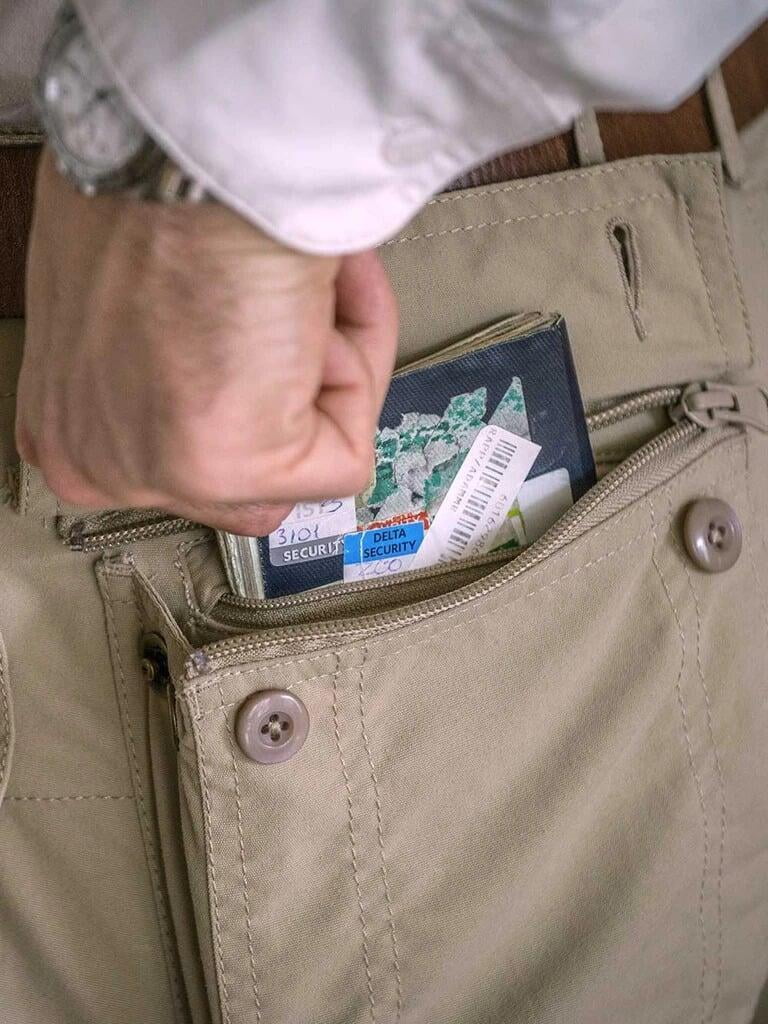
If you want to take your protection against petty theft to the next level, I’d advise you to invest in a pair of special pickpocket-proof travel pants that incorporate double and triple-secure pockets.
The multiple layers of security the pockets of these special pants are designed to deter and slow down pickpockets so that you can figure out what’s happening before it’s too late.
Pickpocket-proof pants also usually employ a tough, slash-resistant material that prevents pickpockets from easily slitting your pockets with a bladed instrument to gain entry.
One of the best products I’ve come across is the Pick-Pocket Proof® Adventure Travel Pants made by the pickpocket-proof clothing brand Clothing Arts.
These lightweight pants (22 oz) are made of Nature-LikeTM Nylon (a material that has the look and feel of cotton with all the benefits of Nylon) and are water resistant, stain resistant, quick drying, breathable and UPF 50+, featuring high-quality YKK zippers, an adjustable waist and a diamond gusset crotch for greater range of motion.
The two front pockets are secured with a zipper and a button-secured flap that guards the zipper and prevents pickpockets from unzipping it. Inside each are two smaller triple-secure inner pockets (one Velcro, one zipper) where you can keep your wallet or smartphone.
The pants also feature two slash-resistant, double-secure cargo pockets with snap closures that are hidden beneath a buttoned outer flap.
The two double secure rear pockets have their zipper completely hidden beneath a button-secured flap and the pockets are both expandable by means of side snaps, which allows them to hold large objects like travel guidebooks.
The left-rear pocket is a bit different to the right as it uniquely has a triple-secure hidden pocket inside it for holding your passport or money.
All in all, the pants possess 11 multi-secure pockets, 5 of them triple secure and 6 double-secure, nonetheless they resemble an ordinary pair of pants to the casual observer, so thieves won’t think you’re trying to hide anything.
If you watch the video on the Clothing Arts’ website, what I’ve written here should make a lot more sense.
#32 - Underwear with zip pockets

If front zip pockets, inner pockets or triple-secure pockets leave you still feeling vulnerable to theft, you might want to investing in underwear that incorporates zip pockets for concealing your valuables (cash, passports, cards etc.).
Underwear pockets make it much more challenging for pickpockets to get their sticky fingers on your precious belongings without resorting to socially inappropriate conduct, and they will most likely move on to the next (easier) target.
Also, if you regularly sleep in dorms full of strangers when you travel, underwear with pockets allows you to keep your valuables very close to your body at night while still letting you sleep in comfort.
There are a number of brands that manufacture underwear like boxer shorts and bras with inbuilt zip pockets, but two of the better-known companies are The Clever Travel Companion and Stashitware.
Stashitware sells a variety of men’s and women’s underwear with built-in pockets for stashing valuables. Their products include men’s boxer briefs, men’s boxers, women’s thongs, women’s bikini briefs and women’s boybriefs.
The Clever Travel Companion sells a variety of pickpocket-proof clothing with integrated secret pockets, including underwear, t-shirts, hoodies, tank tops, long johns, leggings, dresses and scarfs.
Male travellers might also consider these Hide Your Stash Boxer Briefs from iHeartRaves, world leader in rave clothing, EDM apparel and festival fashion. Hide Your Stash Boxer Briefs are primarily marketed at people wanting to protect their valuables at raves and festivals but are also very appropriate for travel.
Female travellers might be interested in the anti-theft travel bra, which is perfect for wearing at the beach, at festivals and just for travel in general. The award-winning design for this bra was created by Brenda Barnett with 20 years experience working for international underwear manufacturer Triumph International.
Although it looks just like any ordinary bra and is just as comfortable to wear (no underwire or itchy labels), the anti-theft travel bra is a cut above other bras; it has secret pockets for storing your valuables.
There are three pockets in total; a side mesh credit card sleeve, a lipgloss centre pocket and a drop-down/fold-up pocket that will stretch to accommodate your passport and which is also a great place to keep cash, condoms or a hotel room key.
All the pockets are made from stretch mesh which stretches to accept the item and then contracts around the item to hold it snugly in place. For added security there’s also a little stitch at the pocket corners such that the mouths of pockets are narrower than the pockets themselves.
If you’d prefer to just buy a secure pouch that clips onto your existing underwear the Braza Secret Stash Pocket is also popular with women. It’s a 4 ¼ “ long x 2 ¾ “ wide rectangular lingerie pocket that can be attached to the apex, wing, bridge etc. of your bra or to the hip of your panties with the 3 inch stretchable Velcro-secured band.
A similar product made by Compass Rose is the button-secured Secret Bra Wallet, which is designed for holding cash, cards and other small articles like your hotel room key underneath your clothing.
The Secret Bra Wallet has an adjustable strap and, like the previously mentioned product, can be attached to different parts of your bra or to your panties, belt loop etc. It also has built-in RFID blocking materials to protect you from digital theft.
If front zip pockets, inner pockets or triple-secure pockets leave you still feeling vulnerable to theft, you might want to investing in underwear that incorporates zip pockets for concealing your valuables (cash, passports, cards etc.).
Underwear pockets make it much more challenging for pickpockets to get their paws on your precious belongings without resorting to socially inappropriate conduct, and they will most likely move on to the next (easier) target.
Also, if you regularly sleep in dorms full of strangers when you travel, underwear with pockets allows you to keep your valuables very close to your body at night while still letting you sleep in comfort.
There are a number of brands that manufacture underwear like boxer shorts and bras with inbuilt zip pockets, but two of the better-known companies are The Clever Travel Companion and Stashitware.
Stashitware sells a variety of men’s and women’s underwear with built-in pockets for stashing valuables. Their products include men’s boxer briefs, men’s boxers, women’s thongs, women’s bikini briefs and women’s boybriefs.
The Clever Travel Companion sells a variety of pickpocket-proof clothing with integrated secret pockets, including underwear, t-shirts, hoodies, tank tops, long johns, leggings, dresses and scarfs.
Male travellers might also consider these Hide Your Stash Boxer Briefs from iHeartRaves, world leader in rave clothing, EDM apparel and festival fashion. Hide Your Stash Boxer Briefs are primarily marketed at people wanting to protect their valuables at raves and festivals but are also very appropriate for travel.
Female travellers might be interested in the anti-theft travel bra, which is perfect for wearing at the beach, at festivals and just for travel in general. The award-winning design for this bra was created by Brenda Barnett with 20 years experience working for international underwear manufacturer Triumph International.
Although it looks just like any ordinary bra and is just as comfortable to wear (no underwire or itchy labels), the anti-theft travel bra is a cut above other bras; it has secret pockets for storing your valuables.
There are three pockets in total; a side mesh credit card sleeve, a lipgloss centre pocket and a drop-down/fold-up pocket that will stretch to accommodate your passport and which is also a great place to keep cash, condoms or a hotel room key.
All the pockets are made from stretch mesh which stretches to accept the item and then contracts around the item to hold it snugly in place. For added security there’s also a little stitch at the pocket corners such that the mouths of pockets are narrower than the pockets themselves.
If you’d prefer to just buy a secure pouch that clips onto your existing underwear the Braza Secret Stash Pocket is also popular with women. It’s a 4 ¼ “ long x 2 ¾ “ wide rectangular lingerie pocket that can be attached to the apex, wing, bridge etc. of your bra or to the hip of your panties with the 3 inch stretchable Velcro-secured band.
A similar product made by Compass Rose is the button-secured Secret Bra Wallet, which is designed for holding cash, cards and other small articles like your hotel room key underneath your clothing.
The Secret Bra Wallet has an adjustable strap and, like the previously mentioned product, can be attached to different parts of your bra or to your panties, belt loop etc. It also has built-in RFID blocking materials to protect you from digital theft.
#33 - T-shirts with hidden pockets
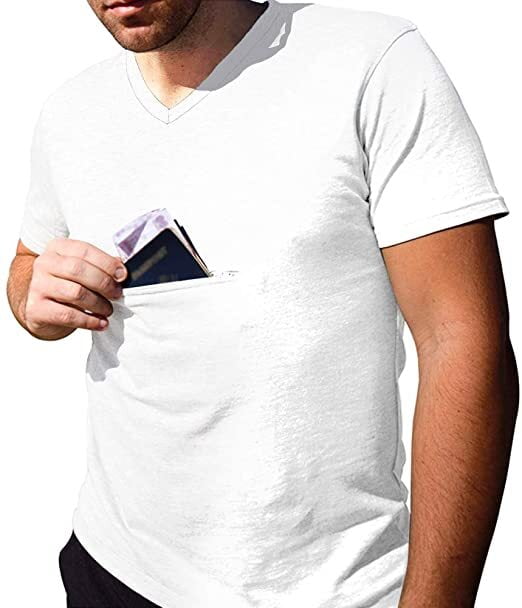
The Clever Travel Companion sells a line of t-shirts with “hidden” pockets, although the pockets only become hidden when you wear the t-shirt underneath a second layer.
This 100% Cotton V-neck T-shirt with a single discreet zip pocket on the front is geared more towards men and comes in black, grey and white. The pocket is large enough to hold your passport, cash, wallet, cell phone, keys and so on.
Although women can also wear the above-mentioned t-shirt, a better option for the gals is this Women’s Fitted V-Neck T-shirt.
It has two secret, secure zip pockets placed below the armpits that are perfect for holding your passport, cash, credit cards, keys and cell phone. The material is 95% cotton, 5% spandex and the zippers won’t set off the metal detectors at airport security.
#34 - Socks with zip pockets
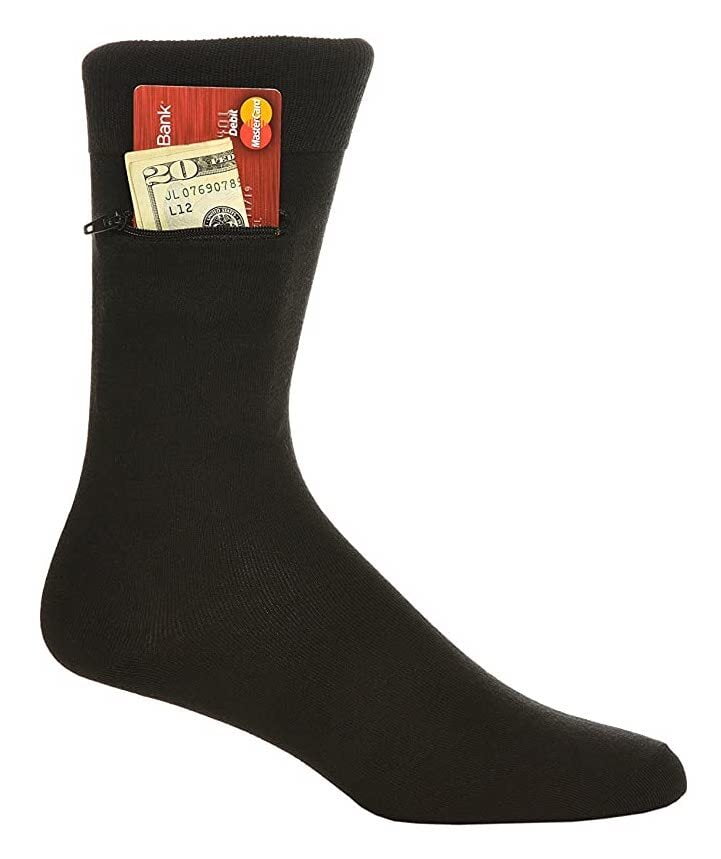
You can also buy socks with zip pockets from the travel accessories brand Zip It Gear.
The idea to create these unusual socks was born when the founder of the company, Evan Papel, was pickpocketed one day while travelling in Europe.
Zip It Gear sells different kinds of men's and women's pocket socks, which have a single zip pocket located on the outer side of the sock, just below the cuff region. The socks are anti-microbial, moisture wicking, eco-friendly and have a padded footbed for impact absorption.
The zip pockets in the socks are perfect for holding passports, cash, bank cards and ID and the company claims that you won’t even feel the items inside the pocket and they won’t cause any problems rubbing against your leg.
Women should check out these black dress socks (75% cotton, 15% spandex, 10% polyester) that come in a 3-pack. You can rest assured that the nylon zippers won’t set off the metal detector at airport security.
The company also makes these one-size-fits-all socks for men, which come in four colours (beige, black, navy-blue and white). The zip pockets will hold your passport, cash, cards, ID, you name it. The socks are 80% bamboo, 18% spandex and 2% rubber, while the pockets are 90% polyester and 10% spandex.
Section 3: Travel safety gear & accessories
Anti-theft clothing is one thing, but there are also a lot of great accessories out there that can enhance your safety on the road.
From gadgets that help to protect your belongings from thieves to disguised weapons that help you defend yourself from an assailant, here are our favourite travel safety accessories.
#35 - Anti-theft backpack
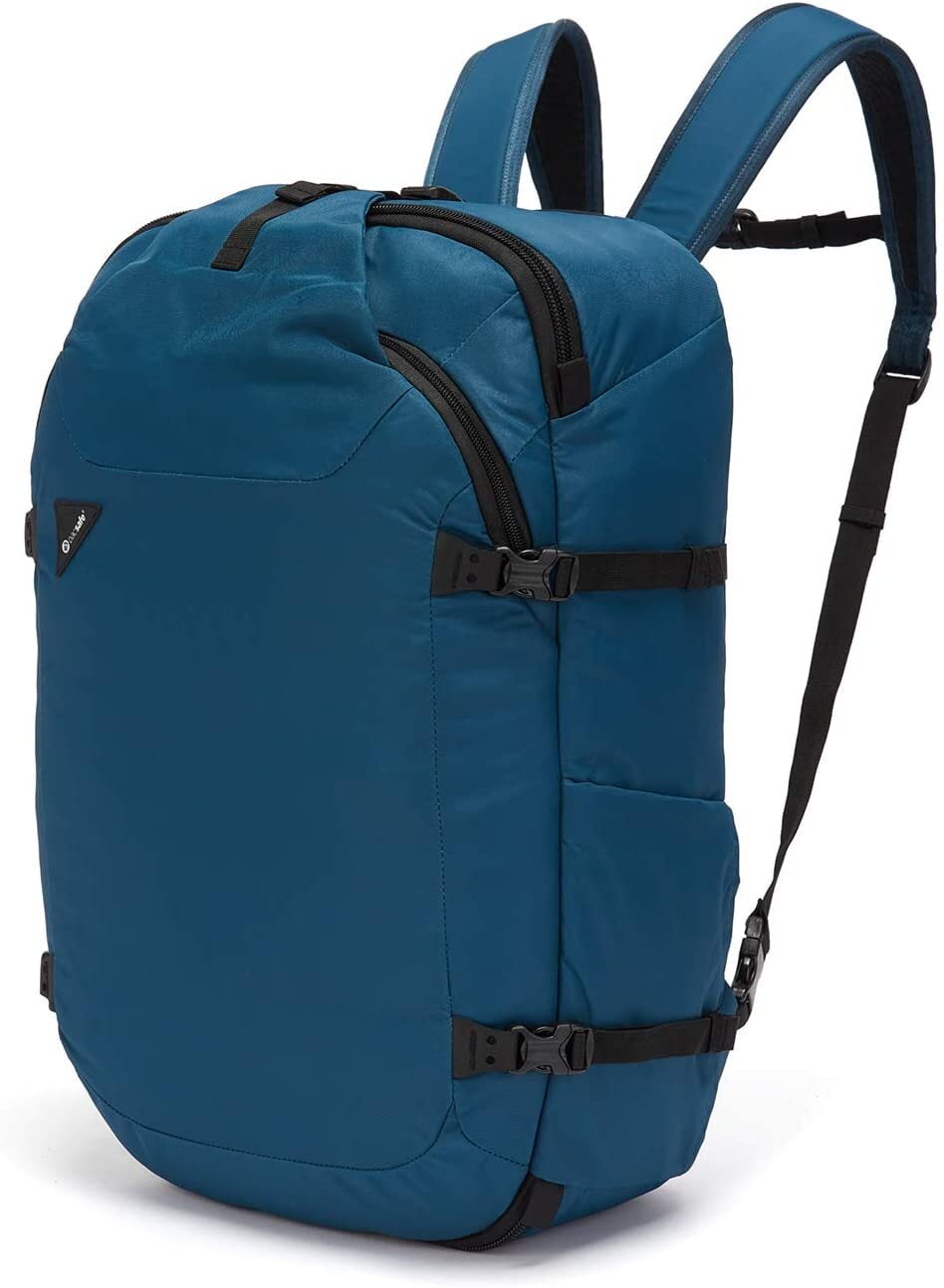
Did you know that while walking down a busy street, practiced thieves trailing behind you can easily unzip your backpack and take your belongings out of it without you even noticing?
The task is made even easier for the baddies if you’re listening to music with headphones, absorbed in conversation with somebody or distracted by interesting things in your environment.
Instead of fully unzipping your bag in one go, these wily thieves will swoop in and unzip the bag part of the way and then retreat, repeating this process as many times as is necessary until the bag is unzipped enough to allow something of value to be lifted out of the bag.
This type of attack can also easily happen to travellers that are crammed into packed buses and trains, at large public gatherings, at bustling local markets, at festivals and in many other crowded situations.
The problem with run-of-the-mill backpacks is that they just don’t offer any protection against attempts to infiltrate them. Even if you padlock the zipper sliders together, thieves can still pry open the zipper teeth, slash through the fabric or even slice through a shoulder strap to release the backpack from your body.
If you want to better protect your backpack against petty theft, you might consider investing in an anti-theft backpack.
These backpacks are equipped with a number of special features that not only protect their contents against unauthorized access, but also make it a lot more difficult for crooks to make away with the entire backpack.
These special anti-theft features can include:
Panel-loading design
Anti-theft backpacks often use an unusual back panel-loading design, which means that the zippered opening panel is located at the back of the bag and remains in contact with the wearer’s back when the backpack is worn.
This makes it almost impossible, even for expert thieves and pickpockets, to unzip the backpack and access the contents without the wearer noticing.
A panel loading design also means that the backpack can be opened up in a similar manner to a suitcase (clamshell design).
Slash-resistant shoulder straps
Slash-resistant shoulder straps are a standard feature in most anti-theft backpacks and their purpose is to prevent a thief from slashing one or both of the straps so that he can more easily snatch it off the victim’s body.
Shoulder straps are usually rendered slash-proof by running a length of metal wire through the straps of the backpack, so that a thief’s attempts to cut the straps with a knife or razor blade are thwarted.
Slash-resistant material
A good anti-theft backpack will be made from a strong, slash-resistant and puncture-resistant material, often with a stainless steel mesh running through it.
This is important because many thieves will bypass the zipper and will instead just slash bags open with a blade to gain immediate access to the contents.
Interlocking zipper sliders
Many anti-theft backpacks feature zipper sliders than can be locked together using a special mechanism, negating the need for you to carry a luggage lock.
Puncture-resistant zippers
The interlocking zipper teeth of most backpacks can be easily punctured by applying pressure with a pen, scissors or other pointed object. We have verified how easy it is to do this for ourselves and there are plenty of videos on YouTube demonstrating the technique.
Once the pointed instrument has penetrated through the teeth of the zipper and an initial opening is created, the thief can just pull apart the rest of the teeth with ease, gaining full access to the bag.
Anti-theft backpacks usually come with puncture-resistant zippers that aren’t so easily defeated with this crude technique.
Internal hidden pockets
If a thief manages to gain access to the interior of your backpack, one of your last lines of defence against theft is to keep your valuables secured inside internal hidden pockets. Some anti-theft backpacks come with internal pockets that are very discreet or very difficult to find unless you already know where they are
The anti-theft backpack that we recommend for most travellers is the PacSafe VentureSafe EXP45, which comes in three colours (black, eclipse, plum) and a 5-year PacSafe warranty.
With an ample 45L of capacity, the VentureSafe EXP45 is just about at the limit of what most airlines will permit as hand luggage, so it's big enough for longer trips as well as short ones.
The backpack has a number of anti-theft features, including slash-resistant, nylon-polyester fabric embedded with eXomesh Slashguard (a lightweight steel wire mesh embedded in the fabric), cut-resistant shoulder straps, interlocking zipper sliders and puncture-resistant zippers.
It even comes with a 3mm stainless steel locking cable that you can use to tether the backpack to a fixed object with a padlock (not included).
An outstanding feature of the backpack is the Roobar anti-theft anchor lock, which can be used to lock down your zippers and also acts as a lockdown point to secure the backpack to a fixture using the provided steel locking cable.
The backpack has plenty of other regular features like two side stretch pockets for a water bottle or umbrella, compression straps, adjustable hip and sternum straps and a hold strap at the top that can be used to hold a jacket or travel pillow, and also protects the zipper locking mechanism from attacks.
There’s a padded handle on the side of the backpack that allows you to carry it like a duffel bag, and you can also tuck the stowable shoulder straps away so that they become invisible, a feature that comes in especially handy when you want to check the backpack on a plane.
The backpack has two lockable compartments; a roomy main compartment that opens up like a suitcase for easy access to the contents, as well as a smaller front compartment that has a padded, Velcro-secured laptop sleeve (up to 15”), two internal zippered mesh pockets and other pouches for keeping miscellaneous items.
#36 - Anti-theft camera bag
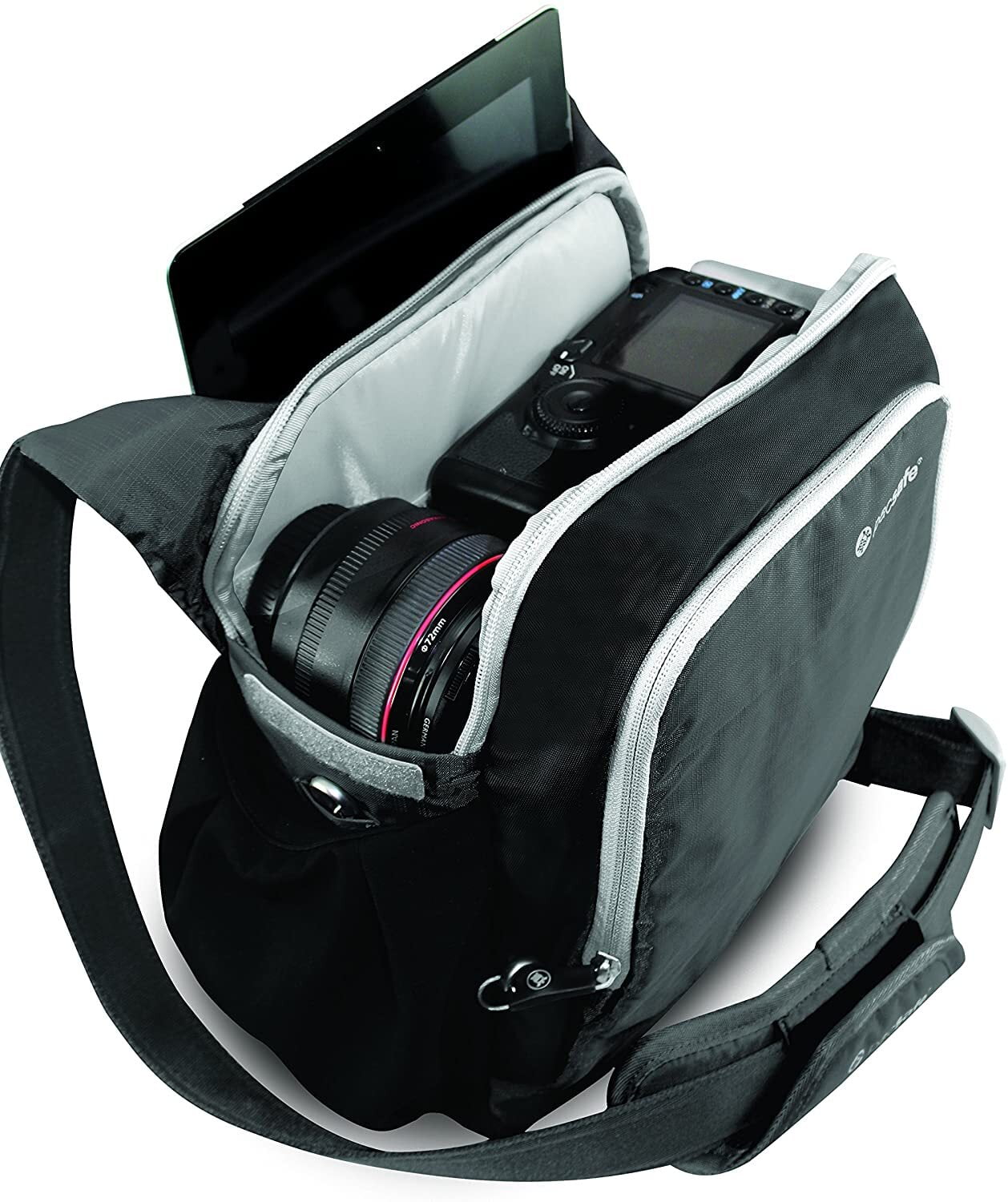
Cameras are one of the most valuable items that travellers carry and these days a lot of travellers are carrying around expensive DSLRs, mirrorless cameras and action cameras to document their trip.
Professional travel photographers and filmmakers are especially vulnerable to theft, as they’re likely to be carrying high-end DSLR cameras, expensive prime lenses, Glidecams, Gimbals and other expensive equipment that can make a criminal’s eyes light up with excitement.
Once you start getting serious about travel photography and you start carrying more expensive camera gear, you really ought to invest in a special camera bag with anti-theft features to protect and store all that gear.
It makes no sense to spend big money on camera gear and then not invest a substantially smaller amount of money in keeping that gear well-protected.
Fortunately there do exist a few highly-regarded camera bags and cases that have been designed with such features in mind, to counteract thievery.
Unsurprisingly, one of the most popular such camera bags is the Pacsafe Camsafe V8 anti-theft camera shoulder bag from Pacsafe, an industry leader in anti-theft gear for travel.
The bag weighs 1.68 lbs (0.76kg) and measures 12.6" x 9.4" x 5.3" in (32 x 24 x 13.5 cm). Its adjustable, crossbody Carrysafe Slashguard strap is reinforced with lightweight, flexible stainless steel wire that runs all the way through the strap and guards against slash-and-run theft.
The buckle on the shoulder strap has a dual-release mechanism, which makes it difficult for a thief to open it and allows you to secure the bag to a fixture like the leg of a bus seat.
The fabric of the bag is embedded with eXomesh Slashguard, a lightweight, flexible stainless steel wire mesh that serves the same purpose as the wire in the strap.
The third important anti-theft feature in this camera bag is Smart zipper security, which allows you to lock down the dual-zipper with the discreet hooks on the side of the bag.
Aside from these important security features, the camera bag has three main zippered compartments and two side stretch pockets that can hold large water bottles.
Inside the front compartment is an organizational panel with a few small pockets for smaller items like keys and memory cards, as well as a pen-holder. The star of the show here though is the Velcro-secured pocket with RFID blocking material – perfect for keeping IDs and cards.
The thickly-padded main compartment of the bag is very roomy and has enough space for a full-sized DSLR and two or three lenses, including one long zoom lens. Inside are two padded dividers for keeping your camera body separate from your lenses.
The padded flap that covers the main compartment is double-secured by a dual-zipper (with a boomerang handle) and Velcro, so the compartment is difficult to access with one hand.
At the rear of the bag next to your back is the third compartment - a sleeve that fits an iPad or a 10-inch tablet.
On the underside of the bag you’ll also find a hideaway built-in raincover to protect your precious camera gear from splashes and downpours.
#37 - Flashlight or headlamp
When travelling, you sometimes find yourself having to walk in the dark of night or under the faint light of the moon and stars.
Maybe you’re hitchhiking at night on a lonely country road, unexpectedly returning late from a hike, or navigating an unlit city street as you make your way back to your hotel after a night on the booze.
Unfortunately though, dark or poorly lit scenarios like these are any wrongdoer’s greatest ally. So how can you ensure that the baddies and villains of this world can never use the cloak of darkness to gain the upper hand over a traveller like you?
Well, the solution is fairly simple actually. All you have to do is carry a rechargeable or battery-powered headlamp or a flashlight with you at all times, so that you are always able to remove the cloak of darkness beneath which criminals prefer to operate. It's like carrying your own portable streetlight with you everywhere you go.
If someone still wants to have a go at you, the bright light from a headlamp or flashlight can be aimed into an attacker's eyes to dazzle him, thereby giving you a chance to escape.
I usually carry both; a headlamp is preferable when you need to be hands-free (like scrambling over boulders during a hike or climbing down into a cave), while a handheld flashlight is more manoeuvrable, more powerful (usually), and if it’s heavy enough you can also use it as a weapon to clobber an assailant over the head with.
The headlamp we recommend for travellers is the Petzl Tikka .
Available in four colours (red, black, green and blue) and weighing just 2 oz (less than 3 oz including batteries) it's a compact, lightweight, bright, durable, dust-proof and splash-proof headlamp with outstanding battery life.
The lamp emits a wide-angle beam with a max output of 200 lumens (a typical LED headlamp only puts out around 50-100 lumens) and comes with five different lighting modes so that you can have optimal lighting for every situation.
The white beam can be adjusted between low, medium and high power modes and you have a red beam mode and red strobe light mode to boot.
On high power mode (for illuminating faraway objects) the beam range is 60 metres, on low power mode (for immediate surroundings) its 10 metres and on red beam mode (for preserving night vision or to avoid blinding members of a group) the range is 5 metres.
The fully adjustable, reflective head strap is comfortable to wear and even features an integrated, low-profile 100 decibel safety whistle for emergencies.
The lamp itself is splashproof (IPX$ rated) and is fitted with a single button for turning it on/off and for cycling between the various beam modes, making it relatively easy to use compared to many other headlamps.
The lamp runs on three standard AAA batteries and boasts an impressive 240 hours of battery life on low power mode and 60 hours on high. It’s also compatible with the Petzl CORE Li-ion rechargeable battery, which is sold separately.
A really neat feature of the Petzl Tikka is its glow-in-the-dark locator (a phosphorescent ring around the bulb), which self-charges while the headlamp is in use and allows the lamp to be easily located in the dark if you suddenly get caught off guard (like when a power cut strikes).
#38 - Safety whistle
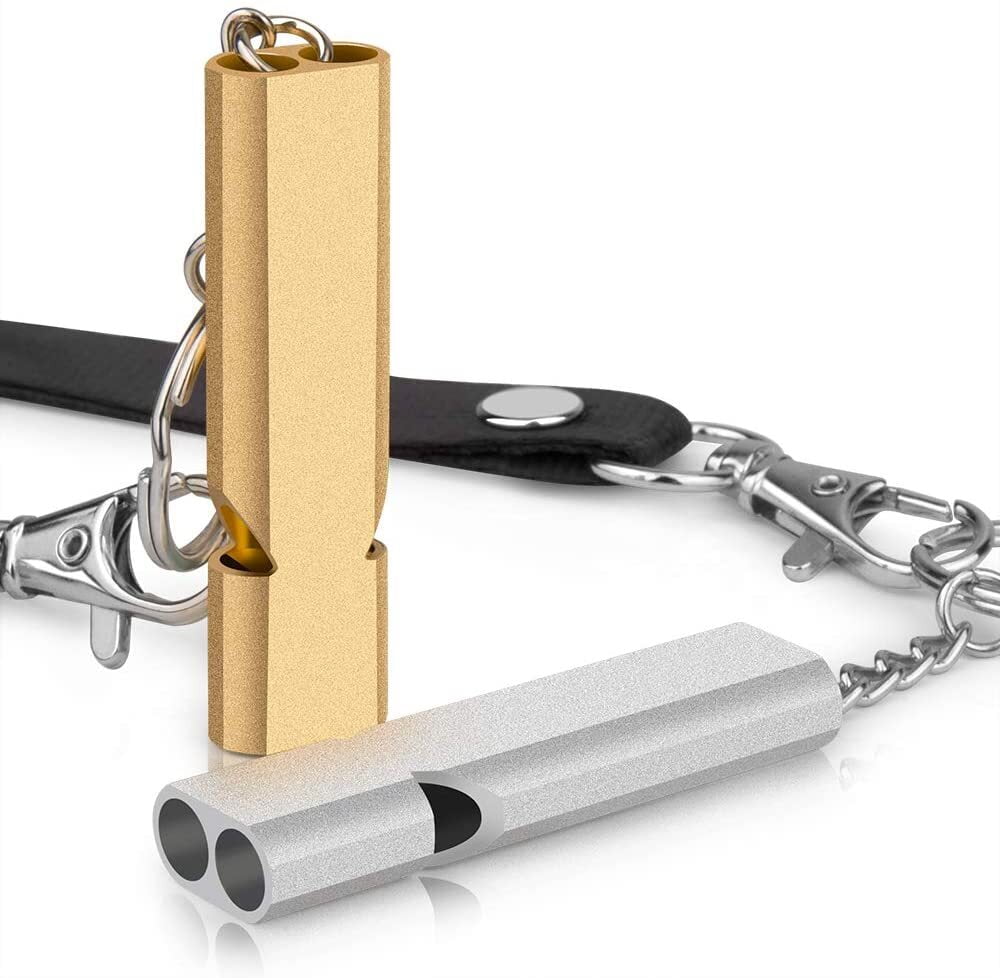
Small but powerful, safety or emergency whistles are commonly carried by police, mariners, outdoorsmen, hunters, hikers, travellers and many other folk who might get into trouble at some point or another during their escapades.
So, how does a safety whistle make a traveller any safer?
Well, the idea is that if you get into a spot of bother, you blow the hell out of it and hopefully the loud, shrill sound attracts somebody’s attention so that they come to your rescue.
The deafening, piercing sound produced by an emergency travel whistle can also disperse aggressive monkeys, stray dogs and other dangerous animals that travelers might be threatened by, probably because it really hurts their ears.
You might blow the whistle to attract attention if you’re beset by a pack of snarling street dogs, if you get disoriented in the fog on a mountain or if a hooded figure approaches you menacingly in a deserted alleyway.
I have carried a small survival whistle on my keyring for years and it is incredibly loud when I blow it hard. A loud whistle is advantageous when you’re in a remote location or when the people whose attention you're trying to grab are cocooned inside concrete buildings that muffle outside sounds.
Luckily, I have never had to use my whistle, but Jody from Legal Nomads wrote an entertaining article where she recounts a number of instances during her travels where her safety whistle actually saved her butt.
In Jody’s case, a whistle helped to get her boat rescued when it ran out of diesel on the Irrawaddy River in Myanmar, saved her from a troop of hostile wild monkeys while climbing Mt. Zwegabin (also in Burma) and even got her liberated from a toilet that she managed to incarcerate herself inside while travelling on a train in Thailand
The best emergency whistle for most travellers is the very inexpensive Shvivik Emergency Whistle.
It’s made from a strong and durable aluminium alloy and is very shrill and loud (up to 120 dB) due to its double-tube design. The whistle still works when wet and won’t get jammed with dirt or saliva either because it uses pealess technology.
The Shvivik Emergency Whistle also comes with a lanyard (18.5 inches long) for wearing it around your neck, and can easily be attached to a key ring. You actually get two different versions of the whistle with this product - a golden and a silver version.
Female travellers might prefer the SLForcePersonal Alarm, a very nifty little gizmo that sounds a screeching 130 dB alarm, which is as loud as a military jet taking off.
To activate the alarm, you simply tug on the hand strap, which pulls out the pin on the side of the device. The alarm can be deactivated by replacing the pin.
The advantage that this device has over a whistle is that you could still sound the alarm even if an attacker put his hand over your mouth or if you couldn’t bring the whistle to your mouth for some other reason. The alarm comes with a keyring, so you could easily thread it onto a belt loop of your jeans and have it always ready.
The SLForce Personal Alarm also features a mini-LED flashlight to light up the dark and even comes with a free D-ring carabiner as a bonus. It's available in five different colours.
#39 - Luggage lock
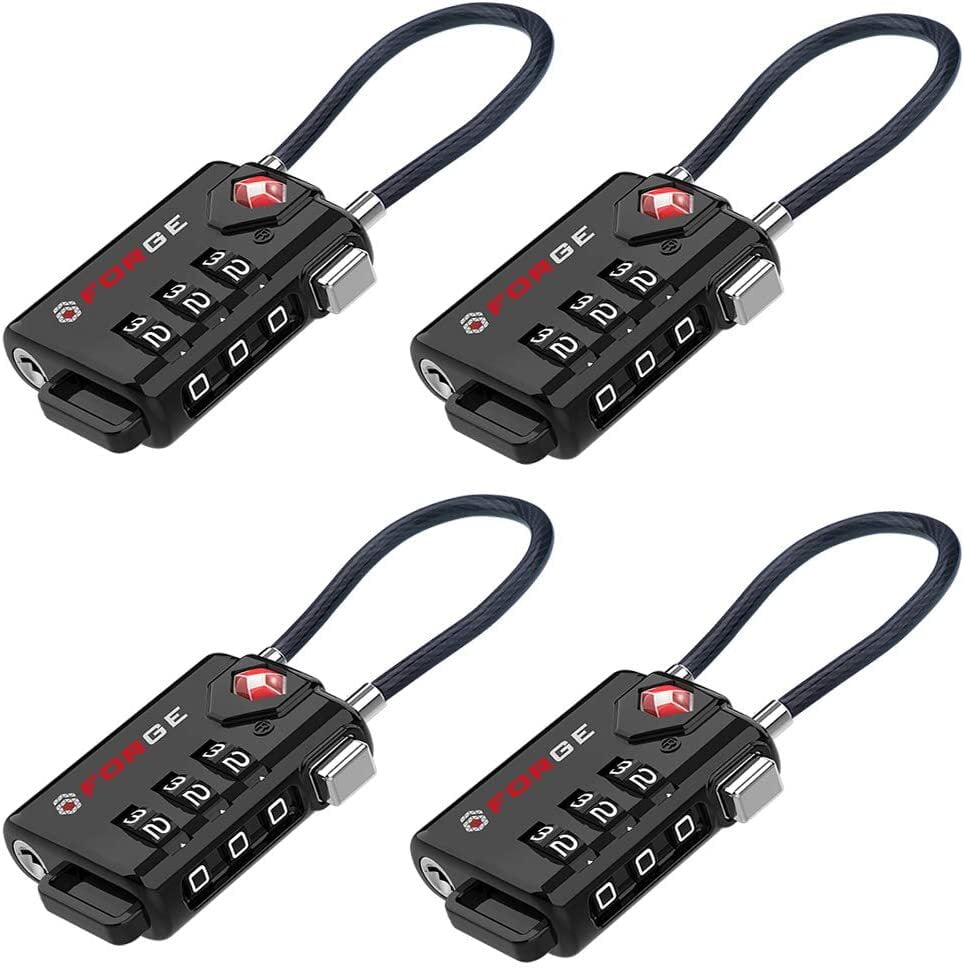
One of best ways to deter thieves and pickpockets when you’re travelling is to secure your luggage with a humble luggage lock. If your luggage has multiple compartments that need to be secured you may wish to pick up a few of these.
The main compartments of most travel backpacks and most suitcases are fitted with dual zippers, which can be shackled together with a luggage lock by threading the shackle of the lock through the holes in the zipper pulls or sliders.
While this is far from a foolproof method of securing your backpack (a thief can still slash open your bag with a blade, puncture the zipper with a ballpoint pen or other pointed object, force open the luggage lock or even just nab the entire bag), it usually doesn’t have to be; the presence of the lock will encourage most thieves to move on and find an easier target.
Even if a thief still decides to have a go at infiltrating your luggage, the lock will at least slow him down and increase the likelihood that you or someone else will notice what he’s up to before he has gained entry.
For most travellers we recommend the TSA-approved Cable Luggage Lock from Forge.
This is a tough and durable 3-dial combination lock made from a special zinc alloy, which has high impact strength but is also lightweight. When in the locked position, the cable can handle a pull weight of over 220 lbs, which is 70 to 100 lbs more than what most other luggage locks can take.
Forge is so confident in the strength of their luggage locks that they offer an unconditional lifetime guarantee and they even challenge customers to find a way to break their locks.
The lock uses a thin yet strong, flexible, sheathed, braided steel cable for the shackle, so that it can be easily threaded through a wide variety of zippers, hard equipment case holes and other luggage fixtures.
The high-contrast (instead of chrome) number dials display the white numerals against a black background for easier visibility in bright fluorescent lighting, like that found in airport baggage terminals.
Setting a new combination on the lock can be easily done by flipping the small recessed switch/lever on the lock to the right using a pen, choosing the new combination and then flipping the switch back to the left again.
Not only does this mechanism make setting the combination a breeze, but it also makes it very difficult to accidentally change the combination, which can be an issue with some of these luggage locks.
If you’re not a carry-on traveller and prefer to check luggage, The Travel Sentry Logo displayed on the lock lets TSA (Transport Security Administration) inspectors at the airport know that they can use their special key to open the lock via the keyhole on the bottom.
The lock is also key retaining, which means that a TSA inspector has to re-lock your luggage in order to remove their key, so if you’re travelling with checked luggage, you won’t have to worry about your bag being left unsecured after an inspection.
#40 - Security Belt
Most travellers would agree that it’s always a good idea to keep a stash of emergency cash somewhere, just in case you can’t get money out of an ATM when you need to. But did you ever consider that you could use an innocent-looking trouser belt to conceal a wad of cash?
While discrete pockets in clothing are also a good place to hide emergency cash, I daresay that a criminal would be even less likely to suspect you to be secretly harbouring cash inside your trouser belt.
This unisex security money belt from Jasgood comes in two different sizes (26” - 40”and 41” - 50”) and has a 28” long, zippered pouch hidden on the inner side of the belt. This discrete pouch cannot be unzipped or accessed without removing the whole belt.
Inside the secret pouch you can keep an emergency supply of cash, as well as other important small items (keys, USB flash drive, passport copy etc.) that you want to protect.
The extra-wide design of the pouch ensures that bills only need to folded once lengthwise to fit them inside. It has sufficient capacity to hold hundreds of Euros or Dollars, even if you only have smaller bills.
The belt itself is made of high-quality nylon webbing and the genuine, durable YKK plastic buckle ensures a hassle-free experience passing through airport security.
#41 - Hidden pocket
When you wants to conceal cash, cards, ID and other valuables, one possible alternative to a security belt is a hidden pocket - a small zippered pouch that loops onto your trouser belt and tucks into the waistband of your pants for concealment.
One of the most popular hidden pockets is the Undercover Hidden Pocket made by Eagle Creek.
Made from durable and lightweight nylon ripstop material, the Undercover Hidden Pocket weighs less than 1 oz and is a cleverly designed product with two differently coloured (coffee and black) belt loops so that you can choose the loop that’s best camouflaged against your belt.
The pocket’s dimensions are 6.7 x 4.3 x 0.1 inches and it has two smaller mesh pockets inside for organizing your passport, cards, currency, keys and ID photocopies. It also has a breathable, moisture-wicking mesh back panel.
If you’re looking for a hidden pocket that also has RFID-blocking capabilities check out this one made by Lewis N. Clark or this one made by Shacke. Both are highly rated.
If you don’t wear a belt or are looking for an alternative and possibly cheaper solution, you can also buy a set of pre-fabricated secret cotton zip pockets and sew them onto the inside of your pants, shorts, dress, jacket or wherever else you like.
These pockets can hold cash, cards, wallets, money clips, iphones, passports, keys and more. The pockets can be sewn on or you can attach them with iron-on tape instead.
Refer to Andy Lee Graham's (HoboTraveler) instructional video on how to install the secret pocket correctly in a pair of pants. Also check out this video on how iron-on tape is used to join two pieces of fabric together.
If you don’t have sewing skills, you can also hire a local seamstress or tailor to do the job for you, for somewhere between $2 to $10 per pocket depending on the country and your haggling skills.
If you’re taking this approach, it’s generally recommended to sew a hidden pocket into every pair of shorts, pants, dress etc. that you carry with you during your trip.
That way no matter what outfit you’re wearing you’ll always have a secure pocket to keep your belongings away from the hands of pickpockets.
#42 - Neck wallet
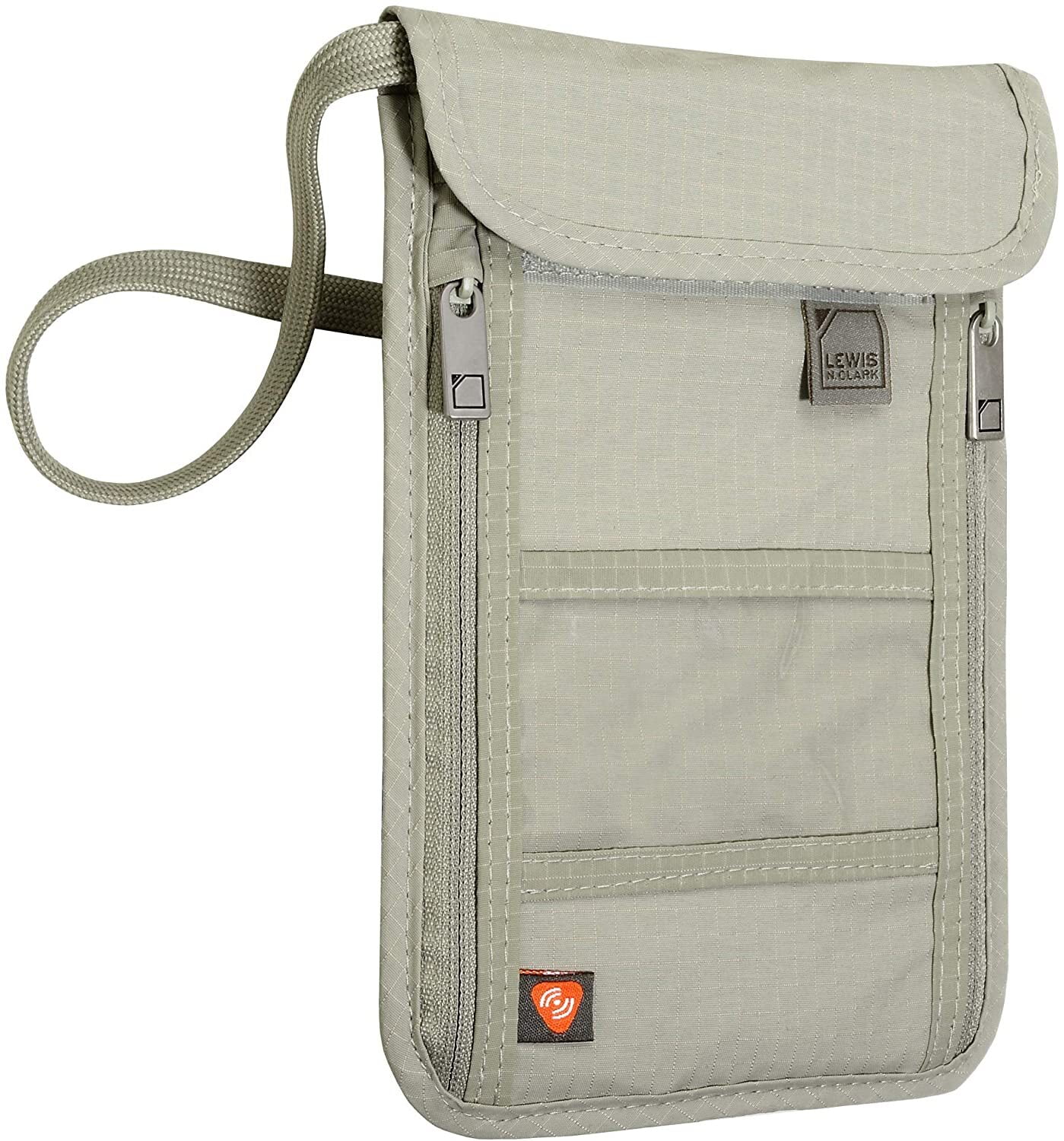
A popular alternative to the hidden pocket is the neck wallet, also known as a neck pouch.
A neck wallet holds your ID, cards, cash and so on like a regular wallet but has an adjustable lanyard that allows you to hang it from your neck like a necklace so that it remains concealed underneath your shirt while you go about your business.
There are many competing neck wallets but one of the most highly rated is this one made by Lewis N. Clark, coming in five colours (black, gray, navy, taupe and olive) with a fully adjustable neck lanyard.
The wallet has a slim, low-profile design (11" x 6" x 0.1") with four compartments in total; two zippered pockets for your cash and cards, a Velcro-secured mesh compartment for your passport and a see-through window pocket for your ID. It’ll also hold a smartphone, music player and other similar items.
The wallet weighs just 1.6 oz thanks to the lightweight but strong rip-stop nylon material and incorporates RFID blocking technology to prevent electronic pickpocketing.
The other important feature of this neck wallet is the special Travel Dry fabric that the back is padded with. This wicks away moisture from your skin and dries quickly, thus resisting the development of odours, mildew and shrinkage.
#43 - Leg wallet

Another great way to conceal cash is with a leg wallet. These normally strap onto your leg below the knee and remain hidden as long as you’re wearing long and fairly loose pants (tight pants or skinny jeans may show a slight bulge from the wallet underneath).
One of the most highly-rated leg wallets is this one made by Enroute. It's a very popular accessory with travellers and also with runners and joggers. People find it comfortable to wear and many report that they can hardly even feel it against their leg.
The wallet measures 5 inches long and 4.75 inches wide and is made of a soft, stretchy lycra material. It's designed to strap onto your calf muscle area like an ace bandage and the stretchiness allows it to fit a range of different leg sizes.
The two zippered pockets will hold cash, two passports, ID, bank cards and hotel room key. You can also tuck your cell phone between the wallet and your leg and can even fit a small cell phone inside the pockets.
Note that because the wallet contours to the shape of your leg, passports that are kept inside it will bend but don't worry, as they can be easily straightened out again.
Some reviewers have suggested that it would be useful to have two of these leg wallets and use one exclusively for passports and the other for cash and cards in order to avoid creating too much of a bulge.
#44 - Wrist wallet
A wrist wallet is another interesting option for travellers to carry cash, bank cards, hotel room keys and ID. As you might guess, a wrist wallet is like an ordinary wristband, but with the addition of a zip pocket or two for keeping things inside.
A wrist wallet is not usually concealed (unless you keep it hidden under a long-sleeve shirt), as it possesses the power of deception; most thieves will mistake it for an ordinary wristband or sweatband.
These wrist wallets from The Friendly Swede come in four different colours (black, green, grey, white) and two different sizes (small/large) and are very popular, highly-rated and comfortable to wear (80% cotton, 12% rubber cord, 8% polyester).
Each wrist wallet has a water-resistant zip pocket that will hold keys, cash, credit cards etc. (they don't hold mobile phones) and also works great as a regular sweatband. You can also use these wrist wallets as a sleep band if you're a FitBit user, and to carry along your FitBit or other activity tracker during the daytime.
#45 - Diversion safes
Sometimes, the best place to hide something is where nobody would ever to think to look for it. A thief that breaks into your backpack or hotel room would never expect to find cash or other valuables concealed inside something that resembles say, an ordinary shampoo bottle.
Many companies have grasped the usefulness of this concept of diversion safes, and have created various portable receptacles that can be used for stashing valuables, but that are disguised as unremarkable everyday items.
So, while that thief is rummaging in all the obvious and wrong places in search of your personal treasures, your valuables can remain safely hidden inside one of these so-often overlooked diversion safes.
Here are a few different types of diversion safes that you could carry in your anti-theft backpack while travelling:
Hairbrush diversion safe by Stash-it – Up to 30 rolled dollar bills can be hidden inside this realistic looking and fully usable hairbrush. The end cap of the brush unscrews to reveal a 4” x 1.25” cylindrical chamber inside, a perfect place for hiding cash, flash drives, keys, jewellery and other small items.
Screwdriver diversion safe by HumanFriendly – This looks like any ordinary one-piece screwdriver, but can be disassembled into two parts to reveal a hollow receptacle inside the handle - a great place to stash a few bills and other small valuables. Because it’s less than 7 inches in length, it’s okay to have it in your carry-on according to the TSA regulations.
Water bottle diversion safe by Stash-it – The bottom of this stylish looking stainless steel water bottle unscrews to reveal a small 2.5” x 2.5” safe for hiding valuables. This reduces the capacity of the bottle slightly, but you can still use it as a normal 16 oz water bottle for drinking out of. It has an airtight seal and is leak-proof.
Bindle Bottle diversion safe by Bindle – This 20-24 oz stainless steel, double-walled, vacuum insulated water bottle not only keeps drinks hot for 12 hours and cold for 24 hours, but also has a spacious secret storage compartment at the bottom that can hold cash, keys, bank cards and other valuables. The bottle comes in 9 attractive colours and was featured on the Oprah’s favourite things gift ideas list of 2018.
Red Bull Can diversion safe by Smarter Ideas – This is a genuine can of Red Bull that has been modified so that the top screws off to reveal a receptacle inside, where you can stash cash, jewellery, keys, SD cards and other small valuables.
Book diversion safe by Eioumax – From the outside, this safe resembles a hardback copy of Alice in Wonderland, the classic novel by Lewis Carroll. It has actual paper pages that have been hollowed out and fitted with a lockable stash compartment measuring 6.5”x 3.9” x 1.5”, which is roomy enough to hold a passport, large necklaces and some other fairly substantial items. This diversion safe might be a better fit for a bookshelf in your home than for a backpack, but we still thought it was worth mentioning here.
Scrunchy diversion safes by LokiStashed – This 3-pack of velvet scrunchies in three colours (tan, navy and black) comes with a twist; the scrunchies all have a secret zip pocket (with a high-quality invisible zipper) for keeping small items like keys and cash.
Concealing larger items of value like laptops is a bit more challenging, but some travellers have suggested hiding laptops, tablets and other electronic devices inside those large courier envelopes.
This is probably more effective than doing nothing, but there’s always the risk that a thief would be curious about what’s inside the envelope; we all know how difficult it is to resist opening a package that arrived for us in the mail.
#46 - Laptop Lock
Do you ever travel with a laptop and use it in cafés, airports, railway stations, hotel lobbies or on the metro during your time abroad?
Have you ever worried that someone might snatch your laptop right from under your nose and bolt for the building exit while you’re momentarily distracted?
Well, your fears wouldn’t be entirely unfounded, as such incidents are far from unheard of.
Or what if a burglar was to break into your hotel room and steal your laptop while you were out enjoying an evening meal? Unfortunately, this sort of thing has happened to travellers before too.
A technology research firm called Gartner estimates that a laptop is stolen somewhere in the world every 53 seconds. Luckily, there is an easy way to fight back against laptop theft; use a laptop lock.
A laptop lock is basically a steel cable that attaches securely to your laptop at one end and to a fixed anchor point at the other end. It prevents someone from grabbing your laptop and dashing off with it. Commonly used anchor points include the leg of a desk or table. Some desks in professional workspaces are even specially fitted with permanent anchor points.
If your laptop has a built-in security slot (and most do) as part of its port array, then you’re in luck, as you’ll then be able to choose from a wide selection of laptop locks.
The majority of laptops have a Kensington Security Slot, which is compatible with several different types of keyed and combination locks made by Kensington itself, as well as by other third-party manufacturers.
You have to be careful when choosing a lock though, because there are three different locking mechanisms used in Kensington Security Slots. The most common is the T-bar mechanism, but there’s also the N17 (a wedge-like mechanism) and the nano lock, which is rarely encountered.
If you’re not sure what type of locking mechanism your laptop has, refer to the documentation that came with it or check the manufacturer's support website. You can also use Kensington’s lock selector tool where you select your laptop manufacturer and model to find a lock that’s compatible with your machine.
The bestselling laptop lock on Amazon is the Kensington Combination Cable Lock, which has a resettable 4-dial combination lock (10,000 possible combinations) so that you don’t have to worry about losing a key.
The lock head is strong and tamper-resistant, and uses a convenient push-button mechanism to install or uninstall it in your laptop using one hand. This one uses the T-bar locking mechanism.
The carbon-fibre, cut-resistant cable is 6 feet long and 4.4 mm thick, and is encased in a protective sheath. In the "ultra" version of the lock, which is priced slightly higher than the "regular" version, the cable in 60% thicker.
If you have a Macbook or other laptop that lacks a security slot, I would recommend the Kensington laptop locking station as a potential solution.
With this system, you secure your laptop to the locking station, which has a Kensington Lock Slot in it that allows the station to be secured to an anchor point via the 6” long steel cable.
You can choose from three different locking mechanisms; combination (cheapest), keyed (more pricey) or electronic (most pricey).
The locking station has a sleek, brushed aluminium design and has adjustable security arms that can accommodate laptops with screen sizes from 11” to 15”. T
The security arms clamp onto the base of your laptop’s screen without blocking any of the side ports, while scratch-resistant bumpers on the back wall and base of the locking station protect your laptop from cosmetic damage.
#47 - Cell phone leash
Now that you know how to secure your laptop, you just need to learn how to secure the other device that you probably wouldn't travel anywhere without - your cell phone.
Various gizmos and doodads now allow you to tether your smartphone or tablet to your backpack or body, so that your precious devices don’t accidentally fall out of your pockets and get lost or damaged, and so that thieves have a harder time lifting them from you.
One of the most popular gizmos is the Frog’s Tung Cable Cell Phone Leash. It consists of a high-grade curly cable (165 lbs of tensile strength) that extends up to 30 inches (75 cm), with a 1" x 1.5" industrial-strength adhesive tab at one end and a snap clip at the other.
The adhesive tab sticks on to your cell phone, camera, tablet, GPS unit etc., while the snap clip can be quickly attached to your pocket, backpack purse or belt loop.
Watch these videos on the company’s website for a better understanding of how this product works and how to apply the adhesive pad to your device.
Another gadget that serves the same purpose is the MyBungee Cell Phone Protector, although this one is specifically designed for your phone. The company's catchline is “Get a grip – Bungee it!”
This little gadget helped to drastically reduce the incidence of accidental mobile phone loss & theft at the 2015 download festival in Leicestershire. Only 11 incidents of mobile theft were reported at the festival that year because so many people were using the MyBungee Cell Phone Protector.
The MyBungee Cell Phone Protector is made of soft silicone, comes in five fashionable colours (blue, black, pink, purple and clear) and consists of an elastic curly cord that has a stretchy silicone loop at one end, which allows it to be securely attached to any cell phone (except the flip-up phones). The other end of the cord easily clips onto your backpack, handbag, purse or belt loop.
The elastic cord can stretch from your belt all the way to your ear, so that you can still talk on the phone when the cable is clipped to your belt loop.
If your phone was to fall from your pocket with the cord attached it would drop approximately 60 cm, so it shouldn’t fall much further than your knee, thus saving your phone from hitting the ground and getting damaged.
#48 - Tactical pen
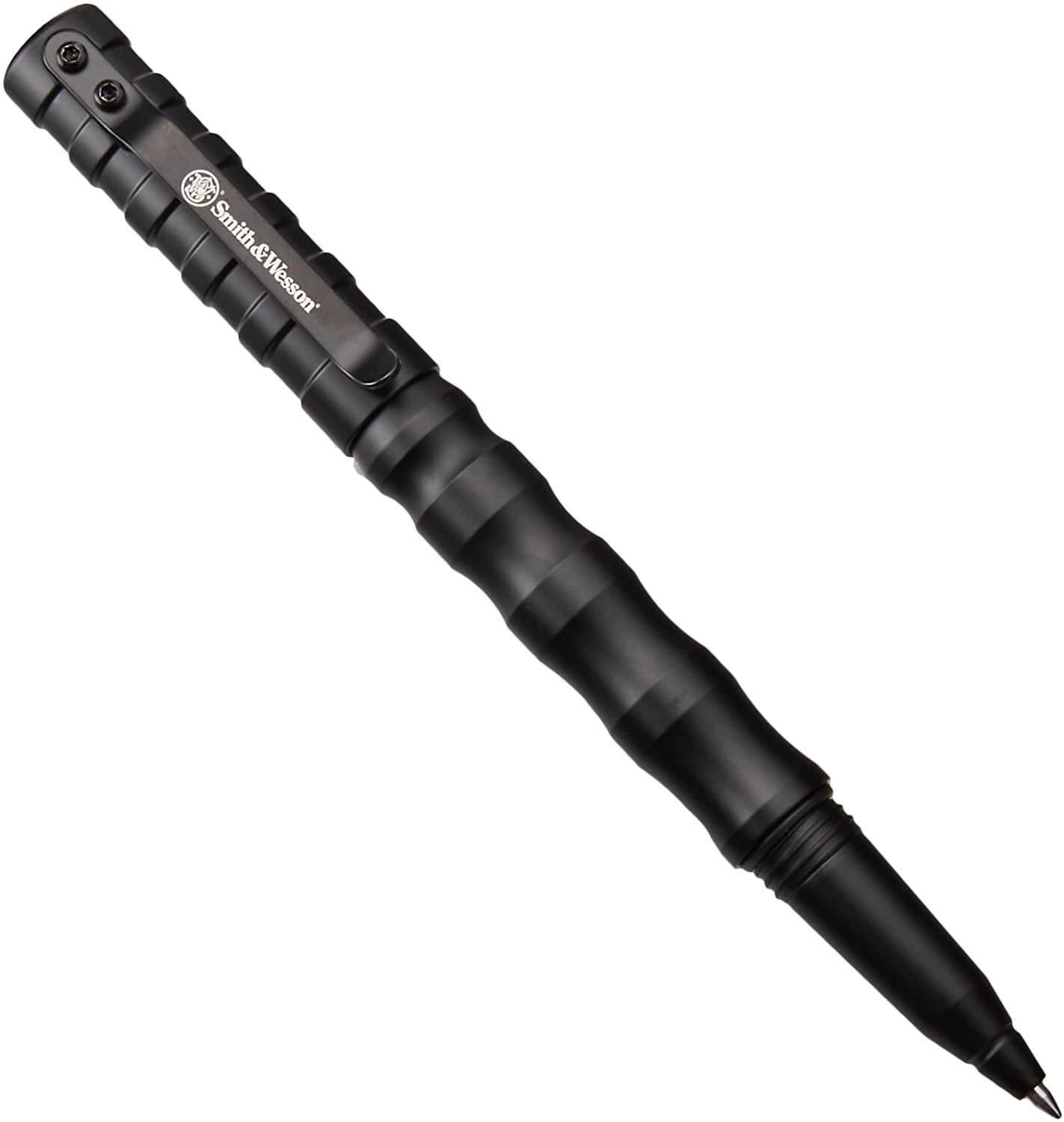
In a world where criminals are often armed with dangerous weapons like guns and knives, an unarmed traveler is at a considerable disadvantage.
If you have nothing to defend yourself with in the event of an assault or a mugging, it will be a lot more difficult for you to defuse the situation and escape unharmed.
But with airport security around the world being the strictest it has ever been, where any item that could potentially be used as a weapon is prohibited inside the cabin of an aircraft, is it even realistically possible to travel with a self-defense weapon anymore?
Well, although it’s now very difficult to get away with packing any kind of weapon in your hand luggage (even nail clippers can be confiscated at airport security), it’s still often possible to travel with knives, firearms, ammunition, taser guns, pepper spray and other dangerous items in your checked luggage - you’ll need to check with the airline before you travel.
In the US, travellers can transport firearms in their checked baggage, provided that they are unloaded and kept inside a locked, hard-sided case. Ammunition can be kept in a secured box or inside the hard-sided case with the firearm. The traveler must also declare the firearms and ammunitions they’re transporting to the clerk at the airline check-in desk.
Be aware however, that even if an airline permits you to travel with weapons in your checked luggage, it may be illegal to be in possession of certain weapons in the country you’re travelling to. You can usually remain on the right side of the law by avoiding guns and only carrying knives with very short blades.
But we wouldn't recommend that you use either guns or knives as a self-weapon for travel. These weapons are too dangerous and could get you into a lot of trouble with the law if you accidentally killed someone while trying to defend yourself.
The self-defense weapon we do recommend for most travellers is the tactical pen, not only because it's harder to kill or maim someone with it, but because it's the one self-defense weapon that you may be able to consistently take on board planes in your carry-on, with a very low chance of it being confiscated by airport security. For diehard carry-on travellers like myself, this is the only option that really works.
Also known as a self-defense pen, a tactical pen can be used to fill out your departure/arrival card like any regular pen, but is also designed to serve as a robust and formidable self-defense weapon, should the need to use it ever arise.
A tactical pen is a type of impact weapon (like a Kubotan) that concentrates the force of your hand strike onto a small point, thereby inflicting greater pain and damage on the attacker.
Tactical pens are typically constructed from heavy-duty steel, titanium or aircraft grade aluminium (used for high-strength applications) to ensure superior strength and durability. This also means they’re a bit heavier than an ordinary pen.
They usually have a hardened tip that can be used to shatter glass windows (handy if you need to escape from a vehicle after an accident) or hurt a bully really badly.
Some tactical pens boast fancy extra features like “DNA catchers” (a sharp-pointed crown at one end of the pen that allows you to take a sample of the attacker's DNA for later identification when you report the incident to the police), LED flashlights and glass breakers, but I think that it’s best to stick with the simpler pens that don't try to do too much. The tactical pens that incorporate a blade are a big no-no if you want to take your tactical pen on a plane.
There are several techniques for using a tactical pen against an attacker in a fight. A commonly used grip is the reverse-grip, where you grip the pen near the base and secure your thumb over the end to prevent the pen from slipping out of your hand upon impact. You can watch this video for a primer on using a tactical pen in self-defense.
Although tactical pens are prohibited by the TSA and certainly could be confiscated (and you could even be fined if the officer is a real asshole), this is the self-defense weapon that’s most likely to bypass airport security screening, as it may be difficult for many officers to distinguish many tactical pens from an ordinary pen.
Many people report having travelled across multiple continents for years with a tactical pen in their hand luggage and never experiencing any problems getting the pen through airport security.
To arouse the least amount of suspicion, you should choose a tactical pen that could easily be mistaken for a regular pen (some tactical pens can look very threatening), and keep it in the company of two or three ordinary pens inside your hand luggage, and choose a tactical pen that doesn’t look too threatening or unusual.
The tactical pen we recommend for most travelers is this one made by firearms manufacturer Smith & Wesson.
It looks less conspicuous than many other tactical pens (if you’re worried about the logos, they can easily be removed with a piece of sandpaper), is just the right weight (1.4 oz) and we really like the grooves in the body, which not only make the pen look stylish, but also improve grip.
The pen is constructed from strong T6061 aircraft aluminium and like virtually all tactical pens, it has a clip that lets you attach it to a breast pocket, belt, trouser pocket or a pen pocket inside your carry-on. To use it as a normal pen, you just have to unscrew the cap at the base to reveal the writing nib underneath.
#49 - Emergency travel first-aid kit
Cuts, nicks, scrapes, bruises, grazes, burns, sprains and other minor injuries are almost inevitable for any traveler that ventures beyond the sanitized environments of airports, high-speed trains, taxi cabs and luxury hotels.
Whether it’s an ankle sprained while trekking in the jungle or a second degree burn on the calf from a hot motorcycle exhaust, it's unlikely that you’ll return from your overseas escapades without a scar or two to testify to your tribulations. If you're particularly unlucky, you might be a victim of something more serious, like a bite from animal (dog, monkey etc.) or a fractured bone.
That’s why it’s always prudent to pack a small first-aid kit – just in case you do get hurt during your trip.
Having a well-stocked first-aid kit (and knowing how to use it) confers a survival advantage, as it enables you to provide or receive immediate assistance in the field in the event of an injury. Time is always of the essence when it comes to addressing injuries.
If the injury is minor, first-aid can prevent the injury from worsening, while in the case of more acute conditions, first-aid can help to ensure the survival of the victim until professional medical assistance arrives.
Even if you just need a band-aid to cover a scrape, you’ll be glad that you have one to hand and don’t have to wait until you can get to a pharmacy.
But the question you’re probably wondering is: how do I assemble a first-aid kit?
Well, the truth is that you don’t actually have to assemble your own first-aid kit these days, since there are many ready-made first-aid kits out there.
If you’re feeling lazy and you’d rather just buy a pre-assembled first-aid kit, the DeftGet portable first aid kit is a great option for travel. It’s a 163-piece kit that comes in a portable (8.2" x 5.1" x 2"), lightweight case. You've got all the first-aid essentials in there and even some extra survival tools like a whistle, flashlight and a Saber Card multitool.
But while ready-made first-aid kits like this are convenient, it may be a bit more expensive to buy one than to assemble your own, and these kits may not be tailored specifically to the types of injuries that you are likely to experience during your trip.
There may be a lot of items in a ready-made first-aid kit that you’d never need, while the kit may lack certain items that you would frequently require.
For that reason, it’s usually preferable to create your own customized, self-assembled first-aid kit that is specially equipped to address the travel injuries that you’re most likely to experience.
A travel first-aid kit shouldn’t be too elaborate, so that it can remain compact and lightweight, yet it ought to contain all of the essentials.
In our experience, such a travel first-aid kit should always include the following items:
4” x 4” gauze sponges– A staple of any first-aid kit, individually wrapped sterile gauze sponges can be applied to a wound to stop bleeding or as an absorbent wound dressing.
Small scissors – Useful for trimming plasters and gauze to size. Just remember to pack your first-aid kit in your checked luggage if you include a scissors, as airport security likes to confiscate them.
Adhesive bandages/plasters – Probably the most commonly used item in any first-aid kit. Band-aids protect cuts, grazes and scrapes from further damage and infection, and promote scar-free healing. You might want to include a variety of sizes and types of bandages to better cover the different possible scenarios; regular bandages, spot bandages, knuckle bandages and butterfly bandages all have their time and place.
Blister plasters – These are useful if your trip involves a lot of walking or trekking. Blister plasters are applied to a developing blister to provide a cushion that reduces pain and friction, thus preventing the blister from getting worse. They also keep out water, dirt and microbes from a blister wound, thereby preventing infection.
Elastic bandage(ACE bandage) – These stretchy bandages are made from a blend of cotton, polyester and non-latex elastic yarns. They’re normally used to wrap a sprained wrist, ankle or knee. They can also be used to secure a splint in the event of a bone fracture. Another important use is for keeping a dressing clean and securing it in place.
Surgical tape – This is used to hold a bandage or dressing in place. It becomes redundant if you’re using self-adhering bandages but is useful for holding a gauze sponge in place.
Antiseptic wipes – These can be used to thoroughly clean a wound of dirt and debris and to ensure it's disinfected before applying a dressing. This reduces the chance of infection while the wound is healing.
Antibiotic ointment – After cleaning a wound (burn, cut, scrape etc.) with antiseptic wipes, it’s a good idea to apply Neosporin or some other antibiotic ointment, before finally applying a dressing to cover it. Remember the three-word motto: clean, treat and cover.
Antihistamine cream – The purpose of an anti-histamine or after-bite ointment is to reduce the itching and inflammation that you would likely experience after getting a sting from a plant, bee, wasp, hornet, ant or other insect.
Analgesic medication – Every first-aid kit should contain some type of pain relief medication. Most contain either Ibuprofen or paracetamol (also known as acetaminophen). Both of these drugs are sold under dozens of different brand names.
Condoms – These are more often included in a survival kit than in a first-aid kit, thanks to their multitude of potential uses, from water carriers to fishing floats. But did you know you can fill them with ice to use as an emergency ice pack to reduce swelling? They can even be stretched over your hand to form a pair of impromptu latex surgical gloves when you don’t want to contaminate a wound.
Anti-diarrhoea medicine – Traveller’s diarrhoea is probably the most common travel ailment, so it’s always a good idea to carry some Loperamide capsules or tablets just in case. The drug loperamide inhibits peristalsis and reduces the symptoms of diarrhoea. You may be more familiar with Imodium, one of the well-known brand names the drug is sold under.
Tweezers – Always useful for removing ticks, splinters, thorns and stingers.
Safety pins – These can be used to remove deeply embedded splinters and also to secure elastic bandages that don’t have their own fastener.
Small thermometer – Useful to check if you’re really developing a fever or if it’s just your imagination.
You might also like to include any regular prescribed medications inside your first aid kit, as well as any antimalarial prophylactics that you might have been prescribed by your physician. This general first-aid kit item list can obviously be amended as needed, depending on the exact nature of your trip.
It’s also a good idea to download a first-aid guidebook like the DK First Aid Manual, so that you know when and how to use all these first-aid materials. There are also plenty of instructional videos on YouTube that you can learn a lot from, but make sure that you start learning about first aid well in advance of the time you might need to use it.
#50 - Money clip
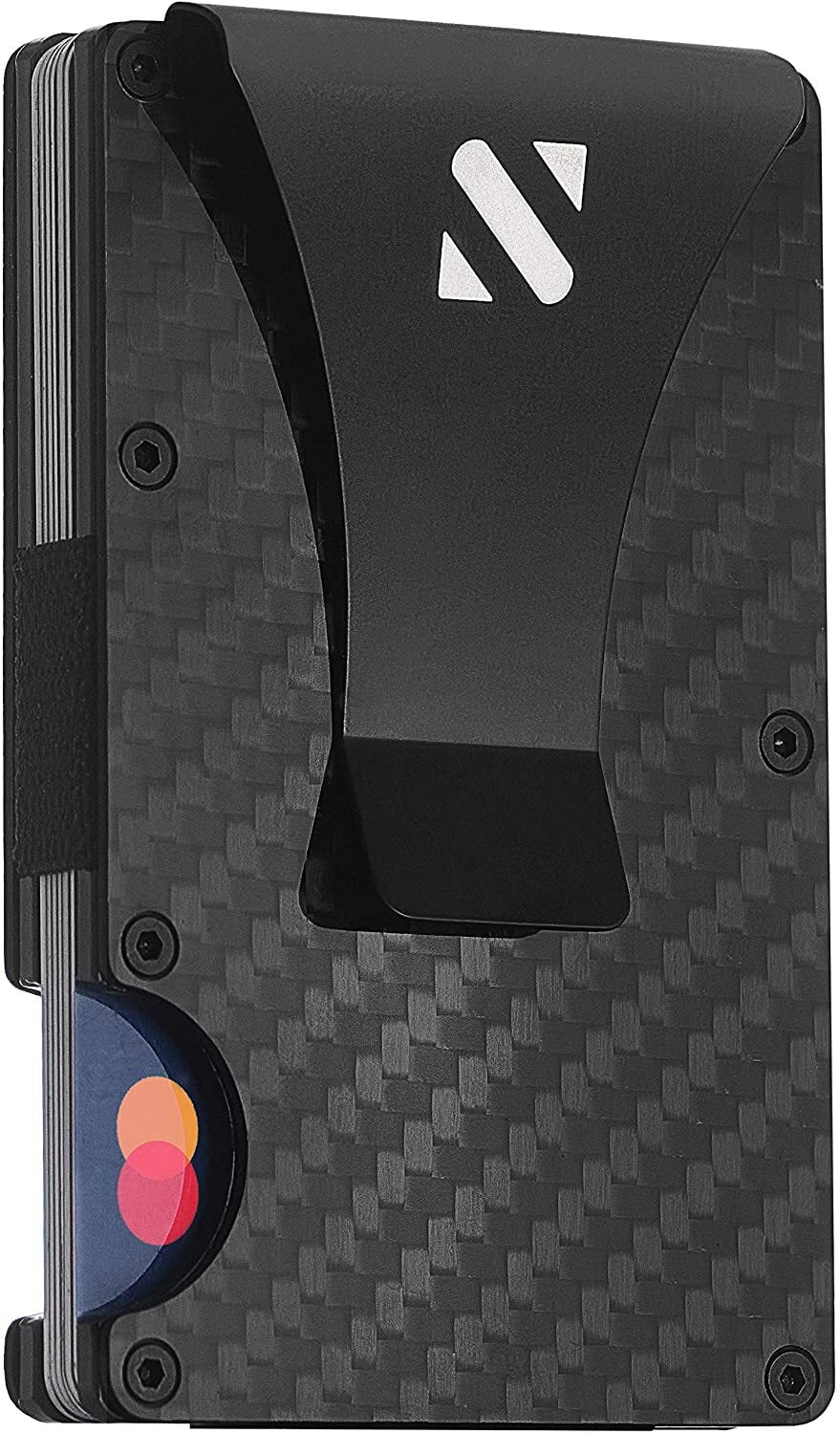
Do you normally travel with your wallet in your front (or other) pocket? That might not be the best idea if you’re concerned about deterring pickpockets and other thieves.
The problem with a wallet is that it creates a conspicuous bulge in your pants that signals to any thief that you’re probably a lucrative target. Even if you rarely keep any cash in your wallet, you probably keep some plastic.
This bulge often becomes even more prominent when you’re visiting a developing country, where cashless payment methods are less common and you have to withdraw a thick stack of foreign currency bills from an ATM just to have the equivalent of $200 in cash. Your wallet then swells to the point where it looks like it might explode at any minute.
You can of course buy ultra-slim wallets that help to reduce your wallet’s footprint, but again, once you start filling them with low-value foreign bills, they can’t help but fatten up.
A better solution that I’ve found for reducing this undesirable bulge in my pants is a money clip. This is the ultimate wallet replacement solution for minimalists and for those that don’t want to be transmitting any signals to strangers that they might be wielding bank cards or cash.
Not only are money clips lighter, smaller and thinner than wallets, they also allow you to access your cash and cards much more quickly and easily.
The most basic type of money clip is a thin metal or carbon-fibre clip that holds your bills securely in place. If you only have one or two bills, you might need to fold them once or twice so that the clip holds them more tightly. My own money clip can hold a small stack of bills; enough to last me a week or two when travelling in a developing country.
If you withdraw a really big stack of bills from an ATM, you probably won’t be able to fit them all in a money clip, but that’s okay, because the idea with a money clip is to just carry a small amount of cash on your person when you’re out and about. You should keep the majority of your cash supply somewhere safe, like in a portable safe at your hotel or inside your anti-theft backpack.
With the growing acceptance of cashless payment methods in today’s world, we recommend this tough and durable, carbon fiber money clip from Shevrov SV, since it not only has a clip for holding bills, but can also hold up to 12 bank cards (each can be slid out with ease thanks to the intuitive design).
This money clip also incorporates RFID-blocking technology, so data thieves in possession of an RFID-reader won’t be able to steal your credit card details.
Section 4: Room safety tips
It’s easy to forget that much of our time is spent inside the four walls of a room when we’re travelling.
Unless you’re staying out in the boondocks (in which case you're probably camping or trekking) or travelling in a van, you’re probably retiring to a private room or a hostel dormitory at the end of each day of activity.
Obviously, the purpose of a room is to provide a secure and comfortable place to rest your head at night and to keep your luggage safe while you’re out exploring during the day.
But can a room fail to serve its intended purpose if you’re not taking the right precautions? Yes, it absolutely can. Many travellers have returned to their rooms after an outing, only to find that their valuables, cash or other personal belongings have gone missing.
Complaining to the staff or manager typically proves to be an exercise in futility, as they usually don’t care or will flatly deny what has happened, gaslighting the guest by claiming that it is impossible for someone to have gained access to the room, that there must have been some sort of a misunderstanding.
Intruders have forcibly entered private hotel rooms in the dead of night too, while the occupant( s) were fast asleep in bed.
When a break-in happens, the intruder’s most likely intention is to steal something, but if the room occupant is woken up by the commotion there is always the possibility that the intruder will become physically violent in an attempt to escape or subdue the victim.
Well, we already covered this topic in detail in another article, so rather than repeating everything again here, we’d highly recommend that you go and check that out for a full discussion on how to stay safe at your accommodation.
In this article, we’ll just briefly cover five portable gadgets and accessories that you can pack in your luggage and employ at your hotel to make it more difficult for anyone to gain unauthorized access to your private space, as well as making it harder for them to steal anything if they do manage to break in.
#51 - Travel padlock
Not to be confused with the luggage lock described above, a travel padlock is somewhat larger and more robust, and is mainly used to secure your valuables inside rooms, cupboards, presses, drawers and lockers, once you’ve found a place to stay for a few nights.
A travel padlock can prove to be indispensable in numerous travel situations, including the following:
- When your room door can only be secured with a padlock (very common in some countries) and you know you can’t trust the padlock provided for free by the staff, since they probably have a spare key and it’s probably a cheap padlock that a determined thief could easily pick or force open.
When the lockers at your hostel require a padlock, but the hostel doesn’t provide one or you simply don’t trust the padlocks they provide.
When you want to use the lockers at a gym or swimming pool during your trip and your own padlock is required.
When you want to lock valuables away inside a drawer, cabinet, cupboard or wardrobe or other piece of furniture in your room for an additional layer of security. A small length of chain may be required in conjunction with the padlock for securing the double doors of some cupboards via the door handles.
There are several factors to consider when buying a travel padlock, like the design, size, weight, body material, shackle material and thickness, locking mechanism, key profile, keying type, pin material, security features, security rating, weather resistance and more.
We wrote an in-depth guide to choosing a travel padlock if you’re interested in learning more about these topics.
The upshot is that we recommend the Abus 75/50 padlock for most travellers. Abus is a German brand that has a solid reputation for manufacturing high-quality preventative security technology.
The Abus 75/50 padlock has a chrome-plated solid brass body with a hardened stainless steel shackle. The shackle diameter is 5/16” (just under 8 mm), which will fit most lockers in pools, gyms and hostels, and will fit pretty much all hasp and staple fixings on doors.
Weighing in at 290 g (0.65 lbs) and measuring about 7.7 cm x 5.0 cm, it’s just the right size for travel; not so small that it's flimsy, not too big and heavy.
The lock uses a dimple pin-tumbler mechanism, which is less common than the standard pin-tumbler mechanism, so most amateur lock pickers will be thwarted by it.
The lock also has a paracentric keyway, which makes it very tricky to manipulate the pins inside the barrel without possessing very specialized tools. It also employs passive security pins, which serve to further frustrated lock pickers.
The padlock is also highly corrosion resistant, being designed for securing vehicles and boats in outdoor use. You won’t have to worry about it rusting inside a damp backpack or when you’re lodging in a cabin, hut or other type of accommodation where the front side of the door is exposed to the elements.
There are, of course, more heavy-duty and high-security padlocks out there than this one, but most are too heavy, too expensive or are just overkill for travel, often being much more stronger than the actual fixing they’re going to be attached to.
#52 - Doorknob lock-out device
This often comes in handy because many hotels, guesthouses, lodges and homestays around the world use a two-piece doorknob locking mechanism to secure their rooms.
If you’re not familiar with this type of door locking system it works like this:
The door is fitted with two doorknobs, one on the inner side and one on the outer side. The knob on the inner side has a small round button that you push in with your thumb before exiting the room. You then simply pull the door shut behind you when leaving to automatically lock it.
The doorknob on the outer side of the door has a keyhole instead of a button, into which you insert a key and turn it to unlock the door when you want to enter the room.
But this unprotected keyhole poses a security problem, since a staff member with a spare key could easily enter your room. A thief off the street or a fellow guest with basic lock-picking skills could also exploit this vulnerability to gain entry. Most doorknob locks can be easily picked with simple tools like bobby pins and paperclips.
This is the problem that the doorknob lock-out device addresses. The device completely encapsulates any round door knob (up to 2.875 inches in diameter) and locks in place with a key, making it impossible for a staff member with a spare key to access the keyhole.
Anyone who wants to break into your room now has to be able to pick or forcibly open at least one lock to gain entry to the room. An outsider without a spare key has to crack two locks. This device therefore acts as a strong deterrent and greatly reduces the odds of a break-in while you're absent from your room.
#53 - Rubber door wedge
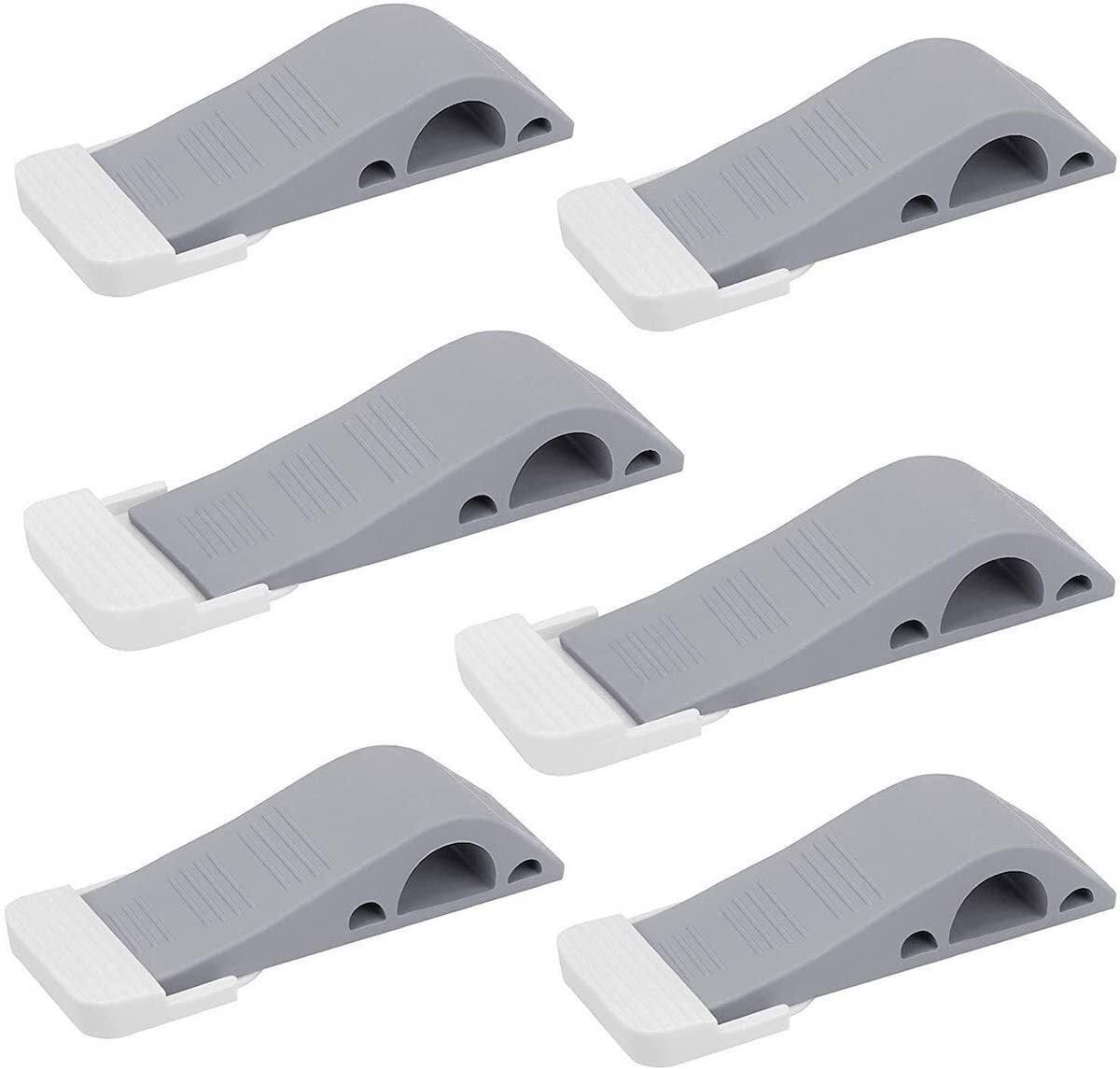
While the two solutions above are intended to prevent a break-in during your absence, there are a number of other useful gadgets that are designed to keep out trespassers that try to forcibly intrude while you’re present inside the room.
One of these is the humble rubber door stopper, which is a popular carry among many female solo travellers. One of these takes up very little space in your luggage and weighs almost nothing, but could give you extra peace of mind when sleeping at night.
We recommend the Wundermax Door Stopper, which is a highly portable (4.8” x 1.6” x 1”) wedge made from a durable, high-quality, flexible rubber. With its non-skid bottom, it holds even heavyweight doors on all floor surfaces (wood, carpet, stone, cement, linoleum, tiles etc.).
What’s really neat about this door stopper though is that if the gap under the door is bigger than usual, you can slide a second wedge in underneath the first one and join the two together using the complementary clip, thereby creating a double door stopper that’s 2 inches high.
While the two solutions above are intended to prevent a break-in during your absence, , there are a number of other useful gadgets that are designed to keep out trespassers that try to forcibly intrude while you’re present inside the room.
One of these is the humble rubber door stopper, which is a popular carry among many female solo travelers. One of these takes up very little space in your luggage and weighs almost nothing, but could give you extra peace of mind when sleeping at night.
We recommend the Wundermax Door Stopper, which is a highly portable (4.8” x 1.6” x 1”) wedge made from a durable, high-quality, flexible rubber. With its non-skid bottom, it holds even heavyweight doors on all floor surfaces (wood, carpet, stone, cement, linoleum, tiles etc.).
What’s really neat about this door stopper though is that if the gap under the door is bigger than usual, you can slide a second wedge in underneath the first one and join the two together using the complementary clip, thereby creating a double door stopper that’s 2 inches high.
#54 - Other door-jamming devices
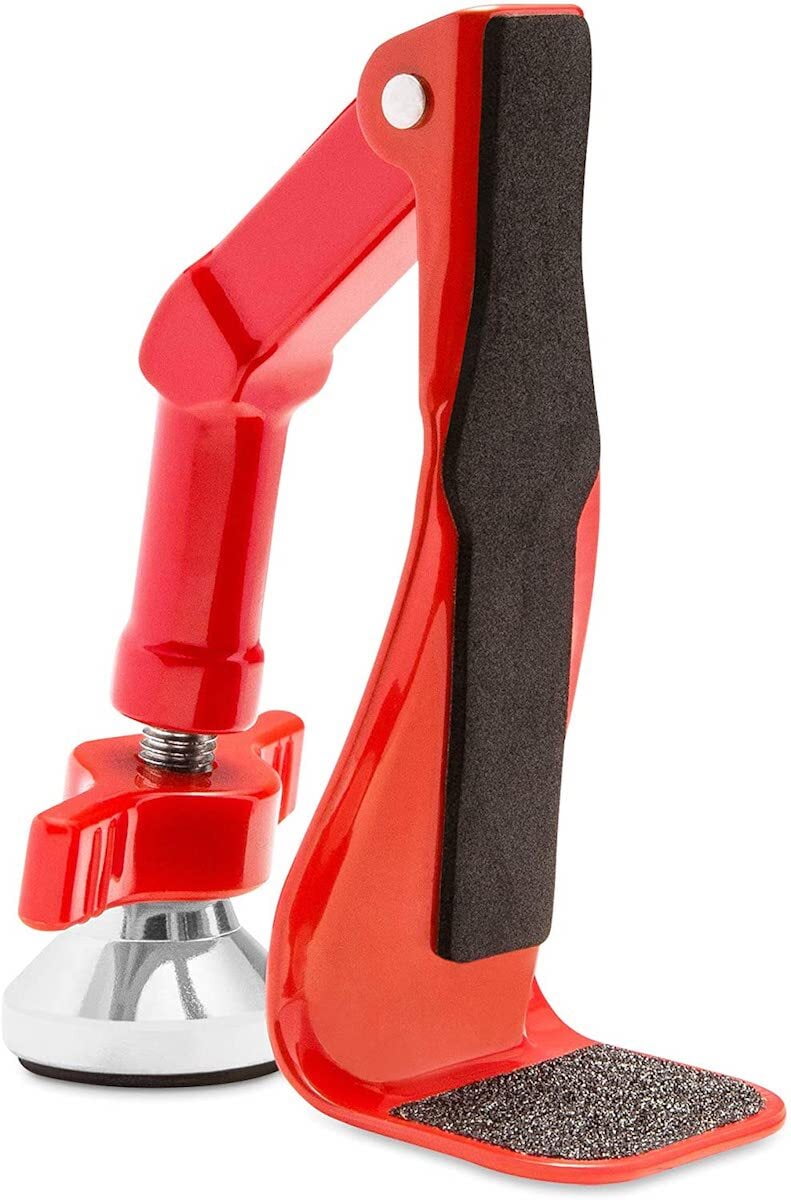
A portable door lock like this one from Calslock also achieves the same purpose, takes up less space than two pens and even works on doors that don’t have a lock.
Another device, which uses a very different mechanism to prevent a door from opening inwards, is the Door Jammer.
Make sure you get the travel-size version, which is portable (4.75" x 2.75" and only weighs 8 ounces.
It comes with a drawstring pouch, a neoprene extension foot (used for doors that have greater ground clearance) and doorframe spacers for added security.
Bear in mind that all of these devices are only meant to hold a door that opens inwards into the room; they won’t be of any use if the door of your room opens outwards into the corridor.
#55 - Portable safe
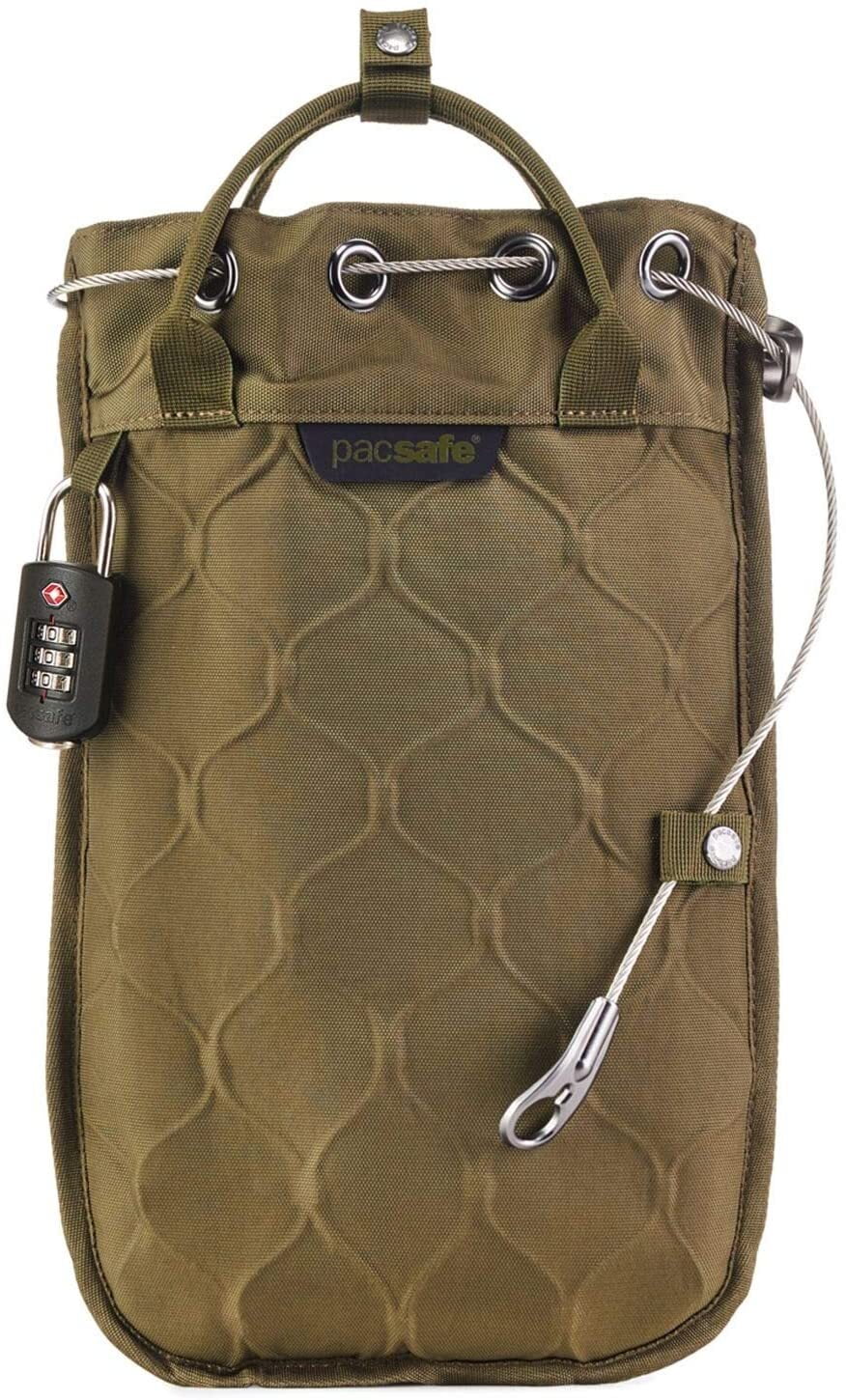
A portable safe is another recommended product in the quest for greater room security, as only a small fraction of properties around the world are equipped with in-room hotel safes, and they can’t be relied on in any case, since the hotel management will always know an override code (often it will be “000000”) to unlock the safe in an emergency.
Also, in-room hotel safes often have a mechanical override lock that can be easily opened by anyone with the right tools and some common hotel safes can be easily cracked by slightly lifting up the front end of the safe and then letting it drop, immediately turning the dial when it makes impact with the surface its resting on.
But what about those safety deposit boxes behind the front desk? Aren't they safe to use? Well, these are usually a safer bet than an in-room safe, but I’ve often seen front desks left unmanned and again, not every property will have one of these.
The idea with a portable safe is that you keep your valuables (cash, wallet, passport, tablet etc.) inside the portable safe whenever you’re out of the room, so that if a cleaner, guest or other individual was to enter the room during your absence, they’d have a hard time taking anything of value out of the room.
Portable safes can be used to prevent theft in other common travel situations too; when you’re at the beach or swimming in the pool you might want to keep your phone and wallet locked away inside the safe, which could be tethered to a tree or any other reliable fixture.
The Pacsafe Travelsafe 3L GII is one of the few portable safes that will pack down flat, which is where many competing products fall short.
The safe also comes in larger 5L and 13L sizes but we think the 3L mini-safe option (13.39" x 8.86") is best for travel, and it's still big enough to fit a 10-inch tablet along with many other valuables like a small camera, passport, wallet, smartphone, keys, cash and so on.
The pouch is fully lockable (a TSA-compliant 3-dial combination lock is included) and is made from a highly durable polyester canvas fabric, which is embedded with a 360° wire mesh called eXomesh to make it slash-resistant. The carry handles at the top of the safe are also slash-resistant.
The safe uses a drawstring closure mechanism but with a heavy-duty steel cable replacing the usual string. Using this steel cable and the combination lock, the safe can be sealed and tethered to any solid fixture in your hotel room (i.e. a piece of furniture, a water pipe, a radiator, etc.) or outside (a pole, tree, railing etc.).
Section 5: Internet and data safety tips
In today’s digital world, most travelers spend a considerable amount of time online during their trips, whether for entertainment, to plan out the next move, to book flights, hotels and train tickets, or just to stay in touch with friends and family back home.
But the online world is fraught with many dangers, like hackers and data thieves who are only too eager to get their hands on your private and sensitive information. Following the tips in this section will greatly reduce the risk that your personal information will inadvertently fall into the wrong hands.
#56 - Avoid using internet cafés
Not so long ago, prior to the advent of ultraportable personal laptop computers and smartphones, travellers who needed to get online would normally head to an Internet café.
Often, they would need to access a computer to book a plane ticket or to send out a few emails updating friends and family back home on the progress of their trip.
Even in today's world, cybercafés still prove useful when you need to print out documents, like the paperwork you need for an embassy visa application or a confirmed exit ticket to show to the clerk at the airline check-in counter or the immigration officer on arrival.
But these days, travellers are rarely forced to use a public computer to access the Internet during their trips. Even if you’d rather travel without a laptop, a fully functional smartphone with full Internet access can be picked up these days for less than $100.
And it's just as well that Internet cafés are no longer essential for getting online, because public computers have always posed a tremendous threat to travellers’ privacy and data security.
Anyone can tamper with these public computers and install all kinds of nasty things on them, which is why they're frequently found to be infected with viruses, malware, spyware, ransomware and keylogger software.
Keylogger software can record your every keystroke and can therefore capture your passwords, credit card numbers, private messages and anything else you type on the keyboard during your internet session.
Some types of surveillance software can also stealthily record your screen or capture screenshots at regular intervals without your knowledge.
Depending on where you’re sitting in an Internet café, you might also have to worry about other users or even the administrator looking over your shoulder, since these establishments usually have computers arranged in parallel rows.
Thus, Internet cafés are best avoided whenever possible nowadays, but if you are ever forced to use one to get online, here are some tips that will help to keep to protect your personal information:
Use the computer’s web browser in private browsing or incognito mode
When you open a new window in private browsing mode, the web browser won’t log the usual information it stores while you’re browsing the web, like passwords, cookies, history and so on.
This means that if you forget to manually delete all this logged information at the end of your Internet session, the next user to come along and use the same computer won’t find any trace of your activity stored in the web browser.
On most browsers, holding Control + Shift + N (windows) or Command + Shift + N (Mac) will open up a new window in private browsing mode.
Don’t submit any sensitive information to websites
If you can at all help it, don’t log into your online banking or submit your card details to an online merchant when you’re using a public computer.
Even if you obliterate all traces of your activity from the web browser and even if your connections are encrypted, there could still be software secretly installed on the computer that’s collecting the sensitive information that you’re sending.
Sit in the back row of computers, if possible
Sitting in the back row of computers in the Internet café will ensure that nobody can surreptitiously peek over your shoulder while you’re going about your business.
It will also hopefully put your screen activity out of view of any CCTV cameras in the room, which might be monitoring some of the computer screens.
Try to sit next to vacant seats as well, if you can. The corner seat is generally the safest, since you only have to worry about privacy threats from either the left or right rather than from both sides.
Don’t copy any data to the computer
If you’re plugging a USB flash drive or other storage device into a public computer, make sure you don’t copy over any of your personal data stored on the drive onto the computer.
#57 - Use a VPN when using public Wi-Fi
Free public Wi-Fi seems to be available almost everywhere nowadays; at train stations, bus stations, bus stops, airports, hotels, malls, libraries, restaurants, coffee shops and even in outdoor public spaces and on the streets.
Those among us with a healthy degree of skepticism might wonder why the providers are being so generous by setting up all of these free Wi-Fi hotspots, and might ask whether we are in fact paying for the service by surrendering our personal information.
Unlike a private wireless network where access is restricted, a public wireless network is defined as one that anybody can connect to.
The main problem with public wireless networks is that many of them are not encrypted at all or are only encrypted with WEP (Wired Equivalent Privacy), which provides a lower level of security compared to WPA (Wi-Fi Protected Access) or WPA 2, which provide better encryption but are still problematic.
The unsecured nature of public Wi-Fi networks makes them very attractive to cybercriminals, drawing them in like moths to a flame. When you’re using an unencrypted wireless network, you become much more vulnerable to what are known as man-in-the-middle attacks (MITM) from these hackers.
Any sensitive information that you transmit over an unencrypted connection, like credit card numbers, login details, passwords and private messages, could be read in plain text by an eavesdropper with the ability to “sniff” and capture the data packets you’re sending.
Now it is true that most connections that involve the transmission of sensitive information are now encrypted by default with cryptographic protocols like SSL (secure sockets layer) and TLS (transport layer security), but even these can be broken by advanced hackers.
Also, there are still many unsecured websites out there and it’s not just the highly sensitive information that you want to protect from snoopers – it’s all of it.
When connecting to a public Wi-Fi network there’s also the risk that a hacker will have set up a rogue hotspot, also known as an “evil twin” hotspot.
A rogue hotspot impersonates a legitimate wireless network and if you unwittingly connect to one, the hacker will be able to harvest your personal information without your knowledge.
Imagine you’re trying to connect to the free Wi-Fi at Mc Donald’s and you see two similar looking wireless networks, WiFi@McD and WiFi@McDonalds.
One is the legitimate network and the other is the evil twin. If you didn’t know about the phenomenon of rogue hotspots, you could mistakenly think that both hotspots are legitimate and you could easily end up connecting to the malicious one.
Shared Wi-Fi networks in smaller establishments like guesthouses and local restaurants are more likely to be encrypted with WPA or WPA2, but they are still not safe to use.
You have to remember that whenever you are using somebody else’s wireless network, the power is in their hands and they can monitor your traffic if they choose to. Do you trust a stranger to not abuse that power?
But free Wi-Fi is just so damn convenient and well, free. Might there be a way you can take advantage of it without risking your personal information falling into the wrong hands?
Luckily, there is a way.
If you download a software program called a VPN (virtual private network) to your phone, tablet or laptop, you can enjoy secure browsing even on unsecured public Wi-Fi networks.
What a VPN does is it encrypts all your traffic and channels it through a “tunnel” to a VPN server that is owned or rented by the VPN service provider. Once it reaches the server the traffic is unencrypted and is sent on to its final destination.
The key here is that the traffic is encrypted as soon as it leaves your device, which means that anybody in the airport or coffee shop who tries to intercept your traffic will only be able to see gibberish.
There are a lot of great VPN services out there. Generally, you pay a small recurring monthly or a one-time annual fee to get full access to all features, but some providers also offer a more limited free plan for light Internet users who don’t mind the restrictions on bandwidth, data usage and server access.
Our recommended VPN for most travellers is Express VPN. It works with all popular devices and operating systems and currently offers 160 server locations in 94 countries.
You also get 24/7 live chat support, unlimited bandwidth, AES-256 encryption and can connect up to 5 devices to the VPN simultaneously. Express VPN also comes with lots of advanced features like a Network Lock kill switch and split tunnelling, and records no activity or connection logs.
For more information on VPNs and more great VPNs for travel, you might also like to read our article on the best travel VPNs.
#58 - Use the HTTPS Everywhere extension
Since the biggest threat to your online security is sending unencrypted personal information, you should also install the HTTPS Everywhere browser add-on, which is available for most major browsers, including Firefox, Chrome, Opera and Vivaldi. It is automatically included in Brave and Tor browsers.
The HTTPS Everywhere extension will try to force an encrypted connection with any website that supports it but does not enable it by default.
Of course, the extension won’t make a difference if the website you're visiting doesn’t have SSL or TLS installed, but for websites that support both http and https versions, the HTTPS Everywhere extension will ensure that the more secure https version is the one that you get connected to.
Although this extension might seem to be becoming less necessary than it was a few years ago, since more and more websites are automatically forwarding visitors to the more secure https version, that small window of time when the connection is automatically upgraded from http to https can be exploited by a type of attack that removes the secure connection.
It is this vulnerability that the HTTPS Everywhere extension guards against, thanks to a feature called “block all encrypted requests”, which ensures that your browser only attempts to connect to the https version of all websites by default. If a website doesn’t support https, then you will still be able to visit it by disabling the extension for that specific site.
In a nutshell, the HTTPS Everywhere extension ensures that you can only ever be connected to the unsecured http versions of websites when you explicitly opt into doing so.
#59 - Use an LTE connection instead of dodgy Wi-Fi networks
Don’t want to bother with using a VPN?
In that case, one thing you can do to boost your online security is to connect to the Internet via a 3G/4G data connection instead of using open Wi-Fi networks.
Data sent over 3G and 4G cellular networks is normally encrypted between your device and the base station, though once it reaches the wired network it loses its encryption. While a 3G/4G connection could be made more secure by using a VPN, it’s at least better than a totally unencrypted public Wi-Fi connection.
So, what is the best way to get a 3G or 4G data connection when you’re travelling abroad?
In most cases, the best way is to buy a local SIM card with a data plan. Local SIMs are often available for purchase in airport arrival areas and typically come pre-loaded with various data plans.
Whenever I land in a new country or one that I haven’t visited in a while, I virtually always buy a local SIM card from a kiosk before exiting the airport. If I can’t get one at the airport, I’ll try to buy one from an official company store or from a third-party seller on the street as soon as I get to the nearest town or city.
Another advantage of getting a local SIM is that you can still access the Internet at times when Wi-Fi is unavailable. And data is incredibly cheap in some countries. In India, for example, where the market is highly competitive, some carriers let you consume up to 4 GB per day for a period of 28 days, for less than $5.
But maybe you’d prefer to avoid the hassle of buying a local SIM card after arriving in a foreign country and would rather just focus on enjoying your trip?
In that case, you can still get a secure and reliable Internet connection abroad with an international SIM card, which can be purchased online and delivered to your home ahead of time.
International SIM cards will work in over 150 countries worldwide, so if you’re travelling at a fast pace, you don’t have to worry about constantly changing SIMs every time you enter a new country. The only downside is that international SIMs are normally a lot more expensive than local SIMs when you compare the rates for data, calls and texts.
Still, they’re almost always cheaper than roaming and are a better alternative if you want convenience. For more information on this topic, read our guide to the best international SIM cards for travel.
But what if you’re more of a laptop person and you don’t like surfing the web on your phone? No problem; once you’ve popped a local SIM into your phone and bought a data plan, you can turn the phone into a Wi-Fi hotspot and connect to it with your laptop.
Or if you’d rather not bring a phone at all, you can get a laptop with a SIM card slot that can connect to the Internet via 4G LTE. In our guide to the best travel laptops, we review a couple of laptops that support this feature.
#60 - Encrypt your email
One of the problems with using Gmail is that it only encrypts your emails if the recipient is using a mail service that also supports TLS (transport layer security). If it doesn’t support TLS, then your emails will go out unencrypted.
Another problem is that once your emails reach their destination, they do not remain private and can be read by Google and other email providers.
A much more secure and private email option is ProtonMail, which has both a web interface and apps for Android and iOS. You’ll get an email address like abc@protonmail.com. if you choose the free plan.
ProtonMail uses an open source form of end-to-end encryption, which means that your messages are stored on ProtonMail servers (which are said to be located in a bunker in the Swiss Alps) in an encrypted format.
Even the developers of the service couldn’t read your emails if they wanted to. Only the recipient of your emails can read them, as should be the case. It's also worth mentioning that you can sign up for an email account without surrendering any of your personal information.
The company offers a basic free account which lets you send up to 150 messages a day and gives you 500 MB of storage, but you can also upgrade to one of three paid plans (plus, professional and visionary), which come with higher email sending limits, increased storage and other extra features like email aliases, custom domains priority customer support, catch-all email, autoresponder and multi-user support.
#61 - Start using a password manager
Do you still write all of your passwords down on a piece of paper or store them in a Word document or notes app on your computer? If so, it’s time to upgrade to a password manager.
The whole point of a password is that it’s a secret piece of information that only you have access to. But the problem nowadays is that people have so many usernames and passwords for so many different websites and apps that they couldn’t possibly remember them all.
So, they record their passwords somewhere and try to keep that piece of paper or digital file from falling into the wrong hands.
Or they use the same easy-to-remember password for every single one of their online accounts, a setup that could lead to an unmitigated disaster if that one password was ever discovered.
Luckily, there’s a much better and safer way to manage and secure all your passwords – a dedicated third- party password manager.
These are much better than your browser’s built-in password manager, as they work on multiple devices and across multiple browsers and have much more features than a browser password manager.
A dedicated password manager is an application that securely stores and organizes all of your online account details like the website URLs and their associated usernames and passwords.
All of your login credentials are stored inside a secure password vault, and are only accessible by entering the master password that unlocks the vault. This means that you can store hundreds or even thousands of usernames and passwords inside the vault, yet all you have to remember to access them is your one master password.
But the usefulness of password managers doesn’t stop there.
You can also store sensitive personal info, secure notes, receipts, bank account details, virtual copies of your bank cards, IDs like passports, driving licenses, social security cards and other sensitive information inside the password vault.
Password managers also save you time when logging into your online accounts, as they can automatically fill in your username and password and log you in to a website the instant you land on the home page.
They can also autofill form fields on websites with your personal information, saving you the time and effort it takes to manually type out your name, phone number, email address, home address, credit card number, expiry date and so on.
Password managers will also point out problems with your passwords, like if you’re reusing passwords or if your passwords are weak or have been compromised by security breaches. They can even automatically update bad passwords for some compatible websites without you having to do anything.
Password managers also have a password generator, which you can use to automatically generate unique, strong passwords whenever you create a new online account.
And every time you create a new account, your password manager will offer to save your new login credentials to its database so that you don’t have to create the new entry manually.
A good password manager will also allow you to securely share your passwords with others and to give friends and family access to your passwords and secure notes in an emergency.
The password manager that we currently use and recommend for most travellers is Dashlane, which is compatible with all major browsers and operating systems. All of the features that we mentioned above come with the free version, which allows you to use Dashlane on one device.
If you want to use Dashlane across unlimited devices and have your passwords automatically sync between them all, you have to upgrade to the premium version, which only costs $39.99 a year for an individual or $59.99 annually for a family.
The premium version of Dashlane also unlocks a number of additional features, like the use of the inbuilt VPN, dark web monitoring (constantly scans the “dark web” to see if your information has been compromised), secure file storage, priority customer support and the ability to share passwords with unlimited people.
#62 - Set up two-factor authentication for your online accounts
If you’re a regular Internet user, you probably already know about two-factor authentication (2FA) and you might be using it for a few of your accounts.
For those of you that aren’t already using it, two-factor authentication is a way of ramping up the security of your online accounts to make them more difficult for cybercriminals to break into them. 2FA adds an extra layer of security on top of the usual username and password combination that you use to log in.
After you’ve submitted your username and password to the website, you’ll then have to successfully complete the second authentication step in order to be logged into your account.
This second layer or authentication factor is normally in the form of a randomly generated one-time passcode (OTP) that’s sent to your phone via SMS or through a special authenticator app. The codes that are sent by SMS normally expire after a few hours, while the ones in authenticator apps change every 30 seconds or so.
If possible, we recommend always choosing to have the codes delivered to an authenticator app like Google Authenticator or if you’re not a Google fan, andOTP works great too. This is a more secure option than having verification codes delivered via SMS.
Setting up 2FA for one of your online accounts is usually a simple matter of scanning a QR code using the Authenticator app of your choosing. Once the QR code is scanned, you should receive the verification codes to the app every time you log in from that point onwards.
If you want to get even fancier and you’ve got some cash to spare, instead of receiving a code in an authenticator app on your smartphone, you can authenticate with a physical security key that uses the U2F (universal 2nd factor) standard, like the YubiKey 5 NFC made by Yubico.
The YubiKey 5 NFC physical security key looks a little bit like a USB flash drive and has a physical chip on it that you insert into your laptop’s USB port and then press a flashing button on the key with your finger to authenticate.
The key is compatible with many websites and apps like Gmail, Facebook, Instagram, Dropbox and others. It can also be used to log in to your computer and to enter your master password with some password managers, including Dashlane, LastPass and 1Password.
Because the device is NFC-enabled, it'll also work with your NFC-enabled Android smartphone or with iPhone 7 or later running on iOS 13.
There's also the YubiKey 5 Nano, which won't stick out of your USB port and is designed to stay in your computer fairly permanently, although it's not NFC-enabled, so it won't work with your mobile devices.
If your laptop has USB-C ports instead of USB-A, then you can use the YubiKey 5Ci. It has a USB-C connector at one end and a lightning connector at the other so you can also use it to secure all of your compatible Android and iOS apps.
What you’ll find in reality is that all of your online accounts won’t support 2FA. But most of your social media accounts, online banking accounts, email accounts, online shopping accounts and other important accounts should give you the option to enable it.
You should enable 2FA wherever possible or at least for any account that would expose sensitive information about you if it were to be hacked.
Just don’t forget to save the backup codes to a secure place (I save them to a secure note in my password manager) whenever you setup 2FA for any of your online accounts. These codes will allow you to regain access to your account should you lose access to your phone.
The only downside with two-factor authentication is that it does slow down the login process a bit, since there’s a second authentication step involved. But the physical security key option (YubiKey) that we discussed above greatly speeds things up compared to receiving codes to your phone.
#63 - Install tracking software on your devices
Losing a mobile device or laptop or worse, being robbed of one, can be a catastrophic misfortune for any individual travelling abroad.
Not only is there the expense you could potentially incur in order to replace the device, but you could also be facing the loss of a large amount of precious data, like photos, video clips, documents, e-books and so on.
But all is not necessarily lost as long as you’ve had the foresight to install third-party tracking apps or turn on native tracking apps on your devices ahead of time.
Travellers have successfully recovered devices that went missing or got stolen during a trip using software programs like Google’s Find My Device, Apple’s Find My) and certain third-party mobile and computer applications.
Find My Device (Google)
Google’s Find My Device is built into Android phones and allows you to locate your phone. You can enable it in your phone settings under Location & Security -> Security Status, if it’s not already turned on.
If you lose your Android phone, you can log into your Google account on another device at google.com/android/find.
Here you’ll be able to view the device’s approximate location on Google Maps (provided it’s powered on, has location services turned on and is connected to Wi-Fi or mobile data), lock the device with your PIN, pattern or password, wipe it clean (erase all the data ) or play a ringtone on it at full volume for 5 minutes to help you locate it.
Bear in mind that erasing the data should only be done as a last resort, as once you do it, you won’t be able to track the device any longer.
Find My Mobile (Samsung)
Samsung users can also use Google’s Find My Device but they can additionally avail of Samsung’s Find My Mobile service, which has more capabilities than Find My Device.
Once you visit findmymobile.samsung.com you can lock the phone (also prevents the phone from being powered off) back up the device, track its location every 15 minutes (if it’s moving) and extend the battery life (disables almost everything on the phone except location tracking).
Find My (Apple)
Find My is built into iPhones, iPads, iPod Touch and other apple devices. For full instructions on setting it up on your iOS device, see this support page. When your device goes missing or gets stolen, you can go to icloud.com or use the Find My app in order to pinpoint the device on a map.
You can then mark the device as lost, which locks it, disables Apple Pay and lets you display a custom message on the screen with your phone number.
You can also play a sound on the device and choose to be notified when it comes online if it’s currently offline. As a last resort, you also have the option to erase all the data on the device.
The latest iOS 13 devices can even be located without a Wi-Fi or LTE connection, by sending Bluetooth signals to other nearby Apple devices, which in turn transmit your device’s location to Apple’s servers.
Third-party solutions
While these inbuilt solutions offered by Google, Apple and Samsung are useful (especially for missing devices) and should be taken advantage of, for a stolen device they might not always be robust enough.
For a better chance of recovering a stolen device, you’d really want to have a dedicated, professional, third-party tracking application installed, since it’ll have more advanced features, like the ability to surreptitiously capture images of the crook who has stolen your laptop. You can then present the collected information as evidence law enforcement.
I especially recommend installing a dedicated tracking application on your laptop (if you travel with one), since your laptop is probably worth a lot more than your cell phone and it’s likely that it holds more valuable data too.
The tracking software that I recommend for travellers is called Prey, which comes with a free plan that gives you most of the important features and allows you to install it on up to three devices.
Prey is an Open Source solution that’s been around for over a decade now and is used by more than 7 million security-conscious people in 200+ countries worldwide to protect over 8 million gadgets.
It works on Mac, Windows, Ubuntu, Android and iOS. Personally, I just use the software on my laptop, but I could also install the Prey smartphone app if I wanted to.
When installed on a Macbook or Windows laptop, Prey does not have an icon or menu shortcut and just silently runs in the background, so a thief would not have any way of knowing if you have it installed on your computer.
On mobile devices the Prey app icon is visible, but you can make it invisible by toggling camouflage mode. Also, on iOS devices, it’s possible to passcode-protect the Prey app from being uninstalled and on Android, Prey is difficult to remove by default, and there are also a ways to prevent apps from being uninstalled.
Some tech-savvy thieves will try to boot up your laptop from an external USB device so that they can easily format your hard drive, but you can guard against this on Windows by creating a BIOS password and setting your machine not to boot from removable devices.
On Mac you can set up a firmware password and you can also enable the recommended security settings in Startup Security Utility if your laptop has the Apple T2 Security Chip (Macbook Air & Pro 2018 or later).
Once you’ve created a Prey account and downloaded and installed the software on one or more devices you can then manage those devices from the online panel over at panel.preyproject.com/app, or from the Prey mobile app.
Through the Prey user panel, you can pinpoint the current location of your device and view its location history, view an activity log (which registers all events on your computer logged by the Prey servers in the last 24 hours), view your reports (see below) and view the device’s hardware information.
You can also execute various voluntary actions from the panel; you can sound a loud anti-mute alarm on the device, remotely lock the screen (until a password is entered to unlock it) and display a custom message on the screen ( i.e. “I know where you are and the police are coming for you” ). These actions will all be executed once your device connects to the Prey servers.
If you set your device to missing, Prey will begin to collect detailed information about your device and its illegitimate possessor. This information will be compiled into reports, which you can set the frequency of (every 10 minutes or 20 minutes for the free plan, every 2 minutes for paying users).
You’ll receive an email to notify you whenever a new report is ready and you can view the report in the Prey panel.
Each report will contain a variety of useful information, like your device’s hardware details, I.P address, geographic coordinates and location on a map, the Wi-Fi networks in the neighbourhood, screenshots and images of the thief captured using your laptop’s webcam or your phone’s front and back cameras.
Another feature of Prey is control zones (also called geofencing), which allows you to designate an area inside which your device should remain.
If Prey detects that your device has moved outside of this delimited area, you will be notified or you can set it to automatically trigger a security action (Enterprise plan only), like locking the screen.
Control zones allow you to detect theft almost as soon as it occurs; you could know almost immediately, for example, if your laptop was stolen from your hotel room during your absence.
On the paid plans of Prey, which start at $5 per month, you can also erase or retrieve specific folders, photos and documents from your device remotely and you also have the ability to remotely encrypt your machine so that the data on it remains protected until you recover it.
One absolutely crucial thing you need to do for Prey to work effectively on your laptop is to set up a guest account that’s not protected by a password.
This guest account acts like a honey pot to lure the thief to log in to your computer, where he thinks he might find some of your private files.
However, the thief won’t be able to your access any your files through the guest account but he may also be tempted to use it to browse the Internet. As soon as the culprit goes online, the Prey software will begin to start collecting incriminating information about him or her.
Once you’ve collected enough information about the perpetrator, it’s advisable to bring the reports to the police and let them do their job, rather than risk a potentially dangerous confrontation by trying to recover the laptop by yourself.
The only downside with using Prey is that the device has to be connected to the Internet for you to be able to locate it, execute actions and start generating reports. However, on Android or iOS you can still get the location using GPS when the device is offline.
Prey won’t allow you to recover every stolen device (some thieves are simply too savvy to get caught) but if you’re lucky enough to have your gadget stolen by an individual who isn’t the sharpest tool in the toolbox, you stand a pretty good chance of retrieving it, provided that you remembered to install Prey ahead of time.
#64 - Back up your precious data
Backing up the photos, videos, documents and other data on your devices is not the exciting fun thing to be doing when you’re travelling, but it can avert a potential data loss calamity.
Anything can happen to your devices on the road; laptops can get stolen, phones can get dropped in the toilet, external hard drives can fail without warning, camera SD cards can go missing or get damaged – you get the picture.
Backing up your data means creating one more copies of all your important files and storing those copies in a different location to the original files. This way, if something happens to the device where the original files are stored, the backups of those files should still be safe and sound.
You can store the backups in the cloud, on external storage devices (USB flash drives, external hard drives etc.), on a laptop and so on.
We’ve covered this topic in detail in our article on how to back up your photos and videos while travelling, so we won’t reiterate everything here.
I highly recommend that you go through that article to ensure that you know how to properly back up your precious memories and never have to be a victim of data loss during your travels.
Section 6: Food & drink safety tips
Eating and drinking is a risk that travellers are compelled to take every day; anything we ingest into our bodies has the potential to sicken or kill us and yet, not taking this risk will lead to certain death, since we must obtain water and nutrients from the environment order to survive.
Luckily, there are several things that we can do to lower the risk of ingesting chemicals, toxins, microorganisms and other potentially harmful substances into our bodies when we consume food and drink during our time abroad.
Here are our best food and drink safety tips.
#65 - Carry a water purification system
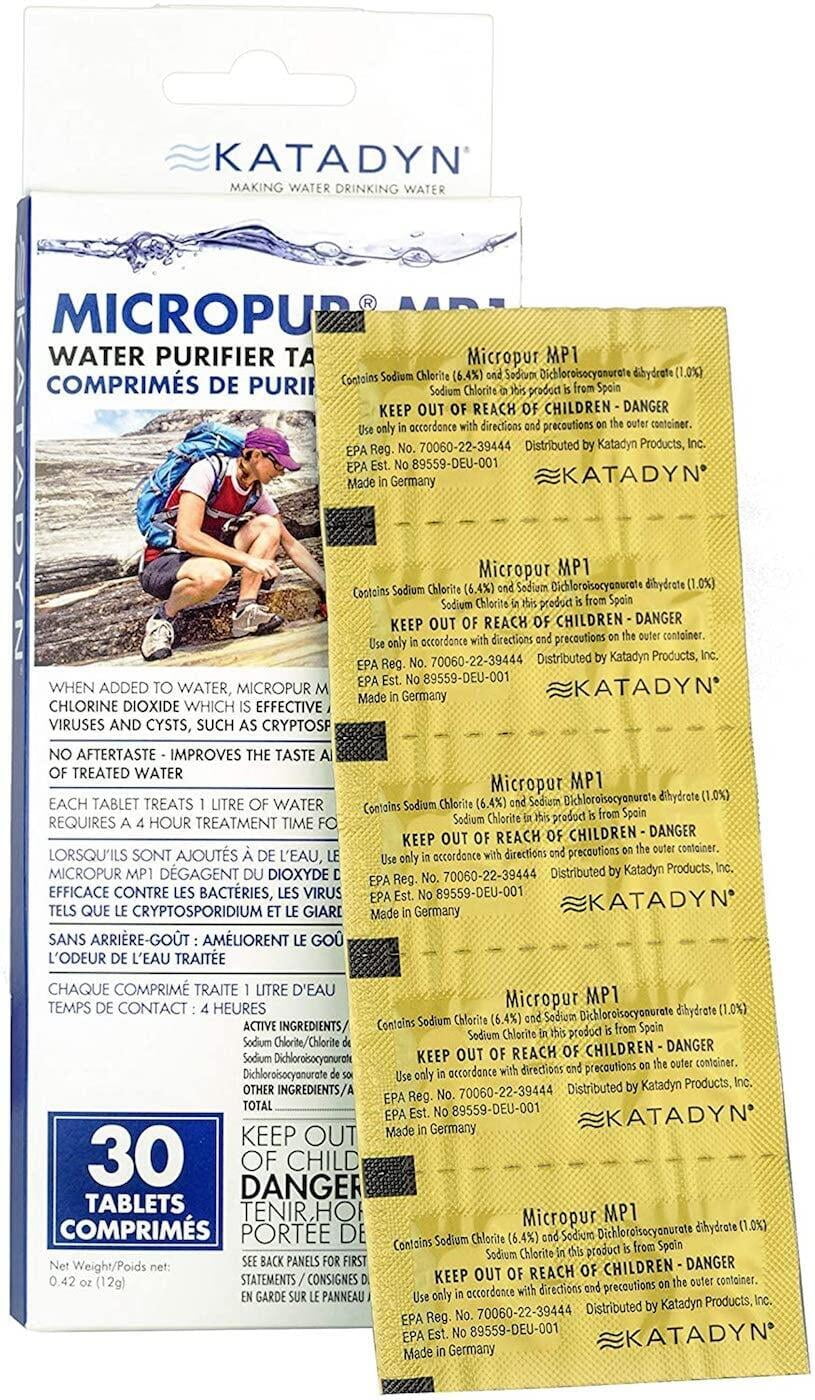
Having access to clean and safe drinking water during your trip is just as critical as any other aspect of travel safety.
Luckily, virtually every traveller already knows that the piped tap water is not safe to drink in many countries around the world, although they might not know exactly where it is and isn’t safe to drink.
Countries where the tap water is considered safe to drink include Canada, North America, Greenland, Iceland, Australia, New Zealand, Japan, South Korea, Singapore, Chile, Saudi Arabia and most European countries, but you’re advised to steer clear of the tap water pretty much everywhere else in the world.
As it turns out, there are far more countries in the world where tap water is unsafe to drink than where it is safe to drink.
Most travellers get around the issue of unsafe tap water by purchasing bottled water, but this is far from an ideal solution to the problem, since bottled water contributes massive amounts of plastic to the environment, can be more than 1,000 times as expensive as tap water, and in many cases is even more unsafe to drink than tap water, since bottled water tends to be poorly regulated.
The lack of stringent safety testing means that there is a very high likelihood of chemical and microbiological contaminants being present in the bottled water that you purchase and consume while abroad.
These contaminants can include arsenic, fertilizers, acetaminophen (Paracetamol), coliform bacteria, caffeine, solvents, chlorine byproducts and more. Contamination with microplastic particles is another major issue with bottled water. Although these are also present in tap water, there are about twice as much of them found in bottled water.
The truth is that more than half of all bottled water, rather than coming from a mountain spring or other pristine source, is just treated tap water, and the bottled water company’s treatment process doesn’t always remove all the contaminants that were present in the original tap water.
That’s why it’s better if you take the water treatment process into your own hands, giving yourself the ability to purify tap water and water from other sources you encounter yourself, rather than counting on a profit-driven corporation to care about your health.
If you’re only worried about biological contaminants like viruses, bacteria and protozoa and you’re only going away for a week or two, you could get by with a few packets of water purification tablets, which are also known as germicidal tablets.
You can use these to purify tap water or freshwater from other sources ( i.e. springs, seepage, streams, lakes, etc. ) that’s relatively free of impurities and suspended material.
Water purification tablets have the advantage of being extremely portable (they come in a small packet) and don’t require a fire, gas stove, electric kettle, immersion rod, as would be necessary if you wanted to purify water by boiling it.
Water purification tablets can be either chlorine-based (i.e. chlorine dioxide, sodium dichloroisocyanurate, sodium chlorite) or iodine-based (i.e. tetraglycine hydroperiodide).
Most types of tablets are effective against bacteria, viruses and giardia, but iodine-based tablets are not effective against the hardy cryptosporidium parasite. The tablets that kill cryptosporidium are normally chlorine-based.
One problem with iodine-based tablets is that they can cause thyroid disorders like hypothyroidism if taken for too long and if you are pregnant or iodine intolerant (check with your doctor), you definitely should steer clear of iodine-based tablets.
Both iodine and chlorine-based tablets can impart a colour to the water and both may leave an unpleasant aftertaste, although additional chemicals can be used to neutralize this aftertaste. Most people find the taste of chlorine less disagreeable than that of iodine.
Some brands claim that their tablets don’t alter the colour or taste of the water, but these assertions should normally be taken with a pinch of salt.
Water purification tablets are normally dropped into a bottle filled with water (usually 1-2 tabs per litre), at which point they slowly begin to dissolve or effervesce. You may need to shake the bottle for several minutes after they have completely dissolved in order to ensure that the chemical is properly distributed throughout the water.
You’ll then need to let the water sit for a while until it's ready for drinking - usually 30-35 minutes for eliminating viruses, bacteria and giardia, and 4 hours for cryptosporidium. However, if the water is very cold or has a lot of impurities, you may have to wait for much longer.
We recommend the Katadyn Micropur MP1 tablets for most travellers. They’re chlorine-based, fast-acting and they kill bacteria, viruses, giardia and cryptosporidium.
They’re also the only water purification tablet registered with the EPA as a microbiological water purifier. One tablet treats one litre of water and 20 tablets come in the packet, which has a 5-year shelf life.
One of the major limitations of water purification tablets is that they don’t remove dissolved chemicals, heavy metals or physical impurities from water. There are parts of the world where you have more to be concerned about in the local tap water than just harmful microorganisms.
Water purification tablets are also not very suitable for longer trips, since they contain chemicals that your body would be taking in every time you drink water that's been treated with the tablets. These chemicals may accumulate in the body over time and begin to cause harm.
If you are planning an extended trip (i.e. longer than a month), it’s highly recommended that you invest in a portable water purifier as your mainstay for supplying yourself with potable water, as well as bringing along a few packets of water purification tablets as a backup.
A portable water purifier is a compact device that gives you clean, safe drinking water on demand. The best products will filter our debris and physical impurities, will eliminate over 99.99% of viruses, bacteria and protozoa and will also filter out most toxic chemicals and heavy metals from the water.
Some portable water purifiers use technologically advanced mechanical and chemical filters, and these are often incorporated into the screw caps of water bottles, so that you can just fill the bottle up with the suspect water and squeeze clean, safe drinking water out through the spout into your mouth.
To learn all about water purifiers, see our in-depth guide to the best water portable water purifiers for travel, where we cover a variety of water purification systems that are suitable for travellers and outdoors folk alike.
But what if you do need to drink bottled water during a trip, what then? In that case, my advice would be to stick to the most widely known brands and to try to avoid the more obscure local brands, which can be numerous. Additionally, you should always check that the seal is unbroken before purchasing and consuming.
#66 - Be skeptical of quiet restaurants
A vacant or very quiet restaurant does not always warrant suspicion, as there can be a multitude of reasons for this, none of which have anything to do with the restaurant having a history of food poisoning incidents.
Here are a few possible reasons:
- The restaurant might be newly opened and struggling to gain traction
The restaurant could be in a very unfavourable location
There might be low demand at present due to economic problems the country is facing
There might not be a culture of eating out in the country
It might be a very expensive restaurant that sustains itself from a very small number of high-paying customers.
You might have come during a seasonal or daily lull
This is why looking at one restaurant in isolation doesn’t tell you much about whether it’s good or bad. But you can make a sounder judgement if you look the restaurant in context; What about the other restaurants in the vicinity (if any)? Are they all quiet too?
If all the restaurants on a particular street are overflowing with diners but one is inexplicably vacant, that’s a pretty strong indicator that people are deliberately avoiding that particular restaurant.
If there are no nearby eateries to compare a restaurant to, it becomes more difficult to know whether the restaurant has a legitimate reason for being devoid of customers or not. You might be willing to give a restaurant the benefit of the doubt in some situations, but you’re always taking a chance if you do that.
That’s why a lot of travellers follow the rule of thumb of mostly sticking to restaurants that are thronging with local diners, who surely know the best eateries in town better than any outsider.
You can’t really go wrong if you take this approach, since there would rarely be a reason why a bad restaurant would be patronized by local diners, unless all the good restaurants in town were closed and people had no option other than the inferior restaurant.
In that case though, they’d probably cook at home rather than risk food poisoning or a bad meal.
#67 - Avoid raw salads
Many people think that it is predominantly animal foods, like eggs, undercooked meat and shellfish that make people sick with food poisoning, but this couldn’t be further from the truth.
According to an article published by Vox, fruit and vegetables make more people sick than meat. According to data collected by the CDC, out of an estimated 9.6 million annual cases of food poisoning, more people were made sick by leafy salad greens like lettuce and spinach than by any other commodity.
Leafy greens accounted for 22% or 2.2 million cases of illnesses, while produce (fruit and veg) overall was responsible for 4.9 million cases of food-borne illnesses, which is more than half (51%) of the estimated annual total.
By comparison, dairy, eggs, meat, poultry, fish and shellfish combined accounted for 48% of the total annual illnesses. Fish and shellfish were responsible for far fewer cases of illness (6%) than meat and poultry (22%) or dairy and eggs (20%).
There seem to be a number of reasons that can help to explain these results.
The most obvious reason is that most salad greens are eaten raw, whereas animal-derived foods rarely are. If raw meat, seafood or eggs are cooked right through, any pathogenic bacteria like Salmonella, E. coli, Campylobacter or Listeria that might be lurking in the food should be killed off by the heat.
Another thing that surely impacted the results is the fact that health-conscious people are eating more salads and leafy greens nowadays.
You might think that washing the vegetables would get rid of any bacteria that might be present, but this is not always the case, since some bacteria are not easily rinsed off.
Bacteria can also infiltrate and infect the interior parts of the fruit or vegetable through a bruise, hole or other defect, and these bacteria will escape the water from the tap. Even if you prepare your own salads and wash them with purified water when you’re travelling, this issue remains.
One of the reasons that produce gets contaminated in the first place is because of cross-contamination with animals being raised on the same farm or being butchered in the same processing facility.
If you ask me, it’s better to stick to cooked greens when you’re travelling and leave the raw salads for when you have access to better medical facilities.
#68 - Stick to freshly cooked hot food
In some countries, you’ll find a buffet-type arrangement in many of the local restaurants, where an array of pre-cooked dishes are on display inside glass cases or pots.
In Indonesia for example, the local warungs typically have a glass display cabinet fronting the street, inside which there’ll be a wide variety of Indonesian meat, fish and vegetable items to choose from.
The items are already prepared and ready to eat, so you just pick and point. Although the sealed glass display cabinets protect the food from flies, it's still sitting out in the heat for hours, and air temperatures usually hover around 30°C in tropical countries like Indonesia.
In the Philippines there are many local eateries with a similar setup where everything is already cooked and ready to be served when you enter, though here I’ve mostly observed that the dishes are kept inside metal pots rather than glass display cabinets.
The problem with all of these arrangements from a hygiene standpoint should be obvious when you consider that at buffets, cold foods are supposed to be kept below 40°F and hot foods should be kept above 140°F.
But these foods are being kept at around 85-90°F, which is in the optimal range for bacterial growth, and you don’t know how long the foods have been kept out in that heat for by the time you enter the restaurant.
A professionally-run buffet where the food items on display are kept at the correct temperatures is safer, but even still, there are many problems with buffets.
At a buffet you might have other customers handling the dishes with their bare hands instead of using the provided tongs, and if the buffet doesn’t have a sneeze guard, they could be coughing and sneezing all over the food too.
And it’s not just children who do these things - it’s adults too, and many don’t even wash their hands with soap after using the bathroom.
People will sometimes accidentally drop the serving tongs into one of the dishes or will drop a ladle into a pot of soup, thereby contaminating the entire batch. There can also be cross-contamination between the dishes at a buffet, which is highly problematic if something you’re allergic to gets into the food you want to eat.
Even the plastic trays used at buffets to carry your food-laden plates to the table can be swarming with bacteria because these tiny microbes just love porous surfaces like plastic.
To always stay on the safe side food-wise when you’re travelling, it’s best to avoid pre-cooked foods, reheated foods and buffets altogether, and stick to eating dishes that are cooked from scratch when you order them. If everything you eat in a restaurant is freshly cooked and served piping hot, you should mostly be fine.
#69 - Reconsider iced beverages
On a scorching hot day, it can be very tempting to order a chilled, ice-cube laden fruit juice, shake or smoothie from a street stall. But you might want to think twice about adding the ice cubes, as they're only as pure as the water that was used to make them.
In countries with questionable tap water you should be especially careful about taking ice cubes with your drinks, since vendors may prepare the cubes from the local tap water instead of using purified water to do so.
According to this report, E. coli bacteria was found in 92% of 948 ice samples taken by the BrihanMumbai Municipal Corporation from shops and street vendors across the city of Mumbai in India. In some parts of the city, 100% of the samples were contaminated with E. coli.
E. coli is a bacterium that has been associated with gastroenteritis, diarrhoea, vomiting and food poisoning. Salmonella is another bacterium that’s known for its ability to survive in ice cubes.
One study did find however that certain beverages poured over ice cubes can kill most of the bacteria living in or on them. The beverages mentioned in the study were vodka, whisky, Martini, peach tea, tonic water and coke.
Often you have to be pro-active and actually refuse ice, because many vendors will add it to your beverage by default, unless you explicitly request them not to.
Vendors love to add ice without you even asking for it because the practice increases their profits, since the worthless ice cubes occupy space in the cup and reduce the amount of the beverage that you get when the cup is full.
#70 - Stick to peelable fruits
The peel or outer skin of a fruit helps to protect the interior flesh or pulp from environmental contaminants like microbes, particulate matter (dust, soot, smoke, dirt etc.), chemicals, fertilizers, herbicides, pesticides and so on.
It’s just as well that it does, because you never know what that tempting piece of fruit that catches your eye has been exposed to during its time on the farm and on its way to market.
Fresh fruit is often only available from roadside vendors in developing countries, where it surely picks up plenty of dust and other particulate matter from all the vehicles passing by each day, as well as smoke from people burning rubbish and leaves beside the road.
With many fruits the peel is thin, edible and is normally consumed with the pulp of the fruit, since it would be a great hassle to remove, as well as a waste of vital nutrients. Examples of such fruits would be apples, persimmons, guavas, grapes, starfruit, strawberries, blackberries, raspberries and so on.
Although some of these fruits can be peeled if you really want to do so, they’re not considered peelable per se. You would normally give them a good wash before consuming them, but even so, you’re likely to ingest some of the contaminants that they might have picked up during their journey from farm to you, the consumer.
On the other side of the coin, you have many fruits with a thick skin or rind that are designated as peelable fruits, since you have to first remove the peel to get at the tasty pulp inside. The pulp of these fruits is largely protected from outside contaminants by the thick outer peel, and is therefore a lot safer to eat than that of the non-peelable fruits.
Examples of peelable fruits would be bananas, oranges, lemons, pomelos, mangoes, pineapples, santol (cotton fruit), rambutans, lychees, mangosteens, snakefruits, avocadoes, custard apples, soursops, watermelons, jackfruits, dragon fruits, passion fruits and so on.
Also very safe to eat are any fruits that have a hard, woody shell or a very thick husk that must be cracked, smashed or prised open to access the edible pulp inside. The classic example is the coconut but there are other commonly encountered tough-shelled edible fruits like bael, durian and wood apple. The latter is very popular In Sri Lanka.
#71 - Think twice before accepting edible freebies from strangers
It’s not uncommon to be offered free food, drink or sweets by locals when you’re travelling in a foreign country, especially if you’ve taken the time to engage them in conversation.
The vast majority of the time, this is a completely benevolent gesture of goodwill or a traditional act of hospitality, but there are always the exceptional cases. Indeed, many guidebooks warn travellers of the dangers of accepting free handouts from strangers that they encounter on the road.
Every so often, there will be somebody with malevolent intentions who exploits the fact that it is tradition for his people to offer free food and drink to foreign visitors out of a sense of warmth and kindness.
But instead of trying to feed you or make you feel at home in his country, this somebody could be trying to drug you, perhaps with the ultimate objective of robbing, sexually abusing or even kidnapping you.
And rather problematically, there is no reliable way in most cases that a traveller could know the difference between a genuine offering of complimentary food and drink and a sinister drugging attempt.
Globespots.com mentions in their article on travel scams that there’s one travel scam, which is particularly prevalent in the Philippines, where a group of men approaches a traveller at a bus or train station and offers the traveller sweets laced with some type of sedative drug. The traveller is soon knocked out and wakes up a few hours later to find that his/her valuables have vanished.
These types of incidents are also common in South America, where a drug called burundanga (also scopolamine, zombie drug, devil’s breath and voodoo powder) is commonly employed to hijack the minds of travellers, especially in Columbia. Victims of the drug are known as burundanguiado.
The drug comes in the form of a tasteless yellow powder that’s derived from the highly toxic datura plant and can be added to food, drink or cigarettes.
A lot of travelers fall prey at bars and nightclubs, when their drink is spiked with the drug while left unattended or when they accept drinks that they didn’t buy or open themselves from new acquaintances.
Burundanga induces a waking trance, so that the victims are completely unaware of what they are doing while under its spell. They become like mindless zombies, fully amenable to the will and directives of the person who drugged them.
The victim is so entranced that they can be made to do virtually anything they’re told, like making multiple withdrawals from an ATM and handing over all the cash to the thief without any resistance. When the effects of the drug subside, the victim is usually unable to recall any of the events that occurred while under its influence.
Another destination where a lot of druggings are reported from is Thailand, where drinks are often spiked in bars. In Pattaya, a Thai destination famous for its prostitutes and sex tourism, male clients have been rendered unconscious and even accidentally killed by a noxious paste that the local prostitutes smear on their breasts.
If a sweet, drink or food item that you’re offered is inside its original sealed packet, it’s less likely that it has been tampered with, but I’d still err on the side of caution even here.
If you’re offered something edible without any packaging, I would say that it’s definitely best to turn down the offer, unless you’re absolutely convinced you can trust the person.
But the big problem with these druggings is that you could be betrayed by the types of people you’d least expect, since there’s no archetypal drugger.
Travellers have been drugged by friendly families, sweet-looking grandmothers, highly-educated wealthy people and other types that they would never have suspected. I think you really have to rely on your sixth sense in a lot of these situations and heed your gut feeling.
I’ve been offered sweets on a few occasions by local people that I met during my travels, and although the sweets were always sealed inside their original wrappers, I still never ate them out of a sense of caution.
I have been invited by locals for dinner, tea and alcoholic beverages in their homes on a number of occasions, but luckily enough, nothing bad ever happened to me.
#72 - Cook your own food
The one surefire way to ensure your food is prepared hygienically is to prepare it yourself. This way, you can guarantee that the veggies are washed in purified water, the meat is cooked right through and everything is handled with clean hands.
Of course, a big part of travelling is dining in exotic restaurants and sampling the local cuisine, but if you can’t find any restaurants that look hygienic or that are within your budget, it might better to take food preparation matters into your own hands.
Hostels normally have a kitchen where you can store, refrigerate and cook your own food, as do some guest houses and homestays. Cookie-cutter hotels and lodges are less likely to offer these self-cooking facilities.
Airbnbs also frequently come with well-equipped kitchens, since people that use the service tend to be looking for short-term rentals and longer stays than a typical traveller passing through town.
If you’ve never used Airbnb before, make sure you sign up using this link to get €30 off your first booking and €10 to use toward an experience worth €40 or more.
Even if the property you’re staying at doesn’t have a self-catering kitchen, there is still a way to cook your own food in your room.
All you need to do is carry a stainless-steel cooking pot and a small electric immersion rod for heating water. You can plug the heating device into a power outlet in your hotel room and use it to boil water in the cooking pot, just like using a stove.
I’ve cooked potatoes, eggs, pasta, noodles, rice, vegetables, soup and many other foods in my hotel room when I’ve wanted a break from restaurants or didn’t trust the hygiene stands of the local restaurants, or when I wanted to save money on food.
You can even cook things in a hotel room without a heating rod, if you get creative. For example, you can easily prepare porridge or soft-boiled eggs in a coffee maker.
The water doesn’t completely boil in a coffee maker, but many hotel rooms also provide an electric kettle. If it’s the type of kettle that has a concealed heating element, it can be used to cook pretty much all the foods I mentioned above, even though kettles are not expressly designed for the purpose of cooking.
If the heating element is not concealed, I wouldn’t risk cooking food inside the kettle, as some of it could stick to the hot element and that would probably be a nightmare to clean up afterwards. Also, if you damage the kettle and the hotel finds out, you will probably be forced to pay a fine.
But even with this type of kettle with an exposed element you can still cook foods like noodles, instant soup, couscous, instant rice, cup-a-soup and other items that only require you to add boiling water and let stand until ready.
If your hotel room or Airbnb has a clothes iron, you can use the hot metal surface like that of a frying pan to cook all sorts of foods, including grilled sandwiches, fried eggs, strips of bacon, fish fillets and even beef steak.
All you need to do is wrap the food in the aluminium foil and then place the hot iron on top of the foil package until the food is cooked to your satisfaction. For more detailed instructions on cooking with an iron and a kettle, check out this video.
Section 7: ATM & Banking Safety Tips
Safety is naturally a concern that arises for travellers any time that financial transactions, banking or ATMs are involved.
Lose access to the funds in your bank account or worse, have the funds stolen by a hacker, and you could end up in deep water.
Here are some important tips to protect your bank account (s) from hackers and maintain access to your funds while transacting overseas.
#73 - Get a neobank account
Neobanks or challenger banks, as opposed to high-street or legacy banks, are those revolutionary mobile-first, digital banks and electronic money institutions established by Fintech startups.
Most of them have sprung up in Europe, but some have since expanded their operations to several other countries outside Europe.
Some of the names you might be familiar with include N25, Revolut, Starling, Monzo, Atom, TransferWise, Ferratum Bank and Bunq. We cover all the best ones in our article on the best bank accounts for international travellers.
Not only can these challenger banks save you a ton of money (they tend to have much lower fees than traditional banks) and make banking much easier for people on the move, but they also allow users to better secure their funds against financial fraud and hackers.
Fintech banks send real-time notifications of your account activity to your smartphone, so if somebody gets your card details with your knowledge and makes an online purchase, you’ll be immediately notified of the transaction so that the criminal doesn’t get a chance to do any more damage.
Once you become aware of any unauthorized activity on your account, you can freeze your debit card immediately through the companion smartphone app that these digital bank accounts come with, without having to phone your bank and wait for them to disable the card.
Challenger banks give you almost complete control over the security level of your account, allowing you to enable/disable your card’s ability to make contactless payments, online payments, swipe payments and ATM withdrawals.
These accounts also allow you to set your own daily and monthly spending limits, as well as limits for contactless payments, so that you can limit the damage that a hacker could do to peanuts if you ever did become a victim of fraud.
Some accounts come with other innovative security features, like location-based security, which requires you to have your phone’s GPS turned on. When this security feature is enabled, offline payments made with your card will be declined if the card is not within a certain distance of your phone at the time of the transaction.
The two leading neobanks in the world at the moment are N26 and Revolut; see our N26 Vs Revolut Comparison Guide to find out how the two companies stack up against each other.
Revolut however, is not technically a bank and is legally classified as an electronic money institution. If you’re looking for a robust, fully-fledged digital bank, I would recommend the German challenger bank N26, which has its headquarters in Berlin and is currently available in 23 European countries, plus the United States.
You can check out the N26 website here or read our comprehensive N26 review to get the low-down.
#74 - Notify your bank before travelling
You won’t need to do this if you get a Fintech bank account, as these banks make their users responsible for the security of their own account, whereas traditional banks don’t trust their users with that responsibility, often freezing the card as soon as they spot a transaction at an overseas ATM or shop.
But if you’ll be banking with a traditional bank during your trip, you'll still have to follow the age-old advice of notifying your bank that you're travelling before your departure, so that they don’t assume the worst and freeze your card when the first anomalous foreign transactions start appearing on your account.
You really don't want your debit card to get frozen, as it means that you lose all access to the funds in that account and can neither make an ATM withdrawal nor can you pay for anything online or in a store.
Phoning your bank to reassure them that everything is fine, so that they can unfreeze the card, is always an unwanted hassle, and will cost you time and most likely a considerable sum of money too (though you can reduce the expense by calling through Skype or other VoIP services).
Depending on your bank’s customer service operating hours, you may have to wait until the following day or even for several days (if it’s a weekend or bank holiday) to speak to an agent.
Once you finally do get through to a representative, you’ll probably have to jump through a number of hoops to prove ownership of the account.
You might be asked challenging security questions that you can’t answer without being able to access certain documents that you only have back home. That’s a big problem if you need cash right now to buy groceries or pay your room rent.
Even if you inform your bank that you’re going abroad, there’s still no guarantee that they won’t block your card once you start transacting abroad, as the fraud detection systems are usually automated. But notifying the bank will, in most cases, at least reduce the risk that this will happen.
#75 - Always carry a backup card (or several)
As we just discussed, your bank can still freeze your card even if you notify them that you’re going to be travelling. Your card could also get damaged, lost or stolen or it could expire during your trip and be rendered a useless piece of plastic.
Your card could also get swallowed by an ATM if you insert it the wrong way, if the card is expired, frozen or damaged, if the ATM doesn't support that card network, if the ATM is malfunctioning or out of order, if your balance is too low or if you enter your PIN code incorrectly too many times,
That’s why you should always carry at least one backup debit card so that you can still make relatively inexpensive ATM withdrawals (credit cards charge a high cash advance fee) if your primary card is no longer viable.
This means that you’ll need a second bank account. Again, I recommend you get set up with one or more of the travel-friendly bank accounts discussed in this article. Personally, I travel with 8 backup debit cards (N26, Revolut, TransferWise, Ferratum Bank, Monese, Curve, Payoneer), but one or two reserve cards is enough.
It’s also a good idea to travel with a credit card or two, so that you can still make purchases and withdraw cash from an ATM in case your bank account runs dry, which can happen if you were not keeping track of your spending or if somebody hacks your account and completely drains it to the dregs.
#76 - Avoid convenience ATMs
Convenience ATMs are those cashpoints that you find in locations where you’re likely to need cash, like at gas stations, transport hubs, hotels, malls, mini-marts, cinemas and so on. They usually have inadequate security and are more likely than other ATMs to cause you problems.
I had a very bad experience with a convenience ATM at a gas station in Kuala Lumpur during my first ever trip to Malaysia; after a series of failed withdrawal attempts I discovered that with each attempt the machine was debiting €300 from my bank account.
Eventually, the error message on the screen changed to “no funds available” at which point I realized that the ATM had completely emptied my bank account.
I did get the stolen money credited back to my account after visiting a branch of the connected bank (CIMB) and submitting a report, but the incident left me without cash until I was able to get some money wired to me through Western Union.
Hence you should avoid these convenience ATMs and try to only withdraw cash from on-site ATMs that are located inside or directly outside a bank premises. These ATMs are likely to be protected by much more robust security measures, like 24-hour surveillance or security guards.
Also, if something goes wrong with your transaction (i.e. money is deducted from your balance but no cash is dispensed) or the machine eats your card, you usually have immediate recourse when you use an on-site ATM.
If you can’t get to a bank, the next best option is to use one of those (often air-conditioned) off-site ATM booths that are common in some countries. These are usually monitored by CCTV cameras and/or a security guard.
If you can’t find any trustworthy ATMs, another option that may be available is a cash advance or over-the-counter withdrawal, which is done by entering a bank branch and giving the teller your debit card.
If you’re lucky and it’s a bank that offers this service (many do not nowadays), they’ll debit your card using a chip and PIN machine and will then hand you the cash, just like how an ATM machine works. This service can also be used to avoid charges in some countries (like Thailand) where all the ATMs charge exorbitant access fees.
#77 - Follow standard ATM safety guidelines
There are a few standard safety guidelines for using ATM machines that if properly adhered to, should greatly reduce the risk of becoming a victim of theft or fraud at an ATM.
Here are the most important rules to follow:
Avoid using ATMs at night – Criminals are more likely to strike at night, when the streets are emptier, fewer witnesses are around and when they can more easily hide their identity.
Stand in close to the machine – This will make it more difficult for a person standing beside or behind you (shoulder surfer) to see the keypad while you’re entering your PIN. Also, if anyone is breathing down your neck, don’t be afraid to tell them to back off and keep their distance.
Always cover the keypad – This is not only to thwart shoulder surfers, but also to guard against any pinhole cameras that the outside of the machine might have been fitted with by criminals. Many ATMs provide some degree of shielding for the keypad, but this is not always adequate.
Always reject help from civilians if you’re having trouble – The offer may be genuine, but an opportunist could exploit your moment of vulnerability to find out your PIN number or card details.
Never withdraw large sums of cash – If someone were to mug you after making an ATM withdrawal, you’d be glad that you didn’t withdraw too much cash. If you have to make multiple consecutive withdrawals to overcome per-transaction limits imposed by the ATM, you’re probably withdrawing too much.
Put the cash away before leaving the ATM – It’s not a good idea to be still fumbling with the cash and trying to put it into your wallet or purse while you’re walking away from the ATM. Let the other people in the queue wait the few extra seconds for you to put away the cash you’ve withdrawn before leaving the machine.
Don’t abandon an ATM that swallows your card – If the ATM won’t return your card as a result of tampering, the fraudster will come to retrieve it once you leave the area. Even if you know that it happened because of an error in the machine, you shouldn’t leave the scene, just in case the ATM spits out your card after you do so. You should immediately call your card issuer or freeze the card yourself, which is simple to do from a mobile app if your bank provides the service (most neobanks do).
#78 - Be vigilant for signs of ATM tampering
Even the ATM you’re withdrawing from seems to have good security in place, you should still always be vigilant for any signs that might indicate the ATM has been tampered with. If you think it has been compromised, you should not under any circumstances attempt a withdrawal or any other transaction.
Although it’s not always easy to tell if an ATM has been tinkered with, there’s a much higher likelihood that you’ll notice any anomalies if you’re familiar with the main ways that criminals modify ATMs to steal your PIN number and debit card.
Here’s what you can do to protect against these scammers:
Check if there’s a fake cover over the machine
Sometimes the entire ATM machine is overlaid with a fake cover that closely resembles the appearance of the real ATM and that’s fitted with skimming devices.
A skimming device harvests your card data from the magnetic strip on the card, while a hidden camera captures your PIN as it’s entered.
Once the card data has been captured it can be placed onto the magnetic strip of a newly produced fake card, which can be used by the crooks to make cash withdrawals with your PIN at any ATM that hasn’t been upgraded to chip and PIN.
Make sure you give the whole front part of the machine a good tug or try levering it up from the bottom to test for a fake front.
Inspect the card reading slot carefully
Inspecting the card slot closely may reveal the ends of a loop of X-ray film, also known as a Lebanese loop.
This strip of film is a type of entrapment device that prevents the machine from being able to eject your card once inserted.
The card is later retrieved by the perpetrator after he has obtained your PIN while trying to help you to extricate the apparently swallowed card from the machine.
You should also try to jiggle the card reading slot and give it a sharp tug; if the slot is loose it may be a skimming device and if it comes right off to reveal the genuine card reading slot underneath, it definitely is one.
Watch out for fake keypads
Some scammers will overlay a fake keypad on top of the genuine keypad. This fake keypad can look very realistic and acts as a skimming device, which is often capable of transmitting your PIN number in real time to the fraudsters via Wi-Fi for recording.
If the keypad is loose or is not flush with the machine, or if the keys feel spongy (give little resistance when pressed) or seem unusually large or thick, you may be dealing with a fake.
Check the audio jack
Some ATMs have headphone jacks so that users can have the ATM's instructions delivered privately by voice. An audio jack that’s misaligned or sunken inside the hole could be an indication that the machine has been modified by a crook.
Examine the receipt slot
If you see any cracks or signs of damage around the receipt slot, this could be an indication that somebody has opened it up and fitted a device inside and reassembled it.
Inspect the cash-dispensing slot
With some older ATMs, scammers will often use a small metal screw (usually fairly easy to spot) to prevent the cover of the cash-dispensing slot from being able to open.
This prevents the ATM from being able to dispense cash to the user, but the bills remain inside the slot after the frustrated user leaves. The scammer then sidles up to the machine, removes the screw and retrieves the cash from inside the slot.
Look out for unusual external fittings
Compromised ATMs often have a little grey box mounted above the display. The box is often fitted with a camera and an SD card, which stores the images the camera captures of ATM users so that crooks can access it later.
Section 8: Transportation Safety Tips For Travel
Even though we get to places faster than ever nowadays, the journey to the destination is still a substantial part of travel and can be one of the riskiest aspects of it.
Common modes of transportation can be prone to accidents, hijackings, petty thieves and even terrorist attacks.
Here are a few tips to keep in mind to stay safe on the way to your destination.
#79 - Choose safer modes of transportation
While modern transportation methods have certainly made it possible for us to travel to far-flung corners of the earth that would have previously been inaccessible, there’s no doubt that this apparent boon to mankind comes at the cost of human lives.
According to the WHO, 1.35 million people die each year in road traffic accidents alone. Just getting from A to B can be dangerous.
But you do often have a number of different transportation options to choose from when travelling to your destination. Which one is the safest? Is it safer to travel overland, by boat or by air? Are all modes of ground transportation equally safe?
A useful metric to compare between the various modes of transportation is the number of fatalities per billion vehicle miles. The likelihood of dying for a given mode of transport also correlates quite closely with the likelihood of being seriously injured.
According to the results of a 2013 study entitled “Comparing the Fatality Risks in United States Transportation Across Modes and Over Time”, which was conducted by professor Ian Savage of Northwestern University, air travel is actually the safest form of travel in the US, with only 0.07 fatalities per billion passenger miles.
This means that even if you flew 500 miles every single day for an entire year, your chance of dying would still only be 1 in 85,000. It is said that you are 15 times more likely to be struck by lightning than to be involved in a plane crash.
Does that mean you should always fly?
Well, no it doesn’t, because flying can be expensive, more harmful to the environment and for shorter journeys it may not even save you time when compared to some of the ground transportation options. But if you’re travelling significant distances, flying is typically the safest option and makes a lot of economic sense too.
When it comes to ground transportation, the question is often: bus or train?
According to the same 2013 study, the fatality rate for passengers on board trains in the US was 0.15 per billion passenger miles, while that for passengers on buses was 0.11 per billion passenger miles, although this figure didn’t account for victims of crime.
So, buses and trains are not quite as safe as flying, but they are still very safe ways to travel. This study found buses to be somewhat safer than trains but data from other countries has shown trains to be safer than buses.
I know from my own experience that buses can be a lot more dangerous than trains in some countries; my heart was in my mouth for the entirety of every single bus journey in Bangladesh, because the drivers kept constantly overtaking slow-moving vehicles and then swerving back onto the correct side of the road at the very last second, always narrowly missing a head-on collision with oncoming traffic.
Most of the bus drivers in Bangladesh seem to have a death wish, probably due to the low wages and long working hours that they are forced to endure. This is a problem in several other developing countries too.
In any case, I would normally choose the train when given the choice, as they generally make for a smoother ride, provider greater legroom and space for luggage, and usually have more enjoyable scenery.
What about travelling by sea? The same study found that travelling by ferry carried a fatality rate of 3.17 per billion miles, which makes travelling by sea less safe than travelling by train or bus, but safer than travelling by road.
And the most dangerous ways to travel according to the 2013 study? Well, cars and light trucks crank the danger level up a few gears, with relatively steep fatality rate of 7.3 per billion miles. This doesn’t bode too well for long distance carpooling services like BlaBlaCar, unless they’re operating on routes that are underserved by buses or trains.
But the risk of death when travelling by car or truck pales in comparison to that of travelling by motorcycle, which carries an outrageously high fatality rate of 212 per billion miles. This means that if you were to drive a motorcycle for 15 miles every day for a year, you’d have a 1 in 860 chance of being dead by the end of it.
If you think you can evade these threats to life and limb by walking or cycling your way around the world think again, as more than half of all road traffic fatalities are among the so-called vulnerable road users like pedestrians and cyclists that don't have a protective shell around them. Indeed, the dangerous vehicles we have created even endanger the lives of those who opt out of them.
So to wrap up, air travel is the safest mode of travelling but may not be financially or economically practical for medium-length or short journeys, while buses and trains are both very safe alternatives.
After that, travelling by ferry is the next safest option, while travelling by car, truck or motorcycle are the least safe options.
#80 - Get seat-wise
The seat that you choose on a plane, train, bus, ferry or in a car can lower or raise the risk that you’ll be seriously injured or killed in the event of a crash.
Of course, you don't always get to choose your seat, especially if you’re the type of traveller that makes decisions on a whim and never buys tickets for buses and trains in advance. If you buy your ticket too late, you might be forced to sit in the most unsafe or most uncomfortable seat.
But if you do book your seat well in advance of your journey, you’ll often be able to secure the seat of your dreams before somebody else bags it. For airlines, you normally have to pay a bit extra if you want to pick a certain seat and not have the airline randomly select one for you.
So which seats are safest on popular modes of transportation?
Plane
According to analysis done by Time magazine on the Federal Aviation Administration’s CSRTG Aircraft Accident Database, the safest seats on a plane are the middle seats in the rear third of the aircraft, with a 28% fatality rate, while the aisle seats in the middle third of the aircraft had the highest fatality rate of 44%.
In general, the rear third of the plane was found to be safest, with a 32% fatality rate, compared to a 38% and 39% fatality rate for the front and middle thirds respectively.
Also it’s good to be seated close to an emergency exit, as in the event of a crash you’re more likely to get out alive if you are.
With all that said, aircraft accidents carry a high degree of randomness and unpredictability, which is why many airline safety experts confess that in reality, there is no safest seat on a plane.
Train
The safest carriages to occupy on a train are the middle ones, since they’ll distance you from collisions at front or rear of the train.
Although a window seat allows you to drink in the splendid scenery and feel the wind in your hair (at least on some trains), an aisle seat is actually safer, since side-on collisions are actually more likely for trains than collisions at the front or rear. This is because train derailments are actually nine times more common than collisions.
It’s also advisable to choose a rear-facing seat, so that you won’t be thrown forwards off the seat in the event of a head-on collision.
Bus
Like with trains, the safest seats on buses are the ones close to the centre of the vehicle, since they put you furthest away from the most likely points of collision at the front and rear.
It’s safest to sit in the aisle seat on the side of the bus that’s farthest from the oncoming traffic, as out-of-control vehicles could collide with the sides of the bus at intersections or when going around tight bends. If the seat is rear-facing, even better.
Car
Although it might seem counter-intuitive, conventional wisdom holds that the safest seat for all age groups and especially for older cars is actually the middle rear seat. This is contingent however upon the passenger wearing their seatbelt or having the proper booster seat.
For some newer cars, which have more sophisticated seatbelts (fitted with load-limiters and pre-tensioners) in the front seat but not in the rear, people over the age of 55 are advised to sit in the front, according to an article that appeared in the New York Times.
Boat
When seas are calm, every part of a boat is equally safe, but did you know that the safest place to be on a boat during stormy seas is down in its bowels?
This is because getting down low will lessen the effects of seasickness, and loose objects will also be thrown about less violently down below than in the upper levels of the boat. If you’re renting a cabin, the corridor outside should be a safer bet than staying inside where heavy objects could shift around.
#81 - Travel during the daytime (if possible)
In addition to the mode of transportation that you choose, the time of day that you travel also affects the risk of being involved in an accident, especially if you’re travelling by road.
A disproportionate number of road accidents at night, once you take into consideration that there are fewer vehicles on the roads after dark.
According to the website seriousaccidents.com, more than 40% of fatal car accidents occur at night, despite there being 60% less traffic on the roads.
This is due to a number of reasons, including the fact that people’s ability to properly see the road ahead is impaired at night, their reaction times are longer and they’re also more prone to drowsiness and falling asleep at the wheel after dark. Another factor is that drunk drivers are more likely to be on the roads at night.
Dawn and dusk are also particularly dangerous times of the day to be driving, as they are transitional periods where there is strong contrast between the brightness of the sky and darkness of the roads as well as changing light levels. This can cause vision problems for drivers as their pupils constantly have to re-adjust to the uneven and changing light levels.
This is the main reason I’m distrustful of overnight sleeper buses, especially in countries that have a poor track record for road safety.
My fears aren't allayed when I read stories like that of travel blogger Drew Binsky, who was involved in an almost-fatal bus crash in India, when he was travelling on a night sleeper bus from Udaipur to Jodhpur in the state of Rajasthan.
When it comes to planes and trains, there doesn’t appear to be a significant increase in risk when travelling at night versus travelling during the daytime.
The British Transport Police (BTP) states on their website that:
“You should be as safe and secure travelling by rail at night as you are in the day, but we understand that it can be daunting for some people.”
As for flying at night, there are a number of advantages, including (usually) better weather, improved aircraft performance (due to the lower temperatures), reduced turbulence and less traffic in the skies.You also sometimes get to witness a beautiful sunrise from the window in the morning.
But is travelling at night safer?
Well, according to an article in Plane & Pilot Magazine, night accidents account for 10% of general aviation accidents, but 30% of fatalities, so if a plane does crash at night, you’re a lot less likely to survive.
This elevated risk is reflected by the fact that many countries impose stricter regulations for night flights and a number of African countries even outright prohibit flying at night.
So, while travelling at night can come with its perks (not least of which is the opportunity it offers to save money on a night’s accommodation), it seems that it’s generally less safe than travelling during the daytime, and this is especially the case if travelling by road.
#82 - Protect your hand luggage during the journey
In Section 1 of this article on general safety tips, we explained why travelling light with a carry-on backpack is the way to go, as it means you can always keep your bag close to you, and will never have to worry about strangers handling it or trying to access the contents when you're not around.
But hand luggage or its contents can still be stolen during a bus, train, ferry or plane journey if you don’t take steps to ensure it’s well protected from thieves.
If it’s a lengthy journey and especially if it’s an overnight one, you’ll probably want to get some shut-eye, but how can you do that without inviting theft?
Here are a few simple tips to ensure your hand luggage remains safe during your journey:
Keep your carry-on as close to your body as possible
When travelling on a bus or train, it’s best to avoid keeping your hand luggage in the overhead storage rack, where someone could potentially rifle through it while you’re asleep or could easily do a "grab and run" while disembarking at one of the intermediate stops or stations during the journey.
It’s much safer to keep your hand luggage on your lap or have it resting on the ground between your legs (my preferred option).
You should avoid stowing your luggage under your seat, as in some parts of the world, thieves lurking in the seat behind have been known to steal things from bags that are stowed in this manner.
If you must slide the bag under a seat due to lack of comfort or cramped conditions, the seat in front of you is a better option, as you can at least keep an eye on the bag when it’s stowed there.
If you have a camera, you should pack it away inside your carry-on or wear the case across the front of your body, with your arm protecting it.
Pass your arm (s) or leg (s) through one or both of the shoulder straps
For additional security while the bag is resting on the ground between your legs, you can pass one or both of your legs through one or both of the shoulder straps.
This will make it almost impossible for a thief to snatch the bag or gain entry to it without you noticing, even while you’re sleeping.
If the bag is on your lap, you can pass one or both arms through one or both of the shoulder straps and then interlock your hands together to create a secure arrangement.
Secure your bag as much as possible
To prevent thieves from trying to break into your bag while you’re fast asleep during the journey, make sure you secure the bag with a luggage lock and I also recommend pulling the rain cover over the bag as a further deterrent.
You can also tether your bag to the leg of a seat or to your own leg using a length of cable or even a chain and padlock. But best of all is to have an anti-theft backpack, which we discussed in Section 2.
Stow your carry-on at your feet or underneath the seat in front of you on a plane
When flying, most travellers stow their hand luggage in the overhead storage compartment above their seat. They figure that their belongings are unlikely to be stolen on a plane, since there aren’t intermediate stops or stations for a thief to get off at like there are with a train or bus.
But then there’s the story of the Emirates passenger who flew from Dubai to Hong Kong in May 2016 and became the victim of quite possibly the biggest airline theft of all time.
The man noticed after landing that his carry-on bag containing over £1.7 million worth of cash and luxury items, including a Rolex and Patek Phillipe watch, was gone from the overhead bin.
Stowing your hand` luggage in the overhead bin just isn’t as safe as keeping your bag at your feet, where you can more easily keep an eye on it and keep your body in contact with it.
Depending on the size of your hand luggage, you may be forced by the flight attendant to stow your bag in the overhead bin when space is available, but if your hand luggage is relatively small you will often be allowed to keep it at your feet or under the seat in front of you.
#83 - Ease into driving a vehicle overseas
Thinking of buying or renting a vehicle to tour a country under your own steam?
This can definitely be a great way to break free from the fixed routes and timetables associated with buses and trains, a way to travel entirely on your own terms, stopping wherever you please along the way.
Or maybe you just want to occasionally rent a scooter during your trip to explore towns and cities and maybe drive to some of their outlying attractions.
Either way, it’s always advisable to gradually ease into driving in a foreign country and not try anything too foolhardy too soon, whether you’re operating a car, motorcycle, tuk-tuk or whatever.
You should drive very slowly and cautiously at the beginning while you get used to the new vehicle, different rules, unusual road signs, weird traffic lights, confusing junctions, chaotic roundabouts, cows blocking the road and so on.
So many driving accidents among travellers are the result of becoming too confident too quickly, before having properly adapted to the unfamiliar road conditions. Allow me to illustrate this with the following two anecdotes.
My American cousins were recently visiting my home in Ireland, which is a left-hand drive country. Upon the family’s departure, my uncle drove the car out of our housing estate and out onto the main road. He then starting driving down the road on the wrong (right-hand) side, momentarily forgetting that this wasn’t right-hand drive America.
The car was approaching a very dangerous bend that vehicles come whizzing around constantly, but miraculously no cars came around the bend at that particular time, and fortunately my uncle snapped out of autopilot and got back onto the left-hand side of the road just in the nick of time.
A while before that, my cousin from the same family was seriously injured in a motorcycle accident in Thailand and was hospitalized for several weeks afterwards. From what I was able to glean about the accident, he had been driving too fast and had collided with another vehicle that unexpectedly emerged from a side road.
These examples just go to show how easy it is to screw up when you’re driving overseas on unfamiliar roads.
It’s best to practice driving in a relatively sheltered area at the beginning and then gradually inch out into the big bad world once you feel you’ve gotten used to both the vehicle and the local roads.
#84 - Don't forget to carry spare fuel
If you’re touring a country in your own vehicle, make sure you carry spare fuel on driving days. Even just a litre or two of emergency fuel in a plastic bottle can be enough to get you to the next petrol pump if your tank runs dry at an inopportune time.
It’s no fun to run out of gas when you’re on a quiet country road between two towns and it also puts you in a vulnerable situation, since you’ve lost your mobility and have become dependent on other people for assistance.
Our scooter ran out of petrol midway between towns on at least two occasions when we were motorbiking Vietnam (from Ho Chi Minh to Hanoi).
Luckily for us, on each occasion we received assistance from benevolent locals who were driving by and noticed that we were in trouble at the side of the road.
After we communicated our plight to them using body language, they drove to the nearest gas station, bought a small amount of petrol there and brought it back to us in a plastic bottle. We then had enough fuel to drive to that same gas station, where we were able to completely fill our tank.
But we were fortunate and you can’t always count on a positive outcome in this type of situation, so I recommend that you always carry spare fuel.
Conclusion
Staying safe on the road isn’t rocket science and although this article is extremely long, a lot of what we’ve written is basic common sense.
The world is not such a dangerous place that one has to acquire specialized safety skills and knowledge in order to survive it.
Much of offline safety comes down to being well-informed about local risks, properly dressed, equipped with the right safety gear and being keenly aware of what’s going on around you at all times.
For online safety and ensuring that your data doesn’t fall into the wrong hands, there are a few technical things that you need to learn and some software programs that you need to install, but once everything is up and running, you should be flying.
In the end, if you only implement half of the travel safety tips in this guide you’ll be a hell of a lot safer than the vast majority of travellers out there. Consider yourself well ahead of the pack if you’ve made it all the way to this conclusion!
If you liked this article or found it useful, please share it with other travellers. Have we forgotten to mention any important safety tips? Do leave us a comment below and we’ll reply to you as soon as possible. Thanks for reading everyone.
JOIN OUR LIST
SUPPORT US
FOLLOW US
ABOUT US
Our names are Eoghan and Jili and we hail from Ireland and India respectively.
We are two ardent shoestring budget adventure travellers and have been travelling throughout Asia continuously for the past few years.
Having accrued such a wealth of stories and knowledge from our extraordinary and transformative journey, our mission is now to share everything we've experienced and all of the lessons we've learned with our readers.
Do make sure to subscribe above in order to receive our free e-mail updates and exclusive travel tips & hints. If you would like to learn more about our story, philosophy and mission, please visit our about page.
Never stop travelling!
FOLLOW US ON FACEBOOK
FOLLOW US ON PINTEREST
BOOK ACCOMMODATION
Copyright © 2017: Twobirdsbreakingfree | All rights reserved.
-lw-scaled.png.png)
